More titles
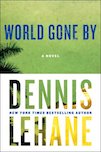 World Gone By: A Novel
World Gone By: A Novel
By Dennis Lehane
William Morrow 2015
I’ve been reading Dennis Lehane for a long time: A Drink Before the War, Gone, Baby, Gone, Mystic River, and others. So I was excited when Priscilla came home with this novel. She has great taste in books.
Stephen King calls World Gone By, “The best gangster novel since The Godfather.” He might be right, but then I can’t think of many other gangster novels.
World Gone By is set in 1940s Tampa, with a side excursion to Cuba at the end. Joe Coughlin is a gangster. He used to run a gang, but now he’s a consigliere, a nod towards respectability. He’s a suit, a guy who is invited to tony social events, has his picture taken with politicians, goes to church every Sunday.
The problem with that is that he is still immersed in a world of crime, exploitation, violence, corruption — you name the sin. A single father, he loves and cares for his son. He wants to do the right thing, if that’s possible in a world full of people doing the wrong thing. But he’s haunted by what he has done, what he does, what he will do.
Turns out it’s not possible to do the right thing in a world full of people doing the wrong thing. But I don’t want to give any more away.
This is a novel with taut prose, great noir similes, and moral complexity. Highly recommended.
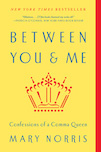 Between You & Me: Confessions of a Comma Queen
Between You & Me: Confessions of a Comma Queen
By Mary Norris
W. W. Norton & Company 2015
This is an interesting and funny book written by a woman who was a copy editor at The New Yorker for over thirty years.
There’s a lot of talk about style generally, grammar specifically, and punctuation even more specifically in Confessions of a Comma Queen, but as the word “Confessions” in the subtitle suggests, it’s not a book about grammar. If you need to know how to punctuate a restrictive clause, go to Strunk and White’s Elements of Style or Fowler’s Modern English Usage (though, if you search long enough you will find that information in this book, too).
Instead this book reads more like a book by Bill Bryson. It’s partly a memoir, the story of the author’s childhood in Cleveland, college years in New Jersey, a stint working at the Cleveland Costume Company, and lots of great stories about working at The New Yorker. But the pleasure of the book lies in the way the narrative gets distracted and heads off into a long, fascinating, funny digression about almost anything. A reference to the kind of pencil she used when working as a copy editor, for example, leads to stories about attending a pencil party in New York (who knew there was such a thing?) and her visit to the Paul A. Johnson Pencil Sharpener Museum in Logan, Ohio.
A chapter putatively about the hyphen leads to a discussion of “the holiest hyphen in literature . . . the hyphen in Moby-Dick, which in turn leads to the story of a visit to Melville’s house in the Berkshires, which leads to a short, interesting look at Melville’s life before coming back to the original subject, the hyphen.
It’s a good read. As you enjoy it, this book will also teach, or remind, you about the conventions of English punctuation. That’s a good thing.
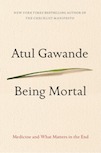 Being Mortal: Medicine and What Matters in the End
Being Mortal: Medicine and What Matters in the End
By Atul Gawande
Henry Holt and Company 2014
This is a wise, moving, important book. Everyone should read it, but it is especially important for anyone who — because of their own situation or the situation of someone they love — is coming up against the limits our mortality imposes upon us.
This book is a critique of the way medicine responds to the challenges of aging, a critique written by a physician based upon the treatment his patients have received and upon his experience of his own father’s decline and death. Gawande argues that, “We’ve been wrong about what our job is in medicine. We think our job is to ensure health and survival. But really it is larger than that. It is to enable well-being. And well-being is about the reasons one wishes to be alive.” In other words, doctors, their patients, and the patients’ families and loved ones, need to be purposeful about deciding when their attempts to stave off death result in a life not worth living.
Gawande’s thinking about this topic leads him through stories of the end-of-life experiences of patients he has treated, an illuminating short history of elder care, and passages of memoir about his own experience as a son. Gawande is a thoughtful and literate writer, and he does a wonderful job of knitting these disparate threads into a powerful argument about what matters most in the closing years of life.
I find myself thinking more and more about well-being, how to define it and how to achieve it. As a college president, I mainly think about how St. Olaf can help students to achieve well-being and how we can measure our success at doing so. This book is a reminder that the quest for well-being is life-long and that our definition of that state may change as we age and our circumstances change.
Just after finishing this book I read a moving essay in The Wall Street Journal by Fay Vincent, the former Commissioner of baseball called “Life as the Ninth Inning Nears.” It’s a reflection on what matters most to him in his last years. “I only want to be at peace and in normal discomfort. Age makes life simple until it does not.” Gawande would have ended that last sentence after the word “simple.”
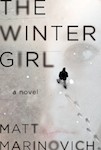 The Winter Girl: A Novel
The Winter Girl: A Novel
By Matt Marinovich
Doubleday, 2016
This is another in the series of novels I have been reading about dysfunctional marriages between really terrible people that end very badly. (Including Gone Girl and The Silent Wife, discussed elsewhere on my bookshelf, and Hausfrau, which I haven’t commented on.) There wasn’t a plan to go down this path: it just started with Gone Girl and one thing led to another.
The Winter Girl is narrated in the first-person by Scott, a failed wedding photographer, married to Elise, a speech therapist who doesn’t like her work. Elise’s father is dying, and the couple has moved from their apartment in Brooklyn into his house in the Hamptons to be near him. Elise spends most of her time at the hospital.
Scott has time on his hands, and that’s not a good thing. There is a vacant house next door that attracts his curiosity. Curiosity leads to breaking and entering. The act of opening the doors of that vacant house also opens the doors of some terrible family secrets that, once they see the light of day, lead to brutal consequences. You could call this novel a thriller, except that you get too creeped out by the events that are meant to create drama.
The pleasure of reading a novel with a first-person dramatized narrator lies in watching the extent to which the narrator understands what is happening and takes responsibility for his part in the action. Scott doesn’t do well at either of those things.
The Winter Girl is not for the faint-hearted, so if you read it be prepared for some gruesome scenes and some appalling behaviors.
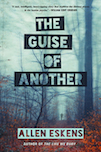 The Guise of Another
The Guise of Another
By Allen Eskens
Seventh Street Books, 2015
Allen Eskens is a criminal defense attorney turned detective novelist. The Guise of Another, his second novel, is set in Minnesota, and readers familiar with the Twin Cities metro will recognize many of the settings where its action occurs.
The novel begins with a couple having reckless sex while the man is driving through the warehouse district. Surprise! They lose control and crash head-on into a Porsche driven by one James Erkel Putnam, who dies. But it turns out that the driver of that Porsche is not James Erkel Putnam. It was someone who had assumed his identity. Who had done that? And why?
The man seeking answers to these questions is Alexander Rupert, a detective on the Minneapolis Police Force. Alexander is not doing well. He was a member of the Force’s elite Narcotics Task Force, but the Task Force is under investigation by a Grand Jury for corruption, and he has been subpoenaed to testify. Meanwhile, he’s reassigned to the Forgery and Frauds Unit, where “He wore this new job like a suit one size too small, a suit he swore he would never claim as his own.” He’s treated as a pariah by the other members of the unit, who assume he’s dirty because he was with the Narcotics Task Force. Moreover, it’s pretty clear that his wife is having an affair. Frustrated at work and humiliated at home, he’s certain that even is he is exonerated by the Grand Jury, “that exoneration would not completely pull him out of the hole he’d fallen into.”
But he’s a detective, so when he is presented with the death of a person who assumed someone else’s identity he sets to work to figure out what is going on. Lots, it turns out, involving a multinational corporation doing sub rosa security work for the government, an alluring blonde, and a deadly assassin, not to mention the continuing drama in Rupert’s personal life, which becomes more and more entangled with the investigation.
This novel is a great example of a crime novel where the detective is flawed — Rupert’s troubles are of his own making — and where the arc of the narrative not only leads you to the solution to the crime but also answers the question whether the detective will square up or not.
Highly recommended.
 The Bullet
The Bullet
By Mary Louise Kelly
Gallery Books, 2015
I wish I could report that books I receive as gifts from family and friends are usually on topics like the subtle interplay of light and shade in seventeenth-century French landscape painting or pragmatism in the philosophical works of William James. They aren’t. My family and friends know how much pleasure I derive from reading thrillers and crime fiction, and that’s what they tend to give me. (The exception would be my wife, Priscilla, as noted in my comments on books she has given me elsewhere on this bookshelf.)
Christmas 2015 brought Mary Louise Kelly’s second novel, The Bullet. The protagonist, Caroline Cashion, is a professor French literature at Georgetown. She is an introvert. She lives alone. She spends time with her family, two brothers and two loving parents. She likes tea. “I read with my legs tucked beneath me, in a soft, blue armchair in a sunny corner of my office nook on the fourth floor. Most nights you will also find me there, sipping tea, typing away, grading papers.”
I’m inwardly groaning as I read this sentence on the first page of the novel. I don’t have much — or any —patience with the genteel strand of crime fiction, what some people call “cozies.” A tea-drinking protagonist who likes soft armchairs and sunny nooks—not my kind of novel.
But everything changes suddenly when Professor Cashion, who has been experiencing pain in her right wrist, has an MRI. It discloses that there is a bullet in her neck, lodged up against her spine. She has spent her life drinking tea and reading in soft armchairs placed in sunny nooks. How could this be?
The search for an answer to that question brings sudden and dramatic changes to her life. For example, she learns that the parents who raised her are not her birth parents. Her biological parents were murdered in the kitchen of their home in Atlanta when she was three years old, and she was there when it happened. Her past has been kept secret from her all these years, and the discovery of it changes her. Those changes are manifest in the things she thinks, says, and does in the rest of the novel, which tells how she uncovered what happened that morning in an Atlanta kitchen and what she does with that knowledge.
The Bullet is a good read. I recommend it.
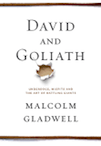 David and Goliath: Underdogs, Misfits, and the Art of Battling Giants
David and Goliath: Underdogs, Misfits, and the Art of Battling Giants
By Malcolm Gladwell
Little, Brown and Company, 2013
I think Malcolm Gladwell is one of the most interesting commentators on modern life writing today. He’s like David Brooks, the New York Times columnist: each new book takes on an important topic, looks at it from an original viewpoint, and leaves the reader with fresh approaches to and new insights into common topics.
David and Goliath starts off with the familiar Old Testament story. Although David appears to be the underdog—young, slim, untrained in the arts of war, armed only with a slingshot — in fact he entered into combat with Goliath, the heavily armored giant, as the favorite because David fought in a new way and with new weapons. Gladwell concludes, “There is an important lesson in [this story] for battles with all kind of giants. The powerful and the strong are not always what they seem.” The rest of this book elaborates on that insight.
The most interesting chapter of the book for me was the chapter on the assumptions that go into college selection. Gladwell tells the poignant story of Caroline Sacks, a young woman who loved science, studied hard, excelled in high school, and gained admission to both Brown University and the University of Maryland. She chose Brown for the prestige and the promise of an exciting opportunity for intellectual growth. It didn’t work out. Disappointed at her failure to achieve in science courses at Brown at the same level as other students, she left the sciences, despite her passion for them and her demonstrated ability.
It turns out that there is a scholarly literature on the topic of whether it’s better to be a big fish in a little pond or a little fish in a big pond. The answer, at least as far as persisting in college goes, is that it’s better to be a big fish in a little pond. Gladwell shows that, “The more elite an educational institution is the worse students feel about their own academic abilities,” because they are measuring themselves against other very gifted students. This affects your desire and ability to persist in your course of study because when your self-concept takes a beating every day in class, so does your “willingness to tackle challenges and finish difficult tasks.” Gladwell quotes a psychologist who wryly observed that, “if you want to see the positive effects of elite schools on self-concept … you should be measuring the parents.”
This book will unsettle you if you are in a position, or if you work at an institution that is in a position, of privilege and power. If you are a striver, or at a striving institution, you will find it energizing. Either way, I recommend it highly.
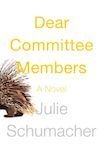 Dear Committee Members: A Novel
Dear Committee Members: A Novel
By Julie Schumacher
Doubleday, 2014
This is a very funny book.
It’s a satire of academics, in the tradition of Kingsley Amis’s hilarious Lucky Jim, Richard Russo’s Straight Man, and David Lodge’s Trading Places and Small World. Unlike those titles, this is an epistolary novel, which means that it is told entirely through letters. They are letters of recommendation, all written by Jason T. Fitger (he sounds like a pill already, doesn’t he?), Professor of Creative Writing and English at the fictional Payne University.
Fitger published one novel two decades ago that received a lot of attention and, subsequently, two that did not. He’s not writing anything now. Instead, from the safety of his tenured position, he is devoting himself to expressing his frustration with the world, with his students, with his colleagues, with administrators at Payne University (it’s a pain to teach there?), and ultimately with himself. But he does it with a kind of joyous anger and beautifully expressed frustration that makes you glad he’s so unhappy.
(I once had a Dean who remarked that English professors were the hardest faculty to deal with because they were so gifted at expressing their discontent.)
Many epistolary novels contain letters between two people, or among more than two. All of the letters in this book are written by Fitger, and they are all letters of recommendation, though to different people. He writes more than once to his ex-wife (who works at the Law School at Payne), to the woman he had a dalliance with (who works in Financial Aid), and to the other alumni of The Seminar, a course they all took in graduate school. Elements of a plot do emerge from these and other letters, but this isn’t a novel you read for the plot: you read it to find out what new thing exasperates Fitger and how brilliantly and how funnily he will express that exasperation.
Fitger isn’t all bile. His letter of recommendation for Oliver Postiglione, an undergraduate who is applying for a summer job at Flanders Nut House in Glass Lake, Wisconsin, evokes a sweet and melancholy memory of Fitger’s own youthful summer of employment there: “I recommend him to you warmly and without hesitation, in part because writing letters of reference such as this one allows me to reinhabit, if only fleetingly, the pensive, knock-kneed person I once was and to advocate for that former version of myself.” But, being Fitger, he can’t help but add, “I hope for the sake of Mr. Postiglione’s dignity your establishment no longer requires its most junior employee to dress as a human cashew.”
Julie Schumacher won the Thurber Award for American Humor for this novel, the first woman to win the award. It was well-deserved.
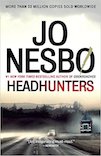 Headhunters: A Novel
Headhunters: A Novel
By Jo Nesbø
Translated by Don Bartlett
Vintage Crime/Black Lizard, 2011
This is a creepy novel. I couldn’t put it down.
When people think of Jo Nesbø, they most likely think of the Harry Hole novels, a series about a police detective in Oslo who drinks too much coffee, smokes too much, has disastrous relationships, and basically makes the American hard-boiled detective look like the Easter Bunny.
Headhunters is nothing like those novels. The first-person narrator is Roger Brown, who is a headhunter — i.e. he runs an executive search firm. I predict that you will count him among the most memorable first-person narrators you have ever encountered. He is absolutely vile, but what makes him so creepy is that it’s not clear that he recognizes that fact. He is absolutely candid about his vile motives, plans, strategies, and actions. But it’s all matter-of-fact, whether he’s talking about what a great head of hair he has, about his sensitivity about being short in stature (when he introduces someone he first tells you how tall that person is), about how he refuses to “give his wife a baby,” about his mistress, about the kind of suits he wears, about manipulating his clients and job seekers — you get the idea. He is so unaware of any hierarchy of moral considerations that he seems ultimately clueless.
Brown is an art thief on the side. He gets wind of a recently discovered painting by Rubens that, if he could steal it, would bring him a vast sum. Its owner is the former CEO of a company who Brown wants to recruit to a CEO position he has been hired to fill. He proceeds to try to accomplish both of those jobs, and that unleashes a world of troubles — murder, infidelity, dead dogs, hiding in the tank underneath an outhouse, and mutilating corpses — among other things. (If you’re squeamish, you might give this novel a pass.) It turns out that he is not clueless; in fact, he is extraordinarily resourceful. It helps to have no moral sense of any kind.
You want to watch first-person narrators very carefully. Sometimes they completely misunderstand the significance of the events they are reporting, sometimes they deliberately color the narrative to serve their own ends, and sometimes they play tricks on you. Brown is this third kind of first-person narrator. Don’t trust him.
But do read this book, both to find out what happens (an excellent reason to read any book) and to meet a narrator you won’t soon forget.
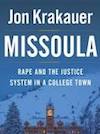 Missoula: Rape and the Justice System in a College Town
Missoula: Rape and the Justice System in a College Town
By John Krakauer
Doubleday, 2015
This is a harrowing but important book about widely held myths about rape that color how the justice system treats victims and perpetrators of rape. The book pursues that topic by focusing on a series of sexual assaults at the University of Montana between 2010 and 2012. They were so egregious, and they were handled so badly by the University, the campus police, the Missoula police department, and the county attorney’s office, that the Department of Justice finally had to intervene.
Overlaid on the topic of sexual assault generally and of sexual assault on campuses particularly is a third element: the presence of an athletic culture at the University and in greater Montana generally that vastly complicated an already highly problematic environment. Members of the football team were implicated in a number of the sexual assaults described in the book, and football fans and boosters constituted a chorus that played an important role in the resolution of those cases.
Many passages of this book are difficult to read because they provide detailed descriptions of sexual assaults, but the most harrowing passage — which presents the core of the problem Krakauer is writing about — comes from Chapter Ten, which describes research conducted by means of interviews, that reveals that male college students who had committed rapes “had absolutely no sense of themselves as rapists,” because they think of a rapist as someone who jumps out from behind a bush wearing a ski mask, not someone who, for example, takes advantage of an incapacitated person at a party. One of the students interviewed described a practice of his fraternity: look out for attractive first-year women, invite them to a party making it sound like a special honor to be selected, serve them sweet drinks with lots of alcohol with the goal of making them incapacitated, and when they are incapacitated to have sex with them. This student, the researcher reports, “had no idea that what he was describing … were acts of rape.”
Most of the many figures in this book who failed the victims of rape were probably acting as best they could in light of what they knew or believed they knew. Krakauer’s contribution in this book is to disrupt common beliefs about such matters as what constitutes rape, who rapes, who are the victims, and what are the effects of rape.
Readers familiar with Krakauer’s other books, especially Into Thin Air may be surprised by what I would describe as a lower octane prose style in Missoula. Significant portions of the book consist of transcript or summaries of legal and extra-legal proceedings, interviews, and summaries of research findings. But there is a gathering sense of urgency as you read that gives the book its own narrative energy.
I recommend this serious and important book.
 Cooking on the Line: From Food Lover to Professional Line Cook
Cooking on the Line: From Food Lover to Professional Line Cook
By Wayne Cohen
Harper Collins, 2011
This is another in the series of books I’ve been reading by working cooks. (See Sous Chef; Yes, Chef; Back of the House; Knives at Dawn; Blood, Bones, and Butter; and Heat, all previously discussed on my bookshelf.)
Occasionally I fantasize that I could make it as a line cook in a professional kitchen. Then I read one of these books and confront reality: I’m a decent home cook, but I’m not ready for prime time.
Wayne Cohen was a college football player, an executive at a software company, an entrepreneur, and then the president of a cookie company. He was at a point in his life when he could do what he wanted, which was to be a line cook in a restaurant. It’s interesting that a guy who was obviously accustomed to independence and to leadership roles didn’t want to be the chef: he wanted to cook on the line, be the guy who received the orders from the servers, cooked the hot items, and sent them to the expediter to be plated and served. He wanted to be the guy who responds “Yes, Chef” to commands from the boss of the kitchen.
Cohen started in a German restaurant in Chicago and eventually made it to some of the best-known kitchens in that city, including Coco Pazzo and Piccolo Sogno. This book details that journey. It’s full of the kitchen drama that’s a staple of books like this: there’s a rush of customers, someone on the kitchen staff has a melt down, everybody gets behind, pans are flying everywhere, “We’re in the weeds!” and so forth. Lots of fun.
It’s also fun to read Cohen’s take on how kitchens are run. As a business executive he garnered a fair amount of administrative experience and organizational know-how. There are wonderful cooks in the food and beverage business, but apparently there are also lots of feckless people, and Cohen is always thinking “Wouldn’t it be better if we did it another way?”
Reading this book will make you hungry, but that’s okay, because it has lots of recipes. Enjoy!
 The Road to Character
The Road to Character
By David Brooks
Random House, 2015
I’ve long admired David Brooks as a columnist, a commentator on The PBS Newshour, and as an author, so I was excited to be given a copy of his new book by my wife, Priscilla, who gives me so many good books.
This is a serious book. It’s not that Brooks’s previous books have been lightweights — they haven’t — but there is a gravity and gravitas to The Road to Character that sets it apart from his previous works and from most other books written for the general public.
Brooks begins by distinguishing between “résumé virtues” and “eulogy virtues.” The former are the “skills that you bring to the job market and that contribute to external success”; the latter are “the virtues that get talked about at your funeral, the ones that exist at the core of your being.” He then, borrowing a phrase from Rabbi Joseph Soloveitchik, describes two “opposing sides of our nature”: Adam I and Adam II. Adam I is the side that focuses on the résumé virtues; Adam II focuses on the eulogy virtues. “While Adam I’s motto is ‘Success,’ Adam II experiences life as a moral drama.”
Brooks argues, and he is right, that “we live in a culture that nurtures Adam I, the external Adam, and neglects Adam II.” In an unusually revealing passage, Brooks describes himself as naturally disposed towards shallowness and talks meaningfully about his struggle to elevate the Adam II side of his nature. “I wrote this book not sure I could follow the road to character, but I wanted at least to know what the road looks like and how other people have trodden it.”
Perhaps you would like to argue with Brooks’s contention that we live in a culture that nurtures Adam I. If so, I recommend the section of Chapter One called “The Shift.” Here’s an example of what you will encounter. In 1950 Gallup asked high school seniors whether they considered themselves to be important people. Twelve percent said yes. Asked the same question in 2005, 80 percent of high school seniors said yes.
The book then proceeds to describe and comment upon the lives of people Brooks considers exemplary of individuals who have elevated the Adam II side of their nature and thus achieved and displayed what he calls “character”: Frances Perkins, Dwight Eisenhower, Dorothy Day, George Marshall, A. Phillip Randolph, George Eliot, Augustine, Samuel Johnson. It’s a fascinating list of historical figures, all of whom are the subjects of lengthy biographies, but the point of Brooks’s analysis isn’t to repeat the biographer’s work. He tells you enough about the life so that you understand why this person is included in the book, but his focus is on the struggle that person engaged in on the road to character.
Ultimately, his analysis praises as pathways to character traits that we don’t often hear celebrated today: self-doubt, obedience, public-spiritedness, service, suffering, moderation.
Brooks writes deeply and meaningfully about love in the chapter on George Eliot, about allegiance to institutions in the chapter on George Marshall, about ambition in the chapter on Augustine, and so on. Those meditations are the best part of the book. As a college president I often think about institutions, why they matter, how to care for them, how to build support for them. Brooks has written the best description of what it means to be institution-minded that I have ever read. Here’s a part of it: “Life is not like navigating an open field. It is committing oneself to a few of the institutions that were embedded on the ground before you were born and will be here after you die. It is accepting the gift of the dead, taking on the responsibility of preserving and improving an institution and then transmitting that institution, better, on to the next generation.”
This is an improving book. I recommend it.
 Red Sparrow
Red Sparrow
By Jason Matthews
Scribner, 2013
I was driving somewhere and heard an interview with this author on NPR. The interviewer had high praise for the novel, it sounded interesting, so I read it.
Red Sparrow is a spy novel. It revolves around a cat and mouse game being played between America and Russia involving double agents. Thus, even though it’s set in present times — Putin himself is a character — it has a Cold War feel to it. The intricate plotting will keep you engaged.
Its most appealing feature is all of the “tradecraft” in the book. The author spent many years working for the CIA. That must be the source of the authentic-sounding details about everything from disguises to various approaches to following people without being noticed, to how to recruit counter-agents, and so on.
Its author is often described as the new John Le Carré. He’s not. He is Le Carré’s equal in depicting tradecraft but not in exquisite psychological portraits of his characters. Perhaps it’s attributable to the general coarsening of culture since LeCarré was in his prime, but this novel relies a lot more on physical and sexual violence than the Smiley novels ever did.
A strange feature of this novel is its incorporation of recipes into the narrative. Every chapter refers in some way to food — the spies are eating in a restaurant, somebody remembers their grandmother’s best dish, or whatever. Then, when you get to the end of the chapter, there is the recipe for that dish. It’s odd that they just appear there without explanation or discussion, and even odder that the recipes don’t include any amounts for the ingredients of the dish. What’s up with that?
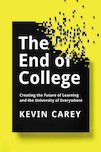 The End of College: Creating the Future of Learning and the University of Everywhere
The End of College: Creating the Future of Learning and the University of Everywhere
By Kevin Carey
Riverhead Books, 2015
Kevin Carey, smart, funny, and mean, directs the education policy program at the New America Foundation. The End of College is an interesting book that I recommend to everyone. Part memoir, part history of higher education in America, and part jeremiad, it critiques the modern university on a host of grounds — cost, efficiency, quality of outcomes, to name a few — and offers a vision of a different and better way to do higher education.
Carey locates the problem in what he calls the “hybrid university,” the kind of institution that resulted from a failure in America to choose between the competing demands of practical training, research, and liberal arts education. “Instead of choosing,” Carey argues, “American universities decided to do all three things at once, with consequences that last to this day” (p. 29). Among those consequences, the worst is the “hybrid” university’s lack of value for and attention to teaching undergraduates.
Carey enrolled in a MOOC — massive, open, on-line course — offered for free by MIT. It was a terrific course offered by a legendary instructor for free. Why would anybody pay for such a course when it can be had for free? Moreover, since at their best such MOOCs employ the discoveries of neuroscience and cognitive science to recognize how students are progressing in their learning and then use that information to adapt to their individual circumstances the information that they are given and the problems they are asked to solve, the learning outcomes are much better than for students in a large lecture course that they paid for at a university. And it’s on-line, it’s available any time to anyone, and it’s free. It’s the University of Everywhere.
The university as we know it today, Carey, argues, is already obsolete but doesn’t know it. It will be replaced by organizations that offer better learning outcomes for less cost, that create faster and more rational paths to the credential showing what students have learned, and that are innovative and adaptive to their environment.
Much of Carey’s critique of higher education generally in America is fair. Much of it is not relevant to liberal arts colleges like St. Olaf where, for example, there is a relentless focus on teaching undergraduates. So, it’s easy while reading The End of College to dismiss its argument not only because of Carey’s penchant for broad generalizations but also because of his dismissive, arrogant tone.
But that would be a mistake. This is a book to take seriously. After reading it, the best question to ask yourself would be, “What can we learn from this critique?”
 Locus of Authority: The Evolution of Faculty Roles in the Governance of Higher Education
Locus of Authority: The Evolution of Faculty Roles in the Governance of Higher Education
By William G. Bowen and Eugene M. Tobin
Princeton University Press, 2015
This is an important book written by two important figures in American Higher Education.
William Bowen is the former President of Princeton University and then of the Andrew W. Mellon Foundation, the leading philanthropic institution providing guidance and support for liberal arts colleges; Eugene Tobin is the former President of Hamilton College and the leader of the Mellon Foundation’s programs to support liberal arts colleges.
American higher education is undergoing a dramatic re-thinking of most of its central tenets: What is a degree? How should progress towards the degree be measured? What is the return on investment in higher education, and how should that return be understood? Is the Federal government’s huge investment in financial aid for students paying off? What should a college faculty look like? Is tenure still a good idea? How much should college cost? Most importantly, as these questions get debated, who gets to decide what at America’s colleges and universities?
Most of these questions have been burbling under the surface for years, but they have been forced into the open by economic pressures, policy concerns, and the concerns of students and their families. This book takes them on.
The first part of the book might seem like inside baseball to readers who are not in higher education. It is a historical survey of the evolution of colleges and universities in American since their founding in the eighteenth century (mostly). The survey concludes that the means by which colleges and universities have been governed in America over time has varied depending upon the external environment. In short, there is no one right or wrong model of governance; instead, the challenge is to fine-tune governance to accommodate the realities of the world in which higher education operates at the moment.
This argument will be unwelcome to those who think there is only one right model of governance. It will be welcome to those who seek to adapt governance models to the exigencies of the moment.
The second part of the book then offers thoughts about how governance ought to look in 2015. The answer is that it should continue to be a model with shared opportunities for input into the discussion, that there needs to be clarity about where discussion ends and decisions get made, and by whom, and that higher education governance needs to be flatter, more nimble, and more adaptive to reality.
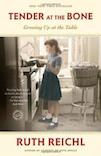 Tender at the Bone: Growing Up at the Table
Tender at the Bone: Growing Up at the Table
By Ruth Reichl
Random House, 1998
Ruth Reichl was editor-in-chief of Gourmet magazine for ten years, and she is a terrific writer — not just about food. I read and loved her memoir Comfort Me with Apples: More Adventures at the Table some years ago, so when I was at loose ends for something to read recently I picked up Tender at the Bone. It didn’t disappoint.
Reichl grew up in eccentric circumstances in New York. Her father was a quiet, self-effacing book designer, her mother a commanding and demanding presence who was afflicted with bipolar disorder, and she was in many ways left to raise herself. This is a book about growing up, not a book about food, but much of the narrative revolves around food and cooking: her mother’s parties where the food was not properly cared for and everybody went home sick; learning to cook beside Aunt Birdie’s cook Alice; hanging around the kitchen with her own family’s cook, Mrs. Peavy; working in a restaurant in Berkeley early in her marriage, and so on.
For a variety of reasons, many of the people portrayed in this book aren’t happy, Reichl among them, and as a result they face many challenges. You could think of it as a book about resilience: who has it and who doesn’t and why. In the last scene in the book, Reichl is driving over the Bay Bridge in San Francisco with a friend, having just successfully beaten back a panic attack about driving over this big bridge. They are talking about her friend’s victory over alcoholism. “You’re amazing,” Reichl tells her friend. “Oh, hon,” the friend replies, “Nobody knows why some of us get better and others don’t.” That’s a key subject this book explores.
Don’t read it if you’re only interested in mining it for recipes. It really is a memoir, not a food book. Nevertheless, there are some homey recipes you might want to try: Miriam Reichl’s Corned Beef Ham, Aunt Birdie’s Potato Salad, Alice’s Apple Dumplings with Hard Sauce, Weiner Schnitzel, and Lemon Soufflé, and more. Read it instead for a candid, funny, often sad account of growing up around food.
 Cowboys and East Indians
Cowboys and East Indians
By Nina McConigley
FiveChapters Books, 2013
This excellent collection of short stories by an Ole (Class of ’97) was a gift from my friend Dr. Maggi Murdock of the University of Wyoming, who met the author at a book signing in Wyoming and sent me an autographed copy that I am proud to have.
Nina McConigley, born in Singapore and raised in Wyoming, is the daughter of an Irish father and an Indian mother. If you think this sounds like an interesting mix, you’re right. The stories in this collection are about that mix, focusing particularly on the intersections of the India and Wyoming as lived out by Indians and Americans in both places.
On the jacket cover of Cowboys and East Indians author Kevin Wilson describes McConigley’s stories as revealing “grace and understated power,” and he adds that “she knows the exact moment to let wildness rush into the story.” I think he captures these stories beautifully. They are quiet, understated, but at the same time relentless in their probing of the characters. Most of the characters in these stories aren’t happy, successful, well-adjusted people. For a variety of reasons they tend to be on the outside looking in, whether an American in India or an Indian in America.
McConigley can also be very funny. Perhaps “wry” is a better adjective. She sees the intentional and unintentional humor in the situations in which her characters find themselves. That perception is tempered by sympathy that makes these stories very moving.
You should read them.
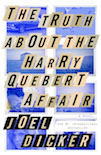 The Truth About the Harry Quebert Affair
The Truth About the Harry Quebert Affair
By Joel Dicker, Trans. Sam Taylor
Penguin Books, 2014
Dr. Walt Carlson, a St. Olaf parent and a great reader, recommended this novel to me.
Joel Dicker, a Swiss writer, first published this novel to international acclaim in 2012. Penguin brought out the English translation last year. The Truth About the Harry Quebert Affair is a story about a cold case. A famous writer — Harry Quebert — living in a big house in a small town in New Hampshire hires some landscapers to plant hydrangeas in his yard. When they dig the hole where the hydrangeas are to be planted, they uncover a skeleton and the manuscript of a novel. It turns out to be the remains of a fifteen-year old girl from the town who disappeared thirty-three years ago.
The job of uncovering how she died and why she’s buried with a manuscript falls to Marcus Goldman — the narrator, also a writer, and the protégé of Quebert — because the manuscript in the grave was written by Quebert, and it turns out that he and the girl — the daughter of a pastor in town and half Quebert’s age — were in a relationship that was celebrated in the manuscript. Quebert is immediately reviled for as an adult having a relationship with a teenager and is arrested for the murder. Goldman, convinced of Quebert’s innocence, begins an investigation into the girl’s disappearance.
But much of this novel is about writers, writing, and publishing, not about the cold case at all. Goldman was Quebert’s student in college. After writing an acclaimed best seller he is imprisoned by writer’s block and has come back to his college mentor for help. Through the course of the novel, which jumps back and forth in time, Goldman and Quebert go back and forth about what good writing is, what writers do, how they work, and why they write. Dicker has been compared to Nabokov, and I can see why. This is a novel about someone who wrote a different novel who is, in turn, the subject of another novel. It’s very “meta” as people would say now.
The crime plot is compelling and the meta-discourse about writing engaging (though you have to put up with a lot of writerly self-importance). I recommend it.
 Excellent Sheep: The Miseducation of the American Elite & the Way to a Meaningful Life
Excellent Sheep: The Miseducation of the American Elite & the Way to a Meaningful Life
By William Deresiewicz
Free Press, 2014
This is a book I should have loved, because it argues that the best kind of college education is precisely the kind we provide at St. Olaf College.
After three chapters in which he excoriates the education provided at Ivy League universities (Deresiewicz used to teach at Yale), the author offers an ironic vision of what an undergraduate education ought to look like:
- “Curricula are designed to give coherence to the educational experience and to challenge students to develop a strong degree of moral awareness. Professors, deeply involved with the enterprise of undergraduate instruction, are committed to their students’ growth and insist on maintaining the highest standards of academic rigor. Career services keep themselves informed about the broad range of postgraduate options and make a point of steering students away from conventional choices ….”
But then he continues:
- “I’m kidding of course. None of this is happening, and none of it will happen without a fundamental change in higher education. Schools do little or nothing to wake students up from the values and habits they bring with them from high school …. Kids are basically handed a course catalog and told to figure it our for themselves.”
This is what’s wrong with this book. It’s not a thoughtful discourse on higher education in America. It’s a rant, full of gross generalizations like those in the preceding paragraph, by somebody who is angry that his values aren’t — in his view — mirrored by society at large. This becomes increasingly evident as you read the book and manifestly clear in the final chapter, which opens into a general critique of contemporary American values. We are in “an era of unprecedented national decline”; it’s time to “plot … another kind of society altogether”; “George W. Bush was the “apotheosis of entitled mediocrity”; Condoleeza Rice and Justice Elena Kagan are “resume jockeys devoid of discernible passion carefully maneuvering their way to the top”; Michael Dukakis is “a high-IQ moron if there ever was one”; President Obama’s “failure as a leader is precisely his conception of what is possible, his meek acceptance of the limits of the status quo.”
This is the language of a bully. It’s not the kind of sophisticated, nuanced analysis actually produced by that the liberal education the author praises in his book.
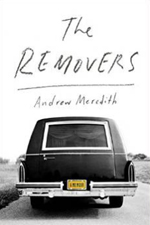 Removers: A Memoir
Removers: A Memoir
By Andrew Meredith
Scribner and Sons, 2014
I came to this book through a review in The Wall Street Journal, downloaded it, and read it in an afternoon. The Removers begins with a scene that occurred near the end of the period of the author’s life described in this memoir. He and his father work for a company that contracts with mortuaries to go and pick up the bodies of persons who have just died and take them to the funeral home. The opening scene is pretty grisly, because this particular corpse has been left unattended in a hot room for a long time. I won’t go into the details.
How does a person end up in this line of work? And what does it tell us about him?
The author grew up in a close-knit family in a close-knit neighborhood in Philadelphia. His father, a poet, taught English at a college in Philadelphia. His mother worked in the home. He had a great kid sister. It was a loving environment full of neighbors and relatives, and Catholicism.
Then one day comes the expulsion from the Garden: his father has been fired for inappropriate relationships with female students. A deep-freeze sets in between the author’s mother and father, yet they stay together. So now the family is stuck in a claustrophobic row house, in financial straits, with parents who don’t speak to one another — indeed, are rarely in the same room together — and kids who are shocked, perplexed, sad, upended. The postlapsarian world is not so great.
The effect on the kids is predictable. The author has a semi-normal life outside the home growing up, but he’s off-kilter. He flunks out of several colleges, drifts around listening to obscure pop music, partying, drinking too much with his buddies, and generally failing to progress. His relationships with women are disastrous. Think John Cusack’s character in the film High Fidelity.
One day, in an attempt to get on a better path, he asks his father to help get him a part-time job at the place where his father had gotten work after his professorial days ended: the company that collects and delivers dead bodies.
This is a memoir about coming of age, about loss and repair, about the weights we all carry around and how we deal with it, about parents and children, about fathers and sons. It’s sad, it’s grisly (the discussion of cremation was just too much), and yet it ends — if not well, at least with promise.
(The author’s father is Joseph Meredith, and his most recent collection of poems is called Inclinations of the Heart.) The Wall Street Journal calls it a “rich companion” to this memoir.
Back to the Bookshelf
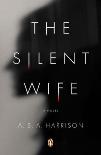 The Silent Wife
The Silent Wife
By A.S.A Harrison
The Penguin Press, 2013
This is a novel I have been seeing featured in airport bookstores for months. I’ve picked it up, put it down, and made lame jokes about the title to my wife Priscilla, countless times. In my last trip through an airport I bought and read it.
The novel divides into two parts, titled “Her and Him” and then just “Her.” In Part One, the chapter titles are “Her,” then “Him,” then “Her,” then “Him,” and so forth. Part two has no chapter titles. If you infer from this that the novel is about the relationship between two people and that it goes badly, you wouldn’t be far off.
Jodi Brett and Todd Gilbert live in a lovely apartment in Chicago looking out onto Lake Michigan. She is a therapist — attractive, fit, stylish, a great cook. Very disciplined, very self-contained. In fact, in the opening paragraphs we learn that “The sense of containment is what she loves most about living here, in her aerie on the twenty-seventh floor.” By contrast, Todd, a real estate developer, is an entrepreneur — a risk-taker with big appetites and a robust sense of the importance of his own needs. They met when she crashed her car into his in a rainstorm. H-m-m-m-m-m-m. Looking at the two of them, considering the metaphor, what could go wrong with this picture?
We don’t have to wait long to find out. In the second paragraph of the novel we are told that Jodi “is deeply unaware that her youthful resilience — which in her twenty-year marriage to Todd Gilbert has been slowly eroding — is approaching a final stage of disintegration, that her notions about who she is and how she ought to conduct herself are far less stable than she supposes, given that a few short months are all it will take to make a killer out of her.”
I like novels that begin by telling you what is going to happen. Ruth Rendell’s A Judgement in Stone is a great example. Relieved of anxiety about plot, the reader is free to focus on the journey, not the destination.
The journey in The Silent Wife takes time, as the layers of Jodi’s history get slowly excavated while Todd careens down a road of bad decisions. You realize right away that Jodi has issues — the silence referenced in the novel’s title is definitely not a good thing — but you don’t understand how she got that way until late in the novel. By then it’s too late for Todd and, at this point in her life, too late for Jodi, too.
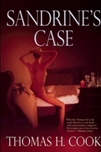 Case
Case
By Thomas Cook
The Mysterious Press, 2013
After a busy Commencement Weekend, followed by a busy Reunion Weekend, I was looking for some downtime with some crime fiction. I ran across this novel in the house and read it in an afternoon.
Samuel Madison is an English professor at Coburn College, near Atlanta. He is arrogant, pedantic, cynical, and cold. Why would he be that way? Because his life isn’t living up to what he had envisioned for himself. He doesn’t want to be teaching at a small, liberal arts college — with what he says are undistinguished students. In fact, he really doesn’t want to be teaching at all. He wants to have written a great novel. He has a manuscript of a novel, but nobody wants to publish it.
The one good thing Sam had going for him was his wife, Sandrine, whom he met in graduate school at NYU. She also taught at Coburn College, but unlike Sam, she didn’t want to write a great novel, or any kind of book. She wanted to spend her time teaching students. She was beautiful, brilliant — unlike Sam, after graduate school she had job offers from leading universities — and increasingly unhappy. Sandrine was unhappy because when she first met Sam she loved him for his kindness, his intensity, his work with special needs students. All that went away.
Plus, she had learned that she had Lou Gehrig’s disease.
I refer to Sandrine in the past tense, because the novel opens with Sam in trial for her murder.
The plotting of this novel is interesting. It’s structured around the days of the trial, but in the course of reporting what happens at the trial, it repeatedly goes back in time to tell the story of Sam and Sandrine’s life together. The jacket blurb describes the author as “one of our greatest chroniclers of the human heart,” which is a preposterous claim, but the story is compelling.
I won’t spoil the ending, except to say that Sam finds his better self in a very interesting way. And that once again, college professors generally, and English professors in particular, and male ones especially, never seem to come off well in fiction. As I have had occasion to ask in these comments on my reading list before, What’s up with that?
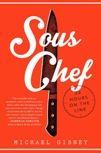 Sous Chef: 24 hours on the Line
Sous Chef: 24 hours on the Line
By Michael Gibney
Ballantine Books, 2014
Highly recommended!
This is one of the many books by working chefs (see Yes, Chef; Back of the House; Knives at Dawn; Blood, Bones, and Butter; Heat, all previously discussed on my bookshelf). Why is there so much drama in kitchens? I’m sure that cooks get busy when all of the diners show up at mealtime at a restaurant, but surely there’s a way to plan for that?
Maybe chefs are just drama kings/queens and there’s no getting away from that.
In any event, this is a great read on a cold, rainy spring day in Minnesota like today. Gibney is sous chef at a restaurant in the West Village in New York. Sous Chef takes us thorough a day in the life: showing up on Friday morning when there is a huge number of reservations, including a critic from the Times, through the day of preparing, cleaning up from, and preparing for the next day of serving, in a restaurant. Lots of bad choices by the people working there. Lots of “food porn”: delectable descriptions of menu items. I happened to be making dinner when I was reading this book, and I adapted mustard potatoes from the book for the menu at home. Yum.
This is a literate, well-written, well-paced book.
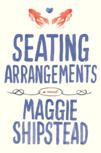 Seating Arrangements
Seating Arrangements
By Maggie Shipstead
Alfred A. Knopf, 2012
I was driving somewhere, listening to the radio, and I heard a review of Maggie Shipstead’s second novel. It didn’t sound very interesting to me — something about ballerinas running amok — but the reviewer’s description of Shipstead’s first novel, Seating Arrangements, sounded intriguing. I wasn’t disappointed.
This novel is set on an island off the coast of New England. The Van Meter family and friends are gathering there for the wedding of one of the Van Meter daughters, Daphne (hence the concern about seating arrangements). Over the course of the next four days a lot happens: several unfortunate hook-ups among the wedding party, embarrassing social gaffes by a number of the Van Meters, an accident, a beached whale, suffering over unrequited love, and so forth. I could go on, but you get the picture. In the end, the wedding happens (this was never in doubt), the key characters transcend the embarrassment they experienced and caused others in the run-up to the wedding, and they reach new levels of self-knowledge and peace.
This is a novel of manners. It’s also a marriage novel, a coming of age novel, and—perhaps mostly—a mid-life crisis novel. Winn Van Meter, the father of the bride, has to come to grips with the gap between who he thinks he is and who he really is. Watching that happen is one of the pleasures of this novel.
Seating Arrangements treats some of the classic themes of American fiction: What defines social class? What role does money play in determining class? Are love and social ascendancy compatible? Maggie Shipstead has been called a 21st-century Edith Wharton. That’s a good way to think about her.
This is a beautifully written and compelling novel. I recommend it.
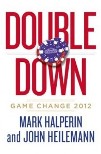 Down: Game Change 2012
Down: Game Change 2012
By Mark Halperin and John Heilemann
The Penguin Press, 2013
This is a book about the 2012 presidential election. Why write such a book? The authors are convinced that “many of the stories behind the headlines had not been told,” and they state as their objective to “render the narrative … with an eye toward the high human drama behind the curtain, and with accuracy, fairness, and empathy foremost among our aims.”
I think they achieved their goal. If you sit down with this book, prepare yourself for an undertaking: it’s four hundred and seventy-six pages long. But it’s very readable because it’s well constructed. As the reader you move back and forth between the Obama and Romney camps as the campaign progress. It’s got narrative drive. First you hear how Romney is preparing for the debates, then Obama. You read about Romney’s vice presidential vetting process, and then you read about Obama and Biden’s relationship.
In the “high human drama” department, one of the most interesting and moving parts of the book is the recounting of President Obama’s angst in preparing for the second presidential debate after his disastrous performance at the debate in Denver. The scene recounts “The most self-contained president in modern history . . . laying himself bare, deconstructing himself before their eyes — and admitting he was at a loss.”
Even political strategists have to have some fun. During Romney’s vice presidential vetting process, the men under consideration were all given code names related to fish by the vetting team. Rubio was Pescado, Pawlenty was Lakefish, Ryan was Fishconsin, and Christie, who does not come off well in this book, was Pufferfish. (Did they really think “Fishconsin” would mystify people?) There’s a fair amount of this kind of gossip in the book, which is fun.
At the end of the day, though, I mainly found this book discouraging. It’s all about political operatives scheming ways to get an edge on an opponent, to pull the other guy down rather than to build yours up. The process of selecting a president came off to me mainly as sordid and cynical. I suppose I’m naïve about what it takes to win a presidential election, but this book, while interesting, sure wasn’t inspiring.
 Norwegian By Night
Norwegian By Night
By Derek B. Miller
Houghton Mifflin, 2013
I encourage you to read this excellent novel.
Sheldon Horowitz is a retired Jewish watch repairman who, after the death of his wife, moves from New York to Oslo to live with his granddaughter, whom he raised, and her Norwegian husband, Lars. Sheldon witnesses the murder of a young woman, the mother of a little boy. Fearing for the boy’s safety, Sheldon at age — 82 — becomes his protector from a murderous Kosovar thug.
There are many complexities here. The ethnic cleansing that occurred in Bosnia renews the horrors of the Holocausts in Sheldon’s mind. Overlaid on that is the abiding guilt he feels for encouraging his only son to enlist in the Vietnam war, where he was killed during his second tour of duty.
Then there is Sheldon himself. At one point in the novel he says to a friend, “I don’t know how to talk without arguing.” That appears to be true. He argues with others, with himself, with the indignities and frustrations of daily life. His granddaughter thinks Sheldon is experiencing the onset of dementia, but I’d bet most readers think he’s actually very acute. A novel about all of the bad things that happen in Norwegian by Night shouldn’t be funny, but this one is, largely because of Sheldon’s musings on the world.
It is also a profound meditation on parents and children, on guilt, and on the evil humans perpetrate on one another. I recommend it highly.
 Chef: A Memoir
Chef: A Memoir
By Marcus Samuelsson (with Veronica Chambers)
Random House, 2012
Marcus Samuelsson is the owner and executive chef at Red Rooster Harlem in New York, a restaurant that I really need to go to.
His story is probably familiar to many visitors to my bookshelf: born in Ethiopia, orphaned (or so he thought) at an early age, adopted by Swedish parents, raised in Sweden, then trained as a chef in Sweden, Switzerland, France, and elsewhere, and ultimately at the young age of twenty-four named executive chef at Aquavit in New York, a fine restaurant that I have been to. (Readers in the Twin Cities metro area may remember the short-lived Aquavit restaurant in Minneapolis, that was part of an expansion Samuelsson and his business partner attempted with mixed success).
Samuelsson is well-known in part because his story is so intriguing: a striking African/Swedish/American chef who speaks Swedish, who is, as he says, ”so comfortable with gravlax and meatballs” and who runs a restaurant in Harlem with a multicultural menu. Samuelsson describes what he represents to people this way: “In Ethiopia, I am ferengi, or “white” because I am an American of means. In Sweden I represent “new Sweden,” which to them means an integrated Sweden. In America, I’m black or African American or an immigrant; it depends.”
This book is a memoir, rather than a book about food and cooking, though obviously those subjects come up. On the subject of food and cooking, Samuelsson describes himself as a chef who “chases flavors.” He writes compellingly about how when he came to New York he traveled all over the city trying new flavors and thinking about how to incorporate them into his own cooking. He trained in classical French cooking, but he has left it behind. A great example is his take on the lobster roll. The French “drowned” lobster in “cream-laden sauces.” New Englanders were “a bit heavy-handed when it came to the mayonnaise used to bind it” in a lobster roll. Samuelsson’s solution: roll the lobster “in a skin of thinly sliced pickled Japanese plums, with homemade mayo on the side, and a topping of diced bacon and glistening red caviar.” Yum.
But, as I say, most of this book is about the memoir, not cooking per se. It’s not a great memoir. Yes, Chef tells the intriguing story of Samuelsson’s life, but it’s not very introspective at the key points: the way he abandoned for many years a child he fathered out of wedlock, the discovery decades after his adoption from an orphanage that his birth father was alive, the death of his adoptive father. The one topic that does get more extended and thoughtful treatment is race. There was room for this to be a profound story about birth origin, national origin, family, and race.
Nevertheless, I read it with pleasure, and I recommend it to you.
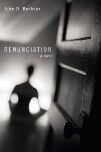 Renunciation: A Novel
Renunciation: A Novel
By John D. Barbour
Resource Publications, 2013
This thoughtful novel, written by John Barbour of St. Olaf’s Religion Department, explores the meaning and consequences of renunciation — the act of purposefully giving something up in pursuit of a greater good. Acts of renunciation, undertaken for a variety of reasons, can be big or small: only one martini before dinner, no meat during Lent, celibacy, shunning the material sign of success, giving over one’s will to a higher power, suicide.
In Renunciation two brothers explore renunciation from very different perspectives. Will converts to a new religious movement and essentially renounces everything about the life he knew growing up as a pastor’s son in Duluth. His brother Peter engages asceticism as a graduate student of religion at the University of Chicago. Will is passionate, volatile, self-centered. Peter is deliberate, intellectual, but still a spiritual quester. Peter thinks about renunciation and studies examples of it; Will joins a religious community and wears a white robe.
Clearly, there are tensions between the way the two brothers see the world and the way they live in it, just as there are tensions between the desire for transcendence that lies behind acts of renunciation and the dangers inherent in renunciation — dangers to the self and to relationships,
I described this novel earlier as “thoughtful.” It’s challenging for a novelist to engage big ideas deeply and to keep the narrative energy alive, the characters vibrant, and the themes engaging. John Barbour meets that challenge in Renunciation. I recommend it.
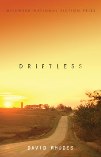 Driftless
Driftless
By David Rhodes
Milkweed Editions, 2009
“Driftless” alludes to the Driftless Region, an area of southwestern Wisconsin that the glaciers missed. It may also be a metaphor for the continuity of the lives of the inhabitants of Words, Wisconsin, a town so small it doesn’t appear on maps. This novel is set in Words (there’s another metaphor lurking here). It revolves around a couple who run a dairy farm, the pastor of the local church, the owner of the Words repair shop, another farmer, two sisters who live together, and some other characters. The novel moves back and forth among these characters as their lives unfold. It’s a little bit like Edgar Lee Masters’ Spoon River Anthology in that it seems like a succession of vignettes, only this novel has a more organic wholeness than Masters’ play.
Tone is tricky in a novel like this. You have to be clear-eyed about your characters’ limitations, shortcoming, and defects, without dismissing or mocking them. Rhodes manages to be wry, sympathetic, and gentle, but not sentimental, all at the same time. We all have faults. Naming them and appreciating them as part of the whole person is part of the work of this novel. Rhodes’ vision for his characters includes their ability to change. They are rooted in the land, connected to the past, enmeshed in the routines of daily life, but they nevertheless respond to what is around them in interesting and largely productive ways. The novel may be called Driftless, but its people do change.
The attention to detail is remarkable in Driftless. Landscape, machinery, peoples’ appearance, weather, these are all minutely detailed. In a town as small as Words, and in a novel as long as this one (429 pages), there is ample leisure for attending to the minute realities of daily life. These verities provide the context for and anchor the novel’s plot.
It has been a long time since I read a novel with such pleasure. Driftless combines profound attention to detail with an expansive and generous regard for its characters and its setting. When you finish it, you will feel better.
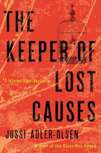 The Keeper of Lost Causes
The Keeper of Lost Causes
By Jussi Adler-Olsen, Trans. Lisa Hartford
Dutton, 2011
As followers of my web page know, I am a fan of crime fiction, and the gorier the better, but this book is just too creepy.
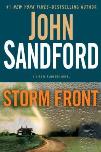 Storm Front (A Virgil Flowers Novel)
Storm Front (A Virgil Flowers Novel)
By John Sandford
G. P. Putnam’s Sons, 2013
I love John Sandford’s crime writing. The Prey novels (they all have the word “Prey” in the title and they all feature Lucas Davenport, an agent for the Minnesota Bureau of Criminal Apprehension) constitute one of the best series in American crime fiction, in my view. Sandford’s attention seems now to have shifted to a new series featuring BCA agent Virgil Flowers (or “that f**king Flowers”) as most people seem to call him). I’m still a fan, but the Flowers novels aren’t as dark, Flowers isn’t as funny as Davenport, and, frankly, Flowers seems too much into himself for me.
This new Flowers novel marks a significant departure not only from the other Flowers novels but also from the Prey novels because it has an international dimension. The novel opens in Israel with the theft of a stele — a piece of an ancient pillar unearthed at a dig on the Jordan River. The thief, improbably, brings it to Mankato, Minnesota — where else? — thus the involvement of the BCA and of Flowers, who is based out of Mankato. Before long you have an agent of the Mossad, a representative of Hezbollah, a couple of Crocodile Dundee types, a hot woman who sells counterfeit old wood (really! apparently, that’s a thing), and near the end of the novel some spooks from the American security apparatus.
This stele matters because it contains an inscription that casts doubt upon the story of King Solomon in the Old Testament. He may not have been David’s son but rather an Egyptian. Jesus then becomes the descendant not of Solomon but of an Egyptian Pharaoh. That would confuse a lot of people. Not to mention national borders.
It feels like you’re suddenly in the middle of a Daniel Silva novel only set in Mankato. The whole thing is just too improbable. And it lacks the taut focus of Sandford’s other novels. Lucas Davenport, where are you?
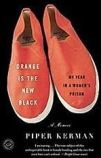 Orange is the New Black: My Year in a Women’s Prison
Orange is the New Black: My Year in a Women’s Prison
By Piper Kerman
Random House, 2010
Piper Kerman grew up with privilege, graduated from Smith College, and went looking for adventure. She found it in a woman named Nora, who was in the drug business. Not pharmaceuticals. Piper ended up briefly being a courier for some drug money, became disillusioned with the business and with Nora, left her, and began life anew. Roughly a decade later, the U.S. marshals are at her door. She has been ratted out by someone in the drug ring as part of a plea bargain, she is tried and convicted for her role in the operation, and sentenced to a year in the Federal women’s prison in Danbury, Connecticut.This memoir is based on that experience.
It’s a good read, much more engaging in my view than the Netflix series that is loosely based on this book. Spoiler alert: the series and the book have very little in common. There’s a lot less drama in the memoir, but on the other hand it’s a lot more thoughtful.
Many of the themes are ones you’d expect: the dehumanizing effects of prison life, the general lack of interest in rehabilitation in the prison system, loneliness, boredom, camaraderie with other prisoners. The author is both inside and outside of her experience at the same time: the things that happen to people in the book are happening to her, too, but unlike many of the other prisoners when her sentence is up she will return to a comfortable world where a job is waiting for her. She is supported by a remarkably patient and understanding fiancé and a network of family and friends with the resources to sustain her while she is in prison. She writes like both one of the inmates and what social scientists used to call—maybe they still do—a participant observer. There is a certain amount of whining in the book that, in light of these facts, gets tiresome.
Nevertheless, if like me you don’t know what happens in a federal prison for women—who ends up there, how they got there, how they do their time, how they get along, and what happens to them in the end, this is a good read. I recommend it.
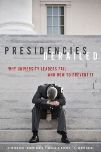 Presidencies Derailed: Why University Leaders Fail and How to Prevent It
Presidencies Derailed: Why University Leaders Fail and How to Prevent It
By Stephen Joel Trachtenberg, Gerald B. Kauvar, and E. Grady Bogue
John Hopkins University Press, 2013
Many readers may look at the title of this short but excellent book and conclude that it’s about insider baseball. At some level they would be right. They might also conclude that it foments academic gossip, and they’d be right about this, too. The book gives numerous case studies of “presidencies derailed” which it defines as presidencies that ended involuntarily before the term of the president’s first contract. The case studies deliberately obscure the name of the president and of the institution, but I know lots of people who are spending time identifying the particular people and places under discussion.
At the end of the day, this isn’t a book about colleges, but rather a book about leadership and governance. Sometimes a presidency (or the leadership of a business) fails for reasons beyond everybody’s control, but usually there were numerous points along the way when failure could have been averted, where problems should have been named and addressed, and where best practices—not to mention common sense—could have prevented a costly mistake.
If you are a trustee or director of an organization, someone likely to participate in the search for a CEO or a for-profit or not-for-profit organization any time soon, or someone who holds or aspires to a leadership position in an organization, you would benefit from reading this book.
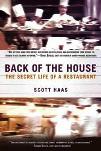 Back of the House: The Secret Life of a Restaurant
Back of the House: The Secret Life of a Restaurant
By Scott Haas
Berkeley Books, 2013
My friend John Churchill, who is the highly regarded Secretary of the Phi Beta Kappa Society, had an occasion to look at this web page recently. After looking at the titles listed on my bookshelf, he told me with a chuckle, “David, you are spending too much time thinking about food.”
Perhaps he’s right.
At any event, I was in Washington D.C. on business, stopped in Kramer Books in DuPont Circle, and found Back of the House. I looked forward to another restaurant book like Anthony Bourdain’s Kitchen Confidential, Bill Buford’s Heat, or even Steve Dublanica’s Waiter’s Rant. This isn’t that kind of book.
That’s probably because Haas, in addition to being a food writer, is a clinical psychologist whose day job is to be chief psychologist for a private clinic in Brookline, Massachusetts. So while he clearly knows a lot about food, and cooking, and the restaurant business, those aren’t what this book is really about. Rather, he’s interested in what makes a great chef tick. To that end, he spent eighteenth months in the kitchen at Craigie on Main in Boston, watching how chef Tony Maws runs the restaurant. At the end of the book, Haas also shares what he learned interviewing several other leading American chefs, including Thomas Keller, David Pasternack, Daniel Boulud, and so on.
I don’t think Back of the House really tells you that much about what makes great chefs tick, but it has many interesting things to say about leadership. The chefs at the kinds of restaurants Haas writes about don’t do much of the cooking. They write menus, they establish the mission and the tone of the restaurant, and they recruit, develop, and retain staff. That’s what leaders do any kind of organization, from a four-star restaurant to a company, to a non-profit organization, to a college. Over the course of the book we see chef Maws change, or talk about changing, from an authoritarian leadership style to one that’s more collaborative and team-based. We also gain some understanding of what elements of his experience contributed to making him the kind of chef he is (spoiler alert: his father is important to that dynamic).
I still think the best part of the book is the section where the author stops observing and asking people how things make them feel and gets in the kitchen.
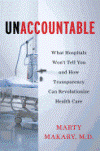 Unaccountable: What Hospitals Won’t Tell You and How Transparency Can Revolutionize Health Care
Unaccountable: What Hospitals Won’t Tell You and How Transparency Can Revolutionize Health Care
By Marty Makary, M.D.
Bloomsbury Press, 2012
I was invited to be part of a Renaissance Weekend, and Dr. Makary was another of the participants. As I listened to him argue for greater transparency in healthcare, part of me was thinking how the same argument could apply to higher education. Many observers think that the challenges facing healthcare and higher education are fundamentally the same. We both offer a service that is expensive to provide because of the amount of training required of the people who deliver it, the intimate nature of providing it — which necessitates a low ratio of “customers” to providers — and the cost of the technology we employ. The Federal government also plays a huge role in our marketplaces. The net result is that both sectors provide a service that people both need and want but for which many are unable, or unwilling, to pay the true cost.
Another commonality between higher education and health care is that many see us as a “black box.” It’s not clear why the costs are what they are, it’s not clear why we do things the way we do, and we do not do a very good job of providing evidence of outcomes. I think this is a fair criticism, so I got a copy of Dr. Makary’s book to see what it might tell me about how to implement greater transparency.
Makary’s book talks about a “new discipline in medicine: the science of measuring quality” (p. 2), which is needed because medicine is “an industry that does not abide by the same principles of accountability for performance that govern other industries” (p. 2). The solution is greater transparency because “Transparency of hospital outcomes for common services would reward good performance, identify bad outliers, and drive improvement, harnessing the power of the free market, as it should” (p. 5). Assuming that he’s right about the problem in medicine, these strike me as reasonable and appropriate solutions to it, and I think they apply with equal power to higher education: focus on outcomes, measure them, report them, compare them. St. Olaf seeks to be a leader among liberal arts colleges in this endeavor. Go to the College’s homepage and click on Outcomes at the top of the page to see more.
This isn’t really a book to read for pleasure. It needed more editing. It’s repetitious in places, and the author is often the hero of his own stories. Plus, it will terrify you if you have any reason to have to spend time in a hospital! But you don’t have to read it cover to cover.
Unaccountable addresses an important issue, it is forthright and passionate, and it stimulates good thinking about all of the areas of our work and lives where more transparency would be a good thing.
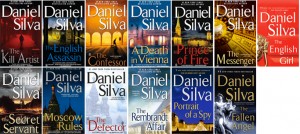 The Gabriel Allon Novels
The Gabriel Allon Novels
By Daniel Silva
In my callow youth I scorned detective novels, which was easy to do never having read one. Then, as a graduate student I had to read one in order to be useful to my professor, John McAleer, who was writing the biography of the American detective novelist, Rex Stout. I’ve been reading crime novels ever since.
Ditto for spy novels. I scorned them, never having read one.That was until DeAne Lagerquist in our Religion department offered a copy of one of Daniel Silva’s novels featuring the Israeli spy Gabriel Allon. Read it. Loved it. Read them all.
Gabriel Allon, the son of a holocaust survivor and a painter, grew up in Israel. His plan was to become a painter himself, but he was recruited by the Israeli secret service and — after the murder of Israeli athletes at the 1972 summer Olympics in Munich — tasked with hunting down and killing the perpetrators of that crime. He did it, but hunting and killing people — even bad people — changed him. He returned from that work with prematurely gray hair at his temples and unable to continue as a painter. Instead, he went to Venice and apprenticed as a restorer of old master paintings. He continued in the Israeli secret service. This is where the series begins.
Silva has a very particular take on Israeli-Palestinian relations, and he is not sympathetic to Palestinians, so be prepared for that if you take up the series. The settings of the novels range across the globe, because that’s where Allon’s assignments take him.The novels also range back and forth in time, as Allon unearths Nazi hoards and lays bare crimes committed during the Holocaust. Allon himself ages with the series, but I don’t want to say more about that and ruin your own discovery of how he changes.
When the hero of the series bears the name of an angel who served as a messenger from God to His people, and when his profession is restoring damaged things, and when he is an agent of the Israeli secret service, you begin to sense a theme at work. At some level all spy novels have to be plot-driven, but — as the example of John le Carré proves — that doesn’t mean you can’t have rich characters and meaningful themes.The novels in this series do.
But be warned: if you pick one up you should clear your calendar, because you will be reading others.
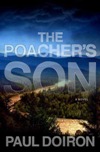 The Poacher’s Son
The Poacher’s Son
By Paul Doiron
Minotaur Books, 2010
This is a novel set in mid-coast Maine and Maine’s western mountains, which is where I was when I read it. It is the first novel in what has become a series, featuring Maine Game Warden Mike Bowditch. (Subsequent novels in the series are Trespasser, Bad Little Falls, and Massacre Pond.)
Detectives in my kind of crime novel have issues. Mike Bowditch has issues. For starters, he is a game warden, and his father is a poacher (also a tavern brawler, an unfaithful husband, and generally a lout). His mother is a nouveau riche, and her second husband (after Mike’s father) is a twerp. Mike has inherited his parents’ skills at handling intimate relationships, and as a result the woman he loves, and needs, has just left him.
Good news: he loves being a game warden. Bad news: during a dispute over property rights between a large timber company and small leaseholders, a game warden is shot and Mike’s father is the prime suspect. He believes his father is innocent, but no one else does, and his fellow game wardens do not take kindly to sympathy for the alleged murderer. No one takes kindly to Mike’s clumsy efforts to navigate his duty to the warden service and his interest in solving the murder.
In the course of this novel Mike finds the truth of what happened at the murder scene, he progresses in his relationship skills, and he finds the father he never had. There is also lots of great local color. It’s a good read.
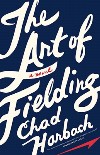 The Art of Fielding
The Art of Fielding
By Chard Harbach
Little, Brown and Co., 2011
This is a baseball novel, an academic novel, a coming-of-age novel, and a mid-life crisis novel all wrapped into one. It sounds like that won’t work, but it does. Harbach has sharp eyes and ears for the world of academe (especially residential liberal arts colleges in the upper Midwest), so anyone familiar with that world will appreciate both the fondness and the detachment with which he portrays it.
Baseball novels tend to be wistful. Baseball tends to be wistful. The Art of Fielding is wistful about baseball and about coming of age in a lovely way. It’s elegiac.
The coming-of-age plot ends well, the mid-life crisis plot not so much. English professors and college presidents rarely come off well in fiction or film. What’s up with that?
This is a compelling novel. I recommend it.
 Searching for Utopia: Universities and Their Histories
Searching for Utopia: Universities and Their Histories
By Hanna Holborn Gray
University of California Press, 2012
Searching for Utopia is the published version of the Clark Kerr Lectures on Higher Education delivered by Hanna Gray at the University of California in 2009. If you have any interest in American higher education, or in academic leadership, or simply in deep knowledge, clear thinking, and good writing, you should read this book.
Hanna Gray, who served as President of the University of Chicago from 1978-1993, begins her reflections on universities and their histories by contrasting the visions of two famous and influential American university presidents: Robert Maynard Hutchings of Chicago and Clark Kerr of the University of California. The contrast between them, she argues, “reveal[s] the two most familiar forms in which the American research university has been conceived.” Hutchins was “an uncompromising idealist,” while Kerr was “a pragmatic realist.”
Hutchins saw the modern university as characterized by “intellectual disorder and triviality.” He believed in what he called “permanent studies” which every educated person was expected to master. Sounding more like the eighteenth-century writer Samuel Johnson than a modern American university president, he declared, “Education implies teaching. Teaching implies Knowledge. Knowledge is truth. The truth is everywhere the same. Hence education should be everywhere the same.”
Kerr, Gray argues, “began by accepting the reality of an institution shaped by a history that could not be denied or undone and then worked to lay out a set of standards by which its strengths might be harnessed and its negative effects tempered.” Kerr, who coined the term “multiversity,” did not believe that “permanent studies” exist; rather, he sought to “rebalance and steadily to continue to adapt the university’s configuration to the always moving and changing landscape of learning.”
Having focused these two visions of a university, Gray then considers the treatment of the ideal of a university and of an ideal education in the writings of figures like Thomas More and Cardinal Newman and in the establishment and development of modern American universities. The search for Utopia takes many forms.
This volume concludes with a bold chapter on the “Uses (and Misuses) of Universities Today.” Not everyone will love this chapter. Gray argues for a “return to basics, to our academic center.” This means universities need to become “more deliberatively selective in what they choose to do.” Gray questions, for example, the amount of investment in facilities, and argues for a de-emphasis on teaching students to change the world versus a re-emphasis on advancing and preserving knowledge. She suggests we adopt the model of a “stripped down university” built on “an unfaltering commitment to academic imperatives.”
Wherever you come down on the argument of this last chapter, Searching for Utopia is an important book on American higher education. I encourage you to read it.
 The Two Deaths of Daniel Hayes
The Two Deaths of Daniel Hayes
By Marcus Sakey
New American Library, 2012
This novel, a signed copy, was a gift from my wife, Priscilla, who met the author at a writers’ workshop. One of the blurbs on the jacket cover describes it as “Part dazzling California noir, part dark American road trip, part sly psychological thriller.” That’s a pretty good description.
Daniel Hayes wakes up in the shallows of the Atlantic Ocean off the coast of Maine. Naked and cold, he can’t remember who he is or how he got there. The good news is that when he struggles to shore there is a BMW there with clothes that fit him and a fifth of Jack Daniels with a little bit of whiskey left in it. The car’s heater warms him up, the clothes fit him, and the registration papers tell him his name. The rest of the novel, with the narrative alternately moving backwards and forward in time, answers the question of how he got to be naked in the ocean on the Maine cost and what to do about it.
What to do about it involves driving to California, his home, re-discovering who he is, and combating an evil persecutor. The nice thing about not knowing who you are is that you have a chance to start all over again: “You are who you choose to be,” as Daniel says at one point. On the other hand, his past keeps on intruding on and shaping his future the more he re-discovers about himself. Re-making yourself is a central theme of California writing.
If you sit down with this novel, be prepared for a bunch of bad things happening to people in the novel — it’s a sly psychological thriller, after all — but it’s a compelling narrative.
 The Interrogative Mood: A Novel?
The Interrogative Mood: A Novel?
By Padgett Powell
Ecco, 2009
This book is 164 pages long, and every sentence in it is a question. (I have resisted the temptation to have every sentence in this commentary be a question.)
It’s amusing to read in short bits. One of the blurbs on the jacket cover calls it, among other things, the “perfect party game,” and I could see that. Here’s part of a paragraph taken at random from p. 107: “When you go to a football game, will you wave a towel for your team? Do you have any mounted animals or pelts? Do you ever have a notion such as ‘Today would be a good day for me to use a lever on something?’ Are you very happy with your hands or could they be other hands and suit you better? Can you quickly name a good thing and a bad thing?” and so on.
The question is whether this book amounts to more than a bunch of mostly-clever questions? Does it have some shape or form? Does it mean anything? (Oops, I’m lapsing into questions.) The very sub-title, “A Novel?” raises this issue. I don’t think it’s a novel, and if it has shape or form I’m not smart enough to discern it. There are topics that recur in the book (scrambling in the sofa for loose change while you hear the ice-cream truck coming down the street, the sexual attractiveness of candy-stripers, little green plastic army men), and the narrative, while not broken up into chapters is broken up into sections or units through the use of white space on the page, so I’m guessing there is authorial intent about form. But it doesn’t appear to me to go anywhere in particular. It just stops at the end.
Some of the questions are just pointless (“Would you rather receive as a gift a boomerang or a dead-bolt lock set?”), but some use figurative language to raise serious topics (“Could you entertain the idea that what undoes couple over time is that they neglect to apply polish to the grain of their wood?”) Some exemplify artful prose (“Can we relax and trust that our wishes in these regards, our posthumous affairs as it were, will really be administered as we have stipulated, or will we be frustrated and yelling through the glass wall of heaven or the hot opaque obsidian walls of hell at the corrupt disregard for our eternal wishes?”) Some you should ponder (“How many generations back can you name your ancestors?”)
But at the end of the day, this is a book best enjoyed in small bits at the sentence-level.
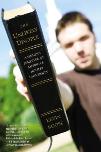 The Unlikely Disciple: A Sinner’s Semester at America’s Holiest University
The Unlikely Disciple: A Sinner’s Semester at America’s Holiest University
By Kevin Roose
Grand Central Publishing, 2009
My friend and St. Olaf librarian Inga Velde read The Unlikely Disciple for her book group and mentioned it when I was in Rolvaag Library trolling for a new book to read. The author, while an undergraduate at Brown University, decided to spend a semester at Liberty University in Lynchburg, Virginia, the university founded by the late Rev. Jerry Falwell. This book relates his experiences there.
You can probably imagine the arc of this narrative already: Roose grew up in Oberlin, Ohio. One of his parents works at Oberlin College; the other is a lawyer. They are Quakers and, according to Roose, “spend a lot of time talking about peace and working for social justice.” I don’t know that his background qualifies Roose as a “sinner,” but it suggests a certain misalignment of values with the ethos of Liberty University. Roose enters this experiment seeing Liberty University and the people there as alien, intolerant, anti-intellectual. Will a semester there change his mind? Will he be “saved”?
Yes and no. Yes, he changes his view of the people at Liberty; no, he doesn’t go up for altar call. The Unlikely Disciple reads like a book written by a very smart undergraduate, which is fair enough, because it was. Its main tension is between the institutional values of Liberty University, the values espoused by the students and faculty there, and the real human connections he makes with the people there. Undergraduates at Liberty have the same interests and concerns as students elsewhere—academic performance, relationships, vocation, having fun. But they pursue these interests and deal with these concerns within a different set of parameters than most other students—no drinking, no dancing, no physical intimacy beyond hand-holding, required attendance at worship services, and so on.
During his time at Liberty, Roose manages to get an appointment to interview Rev. Falwell for a story for the student newspaper (“God bless college journalism and its low standards,” he crows.) That chapter is emblematic of the journey Roose takes in this book. He disapproves of Falwell, but he just can’t help liking the guy.
 The Perfect Meal: In Search of the Lost Tastes of France
The Perfect Meal: In Search of the Lost Tastes of France
By John Baxter
Harper Perennial, 2013
On a trip to Denver, I had some time to kill, wandered into a Barnes & Noble store, and saw this book on the shelf.
John Baxter is an Australian expat who has lived in France for thirty-some years. This book begins when he and a friend have dinner at the Grand Palais in Paris. It’s apparently a very fancy restaurant, what I call a “big plate, little food” kind of place. It’s the kind of place where when your soup comes it’s a little blob of something green in a big bowl. The waiter sprays foam into it and then pours in the liquid. It smokes. Baxter enjoys the meal, but after the dessert he wonders, “What had happened to the robust country dishes of fifty years ago, before the advent of nouvelle cuisine and food designed not to satisfy hunger but to show off the imagination of the chef?” (p. 8).
So, he embarks on a series of journeys around France, chronicled in the remainder of the book, to places where “typical” French cooking still flourishes. The goal at the end of the journey is a menu for a classic French banquet as defined by, of all organizations, UNESCO: a meal “commencing with an aperitif … and ending with liqueurs, containing in between at least four successive courses, namely a starter, fish and/or meat with vegetable, cheese and dessert” (pp. 11-12).
Baxter’s travels take him from one end of France to the other in search of dishes that might comprise his menu, food cooked the way the locals had been cooking it for hundreds of years. There are chapters on caviar, on mushrooms, on lamprey, on anchovies, on bouillon, and, finally, on beef. Locavores will like this.
With any book like this you are going to have to put up with a certain amount of pretentious name-dropping and coy self-flattery (the “dear friend” who lives in a house overlooking Cannes was an irritating addition to the narrative, for example). But these elements are overshadowed by a flood of historical, etymological, cultural, and just plain humorous insights that make the read worth it. Baxter’s hymn to coffee is lyrical, and his diatribe against decaf hilarious (“Decaf — the essence of disappointment. The fumbled pass that loses the game; the ball that rims the hole but doesn’t quite drop; … the mystery you realize on page ten that you’ve already read,” and so on for several paragraphs.)
The chapter on his trip to the country to see a whole beef roasted al fresco has a paragraph on eating meat that is perhaps less successful: “To see the animal entire made us aware of our kinship, of a shared nature as creatures of flesh that walked and ate and breathed and bred and died.” I imagine that works a lot better for you if you are the eater, not the eaten.
The menu he decides upon, and recipes for dishes he encounters in his travels, are in an appendix. Bon appétit!
 Steve Jobs
Steve Jobs
By Walter Isaacson
Simon & Schuster, 2011
You don’t have to think for long about innovators who have fundamentally changed modern life before you come to Steve Jobs. I use a MacBook Air, an IPod, and an IPad almost every day, but I’m not one of those people who have embraced Apple products like a religion. The designs are attractive, but they do what I need them to do at about the same transaction cost as all the other devices in my life, which is all I ask. So I wasn’t drawn to this biography because of the cool things Jobs created.Rather, I was hoping to read about what enabled Jobs to be so successful at envisioning what people would need and want, at creating innovative new products to meet those needs, and at leading a company — now, the world’s most valuable company — that delivered those products at a price people are willing to pay.This biography answers those questions. Jobs had a distinctive vision and was incredibly disciplined in making it a reality. He wanted to make devices that wedded design and function. He wanted them to be complete and whole in themselves. He wanted users of his devices to experience clarity and simplicity. He wanted his products to be things of beauty that were made with excellent craftsmanship within and without. To that end, he needed to control every aspect not only of the devices design and production but also of its use. When he and Steve Wozniak were designing the Apple II computer, Wozniak wanted to have eight slots on the computer where users could customize their machine by inserting various peripherals. Jobs insisted on only two slots, one for a modem, one for a printer. He designed subsequent products so that they could only be opened with special screwdrivers available only to Apple technicians.
Jobs was like one of his own products: self-contained, and not in a good way. With his family he could be warm and engaging one moment and utterly distant another. He was abusive to his friends, his employees, and his business competitors. He was domineering, mercurial, and stubborn. In short, he behaved like a person with single-minded determination to achieve a particular goal at whatever cost to himself and others.
To me, the great question raised by this biography was whether it had to be this way. Did Jobs have be that kind of person in order to imagine and produce those products and to lead Apple? Could he have conceived, manufactured, and sold anything as satisfying as the computer I am typing on now and been a better person? If not, I’m not sure it was worth it.
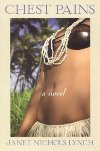 Chest Pains
Chest Pains
By Janet Nichols Lynch
Bridge Works Publishing, 2009
This book caught my eye on the shelves of Rolvaag Library. It’s (another) mid-life crisis academic novel. It’s also about teaching, Catholicism, parenting, and friendship.Gordon Clay teaches music at Goldhurst Community College, north of Fresno. Once, he was one of the promising bass players at Eastman, but despite many auditions, he was never seated in an orchestra. He wasn’t good enough. His college sweetheart left him for another man after graduation. Not good enough there, either. When the novel begins, he is in a bad place: living alone, eating junk food, feeling bitter about teaching at a community college, treating his students with contempt, and generally being unhappy. Also, he’s experiencing chest pains.One night, in the middle of the night, the phone rings. It’s a mother desperately looking for her lost son. She calls Gordon because he has the same name as her ex-husband, and she gets the wrong number from the phone book. It’s as though the possibility of a child, or a family, opens him up. He visits the playground where the little boy was last seen, and he meets another little boy whom he befriends. He sees a cardiologist and begins to eat a healthier diet and to at least contemplate exercise.
And he opens up to other people. Clay was raised Catholic. One of his students, Sister Cecilia, who aspires to be a musician and has no sense of pitch at all, cajoles him into attending the Ministry of the Living Faith Study Group at her church. There he meets Mikilauni Kukula, an exotic beauty from an island in the South Pacific obliterated by nuclear testing. Repressed, lonely middle-aged white man meets exotic, sensual, beautiful island woman. You can guess where this heads. But it’s not just about Gordon’s sexual re-awakening. It turns out the Mikilaiuni’s son, Moopuna, is the little boy Gordon had befriended at the playground. And that relationship turns out to be the most important one in the novel.
Gordon generally sees the world through a satirical lens: take his reflections on modern Catholic music, for example(he has to clean out his ears with Gregorian chant after attending a service); or the music department faculty meeting where four he and his colleagues squabble over who should receive a music scholarship; or his clear-eyed assessment of the plight of adjunct faculty. College Presidents do not fare well, either.
But he is also capable of sweet affection, and over the course of the novel Gordon Clay generally transitions from the angry, lonely satirist to a person with both the desire and capacity for friendship and love. His heart disease is cured. In the end, this is a sweet book.
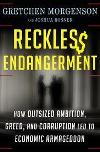 Reckless Endangerment: How Outsized Ambition, Greed, and Corruption Led to Economic Armageddon
Reckless Endangerment: How Outsized Ambition, Greed, and Corruption Led to Economic Armageddon
By Gretchen Morgenson and Joshua Rosner
Times Books. Henry Holt and Company, 2011
Gretchen Morgenson ’76 is an Ole, recently named by Worth magazine among “the 100 most influential people in finance.” According to the magazine, she “may be the foremost investigative chronicler of the financial crisis and its fallout.” Worth goes on to say, “Morgenson is a must-read, especially at Goldman Sachs, about which she is brutal, and in the offices of the Securities and Exchange Commission.” So I was excited to read her new book.As I was first reading Reckless Endangerment I thought the best word to describe it was “angry.” Perhaps you can see from title why: the authors are not reluctant for a moment to name the motives they discern behind the behavior that led to the financial meltdown. Neither are they reluctant to name the individuals who exhibited that behavior. In fact, the authors come right out in the preface and say, “We are angry that the American economy was almost wrecked by a crowd of self-interested, politically influential, and arrogant people who have not been held accountable for their actions.”But on reflection I think that a better adjective might be “relentless” (the authors also refer in their Preface to their “unrelenting search for facts.”) This book doesn’t point fingers and call names. It constructs a specific, detailed, coherent, and compelling narrative of the causes of the financial meltdown, showing how a series of connected events, decisions, and actions led this country to the brink of financial disaster. As the authors claim, this book “connects key incidents that have seemed heretofore unrelated.” It is, in their words, “an economic whodunit.”
This book begins with Bill Clinton’s 1994 declaration that, “More Americans should own their own homes . . . to harbor, to nourish, to expand the American Dream.” The authors don’t argue that this was a mistaken policy goal (though they do argue that it quickly became one when it led to irresponsible lending to Americans who were not in a position to buy homes.) Rather, they argue that the strategy for achieving this goal was deeply flawed. The government turned to “Banks, home builders, securities firms, Realtors” and others to join in this effort. The problem with this strategy was that “it was unheard of for regulators to team up this closely with those they were charged with policing.” Because the private sector participants in this partnership could profit immensely from increased home ownership, they drove aggressively forward towards that goal. Regulators, unable or unwilling to stop the resulting unsound business practices and unethical behavior by self-interested parties, failed to protect Americans and the American economy from the consequences of those actions. The result was “trillions of dollars in investments lost around the world, millions of Americans jettisoned from their homes and fourteen million U.S. workers without jobs.” To make matters worse, those responsible for the unsound practices that led to the economic collapse and those charged with regulating them have not been held to account.
The principal villain in this story is Fannie Mae and its chief executive, James A. Johnson. The authors charge him with devising “a corrupt corporate model” that yielded great riches for him by “eliminating the traditional due diligence conducted by lenders.” Others in the business copied the model, and Wall Street provided the capital to lenders that enabled them to implement the model. Congressional leaders, investment bankers, and highly placed regulators – all named – fare badly in this narrative.
This book tells that story in much greater detail than this summary. It’s as compelling as a good detective story and as readable, which is remarkable given the arcane financial and legislative matters that are its subject. I recommend it to you.
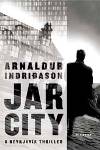 Jar City: A Reykjavík Thriller
Jar City: A Reykjavík Thriller
By Arnaldur Indridason, Trans. Bernard Scudder
Picador, 2004 (First published in Iceland in 2000)
My adventures in Nordic crime fiction continue. Patricia Martin, Director of Government and Foundation Relations at St. Olaf, suggested this novel, and I’m glad she did. It’s a fine detective novel.But it’s bleak. Really bleak. Here’s a meditation on his work by the detective, Inspector Erlendur, near the end of the novel:
Maybe it’s best to let life run its course. Forget the whole business.
Start doing something sensible. Why should I want to get involved in
all this? All this filth. Talking to people like Ellidi. Doing deals with
shits like Eddi. Seeing how people like Holberg get their kicks. Reading
rape reports. Diggin up the foundations of a house full of bugs and shit.
Digging up little coffins.
The novel begins with the murder of a seventy-year old man. It would appear to be a random murder, perhaps associated with an attempted robbery, if it weren’t for the note laid on his corpse: “I am HIM.” The search of the crime scene uncovers, hidden away in a bottom desk drawer, a photograph of a child’s coffin, and the subsequent investigation uncovers a path leading back decades to a brutal rapist, an undiagnosed heredity disease, hidden identities, family tragedies, and sins of the father visited on the son, all of which combine to explain the murder with which the novel opens. They also give rise to Erlandur’s discouraged soliloquy.
The protagonist is Inspector Erlendur Sveinsson, and he is like the detectives in most other Nordic crime fiction (and American hard-boiled fiction too, for that matter). He’s estranged from his wife and children, his parenting skills are abysmal, he smokes too much, eats a terrible diet, doesn’t exercise, doesn’t get enough or the right kind of sleep, and his apartment won’t be on the Better Homes & Garden Tour any time soon. His colleagues regard him with a mixture of admiration and irritation. He’s impossible to supervise. On the other hand, he’s perceptive, brilliant, and tenacious. And – despite that moment of discouragement I quoted above – his personal problems don’t obscure his fierce desire for justice.
He is also, for such an unhappy person, deeply compassionate. The murder victim in the opening of this novel doesnt generate any sympathy at all, but the people whose lives have been bent by the train of events that led to his murder haunt Erlandur, and his determination that they should receive the justice they deserve drives him to pursue this investigation. The scene in which he re-buries a child’s coffin that had been exhumed is moving.
One reviewer commented that this novel “conveys the sense of painful inevitability underlying the old stories that medieval Icelanders told through the long winter nights.” That’s an interesting claim. I don’t know enough about Iceland to have an opinion about the extent to which the novel captures a sensibility or tone unique to that nation, but it clearly relies for a key plot element on the homogeneity of the Icelandic people. And that’s a theme worth pondering.
The prose is spare, the atmosphere is dark, the detective is unhappy, and the crimes are awful. Plus, it pours down rain throughout the novel. In the closing scene of the novel, we hear that “It had started raining again but he [Erlandur] thought the rain was somehow milder.” That’s as good as it gets in Erlandur’s world.
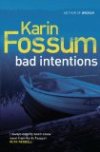 Bad Intentions
Bad Intentions
By Karin Fossum
Houghton Mifflin Harcourt, 2011
(First published in Norway in 2008)
This novel was a gift from Jackie Henry, Administrative Director of the Norwegian American Historical Association, housed at St. Olaf. Followers of my bookshelf know how much I enjoy Nordic crime fiction. An introduction to a new writer in that genre is a real gift.Actually, Karin Fossum is not “new”; she’s only new to me. There are ten novels in her Inspector Sejer series, in addition to a long list of other works. Wikipedia says she is often referred to as “The Norwegian Queen of Crime.” If you haven’t read her, I urge you to start right away.
Bad Intentions begins with a drowninga young man recovering from a nervous breakdown who had been given a weekend away from the hospitalincluding Friday the 13thto spend with two old friends. Readers are given some insight into what happened that weekend, but not why, and the experience of the first half of novel includes watching Inspector Sejer and others come to understand both the what and the why. Then another young man’s body is discovered in a lake, there is a connection with the first drowning, and the reader and the Inspector learn together what it all means.
This is a novel about guilt, which the novel sees as corrosive, uncontrollable, irrepressible. Think Macbeth on the fjords. It’s also a novel about confession, the intermediary product of guilt, and about punishment and redemption, the end products of guilt. It is taught, clear-eyed, and spare. I recommend it.
Back to the Bookshelf
 The Leopard
The Leopard
By Jo Nesbø
Vintage Books, 2011
My friend Einar Vannebo, who ably directs the International Summer School at the University of Oslo, gave me this book. He introduced me to Nordic crime fiction, for which I am most grateful.This is the sixth novel by Jo Nesbø featuring Oslo policeman Harry Hole, who specializes in catching serial killers. Harry is every supervisor’s nightmare: he has no use for systems and procedures, no regard for authority, and no fear of being fired. In fact, every time he gets fired, or quits, the police force ends up having to plead with him to come back. His personal life is a mess. He’s alcoholic, and when he’s trying to stay dry he uses drugs to replace the alcohol. He lives alone, and it seems hes likely to stay that way because every time he forms what looks like a healthy, loving relationship with a woman she gets caught up in his investigation when the killer sees her as Harry’s vulnerability, and bad things happen. In this novel there’s a further complication: his father is on his deathbed. It was a complex father-son relationship, but at least it was a relationship, and Harry doesn’t need to be further alone.At the end of the last Harry Hole novel, The Snowman, Harry’s lover Rakel and her son became victims of a really creepy serial killer. The Leopard opens with Harry estranged from them, living in a flophouse in Hong Kong, smoking opium, and in debt to the Triad, Hong Kong’s mob. But a new killer is on the loose in Norway, and Kaja Solness, a beautiful police officer, has been dispatched to persuade Harry to come home and catch the killer. You wouldn’t think that there could be a creepier killer, or one who uses creepier methods, than in the last Harry Hole novel, but there is. Don’t read this novel if you don’t have a stomach for some brutal, graphic death scenes.
The investigation in this novel plays out against a backdrop of internecine struggle within the Oslo police force between Harry’s Crime Squad and Kriposan elite crime-fighting unit that is seeking to absorb Crime Squad. This has been a running theme in Nesbø’s novels, and it’s hard to see why it’s so important to him. In any event, Harry ends up fighting on two fronts at once: trying to solve the crimes and trying to outwit Kripos. Keep your eye on Kaja Solness.
This is a seven hundred-forty page novel in paperback, so prepare yourself for a long ride that involves the Far East, Norway, Africa, avalanches, precious metals, instruments of torture, and off-market anesthetics. It’s like the Stieg Larsson novels in its ambitious scope but more tightly plotted. Though it’s a novel about solving a crime, it’s really a novel about Harry Hole. It starts with him taking refuge in opium, and it ends with him wishing for an “armoured heart.” Considering what happens in the intervening time, you can understand why.
 Shock Wave
Shock Wave
By John Sandford
G. P. Putnams Sons, 2011
I love John Sandford’s crime fiction. His twenty-one Prey novels (they all have the word “Prey” in the title) featuring Minneapolis detective Lucas Davenport are still my favorites, but a new Virgil Flowers novel is always welcome, too.Sandford is following a pattern similar to that of the late, great American detective novelist Robert B. Parker, who established himself with the Spenser novels, then added a second series, the Jesse Stone novels, and then a third series, featuring a woman detective, Sunny Randall. Similarly, Sandford became famous with the Prey novels, introduced the character of Virgil Flowers and then spun him off to his own series, and also began a series featuring Kidd, a shadowy figure in cyber-world who pursues bad people with his sidekick LuEllen. There haven’t been any recent Kidd novels, so I’m not sure where that one stands. The Prey novels are urban, the Flowers novels rural. Davenport wears expensive suits, is married to a doctor, and has a family. Flowers wears ratty old t-shirts featuring rock groups, has three failed marriages in his past, and tows a boat behind his truck on crime investigations just in case theres good fishing near the crime scene.This is Sandford’s fifth Virgil Flowers novel. A superstore chain wants to move into a small Minnesota river town, there’s a fight between proponents of the store and environmentalists, and deadly bombs start going offfirst one at the companys corporate headquarters, then one at the construction site, and then more. Virgil Flowers is sent to investigate. He uncovers civic corruption, discovers a lot of people sleeping with persons other than their spouses, survives a bomb that blows up his boat, and eventually catches the bomber. It’s not who you might think it would be. Nor is the motive.
It will be interesting to see where Sandford takes the Virgil Flowers series. At the end of the last Flowers novel, Virgil had a girlfriend, the sheriff of the town where he was investigating a crime. But she has caught the eye of a movie production company and is in Hollywood consulting with them on a movie about the crime. When your girlfriend goes to Hollywood while you’re towing a boat around, that can’t be good. The results are predictable. This novel ends with Virgil alone in a small town hotel, drinking a beer and musing about all the good women hes met that he’s not with, and feeling lonely.
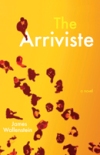 The Arriviste
The Arriviste
By James Wallenstein
Milkweed Editions, 2011
This first novel, like so many of the interesting books I read, was a gift from my wife, the writer Priscilla Paton, who found it at the Twin Cities Book Festival. (Why she keeps giving me books about men having mid-life crises is a subject for another essay.)
This is a novel narrated by someone who doesnt seem to understand either himself or other people. Neil Fox, a venture capitalist who worked in New York and lived on Long Island, recounts the events of his life in 1970 from the perspective of twelve years later, after he has sold his partnership in his firm, moved to Key West, and contracted emphysema from all the cigarettes he smokes in the novel.
Fox is a difficult person. The novels first paragraph suggests why: I still had plenty of money in 1970, more than my neighbors could reasonably hope to come by, yet not so much anymore that I could forget them. My lawn was no longer quite big enough nor my hedges high enough. Fox seems to regard other people as an annoyance, an intrusion. Hes suspicious of them. He doesnt like his brother, who is also his business partner. He doesnt like his mother, who in truth does seem rather mean-spirited. He doesnt like his business partners. He cant connect with his daughter. Obviously, the marriage wasnt working.
The events of 1970 force him to engage with people, and this is a novel about what happens when he does. The novel, and Foxs mid-life crisis, begin with his wife announcing that she is leaving him. His daughter is departing for college as well. Out with the old. A new neighbor moves in next-door and keeps finding ways to insert himself into Foxs life. Eventually they form a business partnership, the neighbor introduces him to a woman who becomes his lover, and events take a course that I wont recount here so as not to spoil the plot. In with the new.
You can imagine a rich account from a self-conscious narrator about the changes in himself and his view of the world brought about by the changes in his circumstances, but you dont really get that in this novel. Rather, because Fox is not particularly self-conscious or self-critical you get his account of what is happening to him but its mostly up to you to understand the significance of whats happening to him or why he does what he does. You dont get much help from him. Its like a Henry James novel, or Ford Maddox Fords The Good Soldier in this respect.
I predict that you wont like the narrator, but you will likely feel sorry for him at times in his alienation and isolation. He has his opportunities to break out of them, and he may, to some extent. In his authors acknowledgements James Wallenstein that to an extent This novel may be said to be about failed partnerships. Thats a great description of it.
This novel makes brilliant use of acutely and minutely observed physical details of scenes, and many of these descriptions of the settings for the novels action provide clues to understanding the significance of those actions. For a guy who doesnt seem to see himself very well, Fox has a poets eye for the details of his surroundings.
T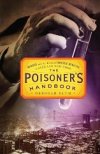 he Poisoner’s Handbook: Murder and the Birth of Forensic Medicine in Jazz Age
he Poisoner’s Handbook: Murder and the Birth of Forensic Medicine in Jazz Age
By Deborah Blum
Penguin Books, 2010
At the conclusion of this interesting and well-written account of the birth of forensic medicine in the U.S., the author reveals that
“There are mornings, lit by the cold winter light, when I start talking about a poison in my book, revealing my own dangerous expertise, and as I do, I watch my husband quietly, not really thinking about it, slide his cup out of my reach.”
As with so many good books I’ve read, my wife, Priscilla, recommended this one. The fact that she rather gleefully recounted the numerous poisonings of one spouse by another that are described in the book may have put me in a similar position to the author’s husband: it seemed prudent to see just what she had learned from The Poisoner’s Handbook.
This book is organized by poison. There’s a chapter on chloroform, another on wood alcohol, one on arsenic, another on radium, and so forth. Many of these chapters open a window onto an important moment in American history that you see in a new light through the lens of poison. The wood alcohol chapter, for example, is about prohibition, and the radium chapter shines a light on Marie Curie and on the sad story of the dial painters, young women who painted radium onto watch faces to make them luminous and who poisoned themselves in the process. Industrial scandals abound.
The heroes of the book are Charles Norris, the first real coroner in New York (as opposed to cronies of the Tammany Hall political machine, men who bore the title of coroner but treated the position merely as a sinecure) and Alexander Gettler, a Hungarian immigrant whom Norris recruited to his laboratory in the Coroner’s Office. These two men, Norris with his vision for what a coroner should do and his tenacity in advocating for the office, and Gettler, with his brilliance as a bench chemist, founded forensic science.
You don’t have to be a scientist to appreciate this book. It is a readable, compelling narrative about key moments in early twentieth-century American history spiced with lots of remarkable stories about poison and poisoners. I recommend it.
 My Life in France
My Life in France
By Julia Child with Alex Prudhomme
Alfred A. Knopf, 2006
You can overthink the business of deciding which books to read. On vacation we rented a house near the sea. It was full of interesting books, and this was one of them. I was on vacation, and I had loads of free time, so I read it.Though based upon the letters that Julia Child and her husband Paul sent to his twin brother between 1948 and 1954, this memoir covers more than the five years or so that they lived continuously in France, the period when she learned to cook and began to teach and write about cooking. This is the period imagined so charmingly in the recent film Julie & Julia. It also recalls their postings to Germany and to Norway and then their return to the States after Paul Child retired from government service and Julia Child became a celebrity.Mostly, though, it’s about the years in France, beginning in 1948. If there is a narrative arc to this book it is probably the story of how Julia Child “found herself,” as she puts it. She describes herself upon their arrival in France as “confused,” lacking in confidence, and “overly emotional.” “I was thirty-seven years old and still discovering who I was” (p. 67). Julia Child found herself through cooking, and one of the pleasures of this memoir is watching how her descriptions of herself change from this early one to the period of final preparation of the manuscript of Mastering the Art of French Cooking where she is the one who insists on precision, process, and clarity.
Good news: the book is full of talk about cooking and eating. On the cooking front, pp. 60-61 tell you how properly to scramble an egg. Page 69 offers a simple recipe for roast veal. Pages 202-3 describe the complex and gruesome preparation of pressed duck. Page 174 discusses the many different versions of bouillabaisse. On the eating front, p. 97 describes a dinner at a restaurant called The Artistes: loup de mer (sea bass), “its stomach cavity stuffed with fennel, grilled over charcoal . . . . After that Paul had two venison cutlets with a wine sauce . . . accompanied by a chestnut puree. I had roasted alouttes (larks) and puffed-up potatoes . . . . Finally, a wedge of Brie and coffee. A perfect meal.” This book is full of descriptions like these.
This memoir reflects a time in France when you could go to the butcher or the cheese maker or the fish monger or the wine merchant and buy what we would now call “artisanal” products — hand-crafted, locally sourced, traditionally made items. We don’t live that way now, but this book isn’t angry about that. Its joyful recollection of that world and how Julia Child found herself while living in it makes this memoir energetic and optimistic.
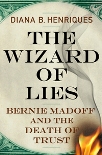 The Wizard of Lies: Bernie Madoff and the Death of Trust
The Wizard of Lies: Bernie Madoff and the Death of Trust
By Diana B. Henriques
Henry Holt and Company, 2011
I picked up this book because I had seen the author interviewed several times on The PBS Newshour as the Madoff scandal unfolded, and she seemed, as one of my professors used to say, “pithy, trenchant, and germane.” I thought her account of what happened would be clear and readable, and it is.At the end of the day, the story of Madoff’s fraud was pretty simple: he took people’s money and told them he was investing it for them, but he didn’t. Instead, he spent it on himself.How do you start down this road? In Madoff’s case, the answer seems to be banal: you actually are investing people’s money, you make some bad bets and you come up short, but instead of telling the truth and taking your lumps you fake the results you wished you had achieved, using other people’s money. You never turn back.
Madoff is an enigmatic figure in this book. You understand what he did and the proximate reasons why, but you don’t get much insight into how he explained to himself what he was doing, or how he rationalized his actions, or how far his self-awareness reached. Did he have dark nights of the soul? When he stepped aboard his yacht in France paid for with money stolen from his “investors,” did he feel a pang?
The author is probably not to blame here; it’s not clear that Madoff has given anyone insight into his inner life. So, even though this book is subtitled “The Death of Trust,” I wouldn’t call it a moral tale. The closest the book comes to this kind of writing occurs in the Epilogue, where Henriques meditates on the Ponzi scheme as a crime. It’s “the crime of the egotist, not the sadist” because — until the money runs out — there is no pain, only grateful “clients.” Madoff’s Ponzi scheme is particularly interesting and morally complex because of the way it allowed some of his “investors” who received vast sums from later investors to direct those phony earnings to wonderful acts of charity, helping universities, hospitals, and all manner of worthy causes.
The Epilogue also delivers a sobering analysis of how difficult it is to detect a fraud like Madoff’s. There is a mismatch, Henriques argues, between investors and regulators, that makes detecting fraud highly problematic. Investors are from Mars, regulators from Venus; or to put it more clearly, regulators believe in the fine print while investors never read it. To Henriques, the Madoff fraud demonstrates that our current approach to regulation — the “full-disclosure regime” — doesn’t work. “Inadequate disclosure was not what inflicted the catastrophic losses that so many of Madoff’s victims sustained. What inflicted those losses was their failure even to ask for some fine print, much less read it. What went wrong was their rejection of basic bedrock principles of investing . . . .”
Henriques goes so far as to argue that “The Madoff case demonstrated with brutal clarity another truth that we simply do not want to face about the Ponzi scheme in our midst: He is not “other” than us, or “different” from us. He is just like us — only more so.” Madoff was not “inhumanly monstrous. He was monstrously human.” Any of us has within ourselves the capacity to commit his crimes.
This is a lucid, well-paced book about a complicated subject. I recommend it.
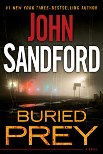 Buried Prey
Buried Prey
By John Sandford
G. P. Putnam’s Sons, 2011
This is the twenty-third novel in Sandford’s Prey series (he has two other series going as well, the Kidd novels and the Virgil Flowers novels). When you get this far into a series the challenge is to maintain the elements that define the series and that your readers keep coming back for while at the same time introducing enough new materials so that the series doesn’t go stale. Sandford is good at this. Lucas Davenport, his detective, keeps moving around to different roles in law enforcement, his romantic interests change, his family grows, and so forth.
Buried Prey is a kind of prequel. (It’s interesting that the spell-checker in Microsoft Word recognizes “prequel,” by the way.) The novel takes us back to Davenport’s first case, back to a time when he was a uniformed officer and made the transition to detective. Kierkegaard observed that that life can only be understood backwards; but it must be lived forwards. Buried Prey is the understanding backwards novel in the Prey series. You understand how Lucas Davenport came to be who he is, having gotten to know him that way first.
The crime is “buried” in this novel both because it happened a long time ago and because the victims were buried under a construction project to hide the evidence. The first part of this novel takes us back to the time of the crime; the second part solves it in the present. It’s a great read, as all of Sandford’s novels are. I recommend it.
 Eating Crow: A Novel of Apology
Eating Crow: A Novel of Apology
By Jay Rayner
Simon and Schuster, 2004
This is a very funny novel. It’s narrated in the first person by Marc Basset, a cynical restaurant critic (at the time of publication, the author was the restaurant critic for The London Observer). The novel begins with Basset publishing a searing review of a restaurant, after which the chef drinks a bottle of whiskey and climbs into the oven and pulls the door shut. A copy of the review is taped to the outside of the oven.
Though he is proud of his snarky reviews, remorse over the death of the chef drives Basset to apologize to the chef’s wife and daughter. That moment changes his life: “I, Marc Basset, who had never before apologized for anything, or at least not for anything important, who had never before see the point of repentance, had finally said the word ‘sorry.’ And I felt wonderful.” The feeling was so rewarding that Basset tries to find everyone he has ever wronged so he can apologize to them. Most of them have forgotten the offense, or never noticed it, or it actually changed their lives for the better, but nevertheless Basset continues to apologize—eloquently, tearfully, profusely—because it makes him feel so good.
When Basset publishes in his column an apology for all of his mean reviews and promised only to comment on good food, he loses his job at the newspaper. Then he apologizes to a young woman whom he slept with and then bragged about his conquest to his friends. She records the apology and it finds its way onto the Internet, becoming an instant hit: the most watched video on YouTube. It sounds as though his life is spiraling downwards, but it is not. He has come to the attention of a group charged with forming a new section of the UN—The Office of Apology, and they recruit him to be their Chief Apologist. He will be paid a percentage of the difference between what the offended party would receive in court and what they are willing to accept after his apology. He will be rich.
A professor has developed a theory of apology that gets very funny attention in the novel, from fake footnotes and other scholarly apparatus reminiscent of Nabokov’s Pale Fire. Much of the rest of the novel consists of restrained but pointed satire of peacemaking and apologizing. I won’t give away how it ends, but there is more to this novel than just making fun of naïveté and pomposity. I encourage you to read it.
(One of the pleasures of the book is all the talk about cooking and eating. Don’t miss the chocolate tasting menu on pp. 233-4).
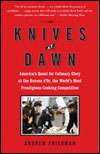 Knives at Dawn: America’s Quest for Culinary Glory at the Bocuse d’Or, the World’s Most Prestigious Cooking Competition
Knives at Dawn: America’s Quest for Culinary Glory at the Bocuse d’Or, the World’s Most Prestigious Cooking Competition
By Andrew Friedman
Free Press, 2009
This is a fun book, another one of those I just picked off the shelf because I was drawn to the title and the cover art and I like to read about food. The author writes for Sports Illustrated — apparently his two passions are cooking and tennis — and the book has the energy and tension of good sports writing. It’s the story of Timothy Hollingsworth’s journey from sous chef at The French Laundry (a famous restaurant in Yountville, California) to America’s representative at the 2009 Bocuse d’Or and back again.
There’s a whole world of culinary competitions out there — who knew? — but apparently the Bocuse d’Or is the grandest. It was founded in the mid–1980s when the organizers of a food exhibition in France wanted to amp up their show by adding a cooking competition. It is named for a famous French chef, Paul Bocuse, who, according to this book, was one of the first celebrity chefs and is credited with helping to transform the chef from a person in the kitchen to a star.
America has never won the Bocuse d’Or, and we don’t like that. One reason may be that other nations have taken the competition much more seriously than we have, grooming chefs to compete, funding sabbaticals for them to train for the competition, and supplying coaches and other kinds of support. France and Norway — again, who knew? — are the teams to beat. In 2009 America decided to emulate the efforts of other countries. An advisory board with famous chefs was formed, a coach was hired, and a systematic selection process for America’s competitor was conceived. This book begins with Hollingsworth’s triumph at that competition and tells the rest of the story of his training and his experience at the competition. In the process it offers an interesting view of the culture of top restaurants in America and their chefs, the culture of cooking competitions, the culture of The French Laundry, and in particular its founder and owner Thomas Keller.
And there is lots of talk about cooking. Most of it is at a rarified level, the kind of thing a passable home cook like myself would never approach. For example, here are some of the items Chef Hollingsworth was considering to offer at the competition:
The custard he’d been imagining was coming into focus as a square or rectangle tinged bright green with spring garlic, which would no longer rest on top but instead would be infused into the custard itself, served on a brioche Melba toast with accompanying flavors of tomato compote and caramelized onion. He was also considering a deep-fried piece of shirako (cod sperm . . . yes, you read that right), as well as cod roe wrapped in bacon, cooked sous vide, then crisped and finished with a Nicoise olive sauce. (p. 134)
Competitors at the Bocuse d’Or are expected to present a menu consisting of specific food groups, such as a beef course, a fish course, and so on. At the 2009 competition described in this book, Team USA presented:
Olive Oil Poached Loin of Norwegian Cod
Wild Prawn and Haas Avocado Tart
Agrumato Custard with Shellfish Bouillon
Yukon Gold Potato and Bacon Mille-Feuille,
Roasted Aberdeen Angus Beef Rib-Eye
Rosette of Scotch Beef Fillet
Glazed Beef Cheeks À L’Étouffée
Calotte Bressaola Fumé À La Minute
Truffled Pommes Dauphinoise
And, they didn’t win! To find out why (or what some of those dishes even were) you’ll have to read this engaging book. I recommend it.
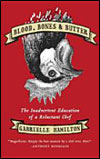 Blood, Bones, and Butter: The Inadvertent Education of a Reluctant Chef
Blood, Bones, and Butter: The Inadvertent Education of a Reluctant Chef
By Gabrielle Hamilton
Random House, 2011
I saw a brief, favorable review of this book in a newspaper and forgot about it. A couple of weeks later, in a Barnes & Noble store looking for something to read on a long trip, I asked at the help desk if they could find “a new book by a chef with a three-word title.” They must hate questions like that, but they found it in about a minute and a half.
This is an ambitious memoir that, unlike Heat by Bill Buford or Kitchen Confidential by Anthony Bourdain, focuses much more on the life experiences of the author as a person than on her life as a cook.
The first, and most engaging, section of the book, “Blood,” tells about her childhood growing up in an eccentric family with lots of siblings, an artist father, a French mother, and a rich environment for the senses. The opening descriptions of the family’s annual summer lamb roast for their friends will make you salivate. The tales of her misspent youth will make you cringe. This section is tender, happy, melancholy, regretful and defiant.
Section two, “Bones” presents the author after she’s recovered from a whole series of bad decisions. She earns an MFA in writing from Michigan and works in corporate catering. Her description of a bunch of sensitive graduate students sitting around in someone’s apartment and listening to each other read poetry is merciless and very funny. On the other hand, after reading her account of how many people handle the canapés served at a function catered by the company she worked for in New York, you’ll never eat at another reception.
“Butter” is the third section. Here the author has married an Italian opened her famous restaurant, given birth, and mellowed considerably, which is a good thing.
Gabrielle Hamilton has strong views on many subjects, and she’s a ranter, so readers of this book have to prepare themselves for some heated diatribes, but they are generally interesting ones. There aren’t many detailed descriptions of how to cook particular dishes, but take note of the description on p. 156 of how Andre Soltner made an omelette.
The general arc of this book bends from loneliness, unhappiness, and anger toward belonging, reconciliation, and happiness, but not completely. It’s not a book about cooking; it’s a book about being, or about learning to be.
 Lessons Learned: Reflections of a University President
Lessons Learned: Reflections of a University President
By William G. Bowen
Princeton University Press, 2011
William Bowen’s voice is among the most important ones in American higher education. He is the author of a seminal work on diversity in our colleges and universities (The Shape of the River), another on college athletics (The Game of Life), and many others. During his long tenure as President of the Andrew W. Mellon Foundation, Bowen played a key role in advancing and shaping priorities at America’s colleges and universities. Bowen is himself a graduate of Denison University, a fine liberal arts college, and he has been particularly influential in supporting the work of colleges like St. Olaf.
Lessons Learned represents Bowen’s reflection on his sixteen-year tenure ending in 1988 as President of Princeton University. In some respects it is an insider’s book, with wise and canny insights of the role of a president in the many campus issues that arise every day. Every president should read this book.
But it is by no means just a book for higher ed. Many of the issues Bowen discusses and illustrates with stories from his own experience would be relevant to anyone in a leadership position or anyone who cares deeply about an organization? How do you foster and sustain a positive culture in your organization? What is the appropriate role of a Board of Directors and how does that role intersect with the role of the CEO? How do you foster and manage positive change? How do you engage, motivate, and benefit from the insights of stakeholders? If you’re the leader, how do you know when it is time to go?
Bowen’s reflections on these and other topics are balanced, grounded in broad and deep experience, and compelling. This is a short but rich book. I recommend it.
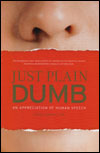 Just Plain Dumb: An Appreciation of Human Speech
Just Plain Dumb: An Appreciation of Human Speech
By Karen Landahl, Ph.D.
IPP Litho, 2010.
Karen Landahl ’74 was a classmate of mine at St. Olaf and in the Paracollege. She was a brilliant woman, who developed an interest in linguistics while at the College, pursued that interest at Brown University where she earned a Ph.D., and eventually joined the faculty at the University of Chicago, rising to the rank of Professor. She died, after a battle with cancer, in 2003.
One of the treatments she and her doctors chose during that battle was removal of the tongue, and Karen thus lost the ability to speak. This book is about what it was like to become mute. Karen states very explicitly her purpose as a writer: “I am not writing about my experience because I feel sorry for myself and am looking for pity. I am writing because I have long been interested in what we can learn from experiments of nature, and I myself am now one” (p. 25). This book is partly a memoir, partly a contribution to disability studies, partly an essay about the role of speech in our culture. It is brave, sad, and compelling. I urge you to read it.
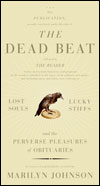 The Dead Beat: Lost Souls, Lucky Stiffs, and the Perverse Pleasures of Obituaries
The Dead Beat: Lost Souls, Lucky Stiffs, and the Perverse Pleasures of Obituaries
By Marilyn Johnson
HarperCollins, 2006
I was in Rolvaag Library at St. Olaf looking for a good book to read when The Dead Beat caught my eye. It’s a strange, fun read.
There is a basic pattern to the obituary, and Marilyn Johnson has invented a vocabulary to describe it. First comes the tombstone, which is the quick description of the subject of the obituary that immediately follows the name, as in “James R. Garfield II, father of the modern Cleveland auto show and great-grandson of an American president, died … ” (p. 33). It’s followed by the bad news, or the cause of death, which is followed by the song and dance, a longer section that tells a story that reveals the character of the subject of the obituary. Then there’s the desperate chronology, which takes the reader through the subject’s life. It’s followed by the telegraph, a kind of punch line that rounds off the obituary with a particularly significant or surprising fact about the subject, such as this “telegraph” from the obituary of the dowdy wife of a British Prime Minister: “It was also noted that her hobby was keeping pigs.” The last element is a list of the survivors. Johnson’s description of this template for an obituary is interesting, but the delight of this chapter — as indeed of the whole book — derives from the examples she quotes.
This book reports on the happenings at a convention of people interested in obituaries and draws portraits of some particularly famous obituary writers, including a touching one of Jim Nicholson, who wrote for the Philadelphia Daily News. There is a compelling chapter on how the obituary pages of New York newspapers handled the victims of the 9/11 attacks and a creepy one about the author’s obsession with a news group called alt.obituaries. The book also offers an interesting account of how obituaries have morphed over time from accounts of the lives of the rich and famous to vignettes that uncover what was uncommon in the lives of ordinary people.
But it’s the quotations from obituaries, sprinkled throughout this book, that will keep you reading. Beware, though: you’ll never turn past the obituary page in a newspaper again.
 The Ethical Executive
The Ethical Executive
By Robert Hoyk and Paul Hersey
Stanford University Press 2008
This book begins with a bold claim:
The history of ethics is based on the utilization of philosophical principles. The precursor of psychology is also philosophy. Psychology was born when philosophical ideas were tempered by empirical science. It’s time to acknowledge that philosophy is the forerunner of ethics and to move ethics into the realm of science and social psychology. (p. 10)
I don’t believe this for a moment. Science generally, and psychology specifically, doubtless make important contributions to ethics — principally by providing data about how we respond to our environment — but in my view ethical reasoning is far too nuanced a human phenomenon to be understood and explained simply by behavioral science.
Nevertheless, this short book is worth a read. It argues that stimuli in our environment motivate our behavior and that sometimes those stimuli are so powerful that they lead us, despite ourselves, to act in ways we might otherwise regard as unethical. When a stimulus triggers a behavior in us that leads to unethical behavior, it constitutes a “trap.” The authors have identified 45 such traps, classifying them in three groups: Primary Traps (external stimuli that “have the potential to impel us to move in a certain direction without regard for our ethical principles” [p. 7]); Defensive Traps (“maneuvers that are reactions to two internal stimuli: guilt and shame” [p. 7]); and Personality Traps (“personality traits that can make us more vulnerable to wrongdoing” [p. 7]).
The book is essentially a listing of these 45 traps with illustrations of how they might play out in real life, often with a brief account of the research that underlies the behavior being described. Take, for example, Trap 17: “Enacting a Role.” Psychologist Philip Zimbardo, who was trying to understand brutality in prisons, did the underlying research at Stanford in 1971. He constructed a realistic prison in a building on campus and populated it with student volunteers who were randomly assigned to roles as either prisoners or guards. After six days Zimbardo had to cancel the experiment because the “guards” were exhibiting cruel and degrading behaviors towards their “prisoners,” and the “prisoners” were becoming rebellious or apathetic. The authors conclude that when we take on a role, such as CEO of a company, we can identify so completely with that role that we behave in ways we might otherwise regard as unethical. For example, we might relentlessly pursue profits without regards to the means we are using to achieve them because that is our role as CEO, but if we were to slip out of that role, step back, and analyze our behavior, we would regard it differently. They cite as an example of Enacting a Role a damning quotation attributed to Jeffrey Skilling, the disgraced CEO of Enron: “My job as a businessman is to be a profit center and to maximize return to the shareholders. It’s the government’s job to step in if a product is dangerous” (p. 54).
Of course, life is messier than a neat list of 45 traps would suggest, and the authors recognize this. Some of the traps overlap, some are embedded within others, some even drift between their three categories. The book concludes with an analysis of what went wrong in the Jonestown massacre in 1978 in South America, showing the various kinds of traps the led to that tragic event and the interplay between them.
I think most of us need all the help we can get to do the right thing in a complex world. This book provides a tool to analyze your behavior. Faced with a difficult decision you could run through the traps the authors have identified, asking yourself if you had fallen victim to any of them. Simply being aware of these traps is likely to enhance your decision-making, even if you don’t do a formal check-off of each trap every time you need to decide something.
 Sherlock Holmes Was Wrong: Reopening the Case of The Hound of the Baskervilles
Sherlock Holmes Was Wrong: Reopening the Case of The Hound of the Baskervilles
By Pierre Bayard (trans. Charlotte Mandell)
Bloomsbury 2008
This book is ver-r-r-r-r-r-y French. By that I mean that the author works from the theoretical perspectives of French criticism developed in the late ‘70s when I was in graduate school and refined since then into an elaborate, interesting, often brilliant, but ultimately trivial form of intellectual play.
This book proposes a different solution than the one announced by Sherlock Holmes to the crimes in Conan Doyle’s classic of detective fiction, The Hound of the Baskervilles. This is the story in which Sherlock Holmes is invited to go to the Devonshire moors to investigate the death of Sir Charles Baskerville. The circumstances of his death are problematic, and his friend and neighbor Sir James Mortimer doesn’t accept the results of the police investigation, so he enlists Holmes’s help. I don’t want to give away the ending, but let’s just say that the police version was, indeed, incorrect, that there is much more going on in Devonshire than meets the eye, and that Holmes finds this all out.
Not so fast, says Pierre Bayard, who is also a psychoanalyst and the author of How to Talk About Books You Haven’t Read. Using a critical method that he calls “detective criticism,” he offers an alternative reading of The Hound of the Baskervilles that names a different killer than Holmes had accused and posits a whole new way of understanding the relationship between Arthur Conan Doyle and his famous creation, Sherlock Holmes.
You might ask why a serious literary critic would spend time second-guessing the plot of a detective story. It’s a fiction, for heaven’s sake: it’s not as though these are real people engaged in real events and you can go back and discover that something different happened. Or can you? Bayard argues that “to keep exclusively to what the text says risks leading to readings that are unarguable but also uninteresting” (p. 65, his italics). Instead, he takes the approach that, “The thoughts of characters in literature are not forever locked up inside their creators. More alive than many living people, these characters spread themselves through those who read their authors’ work, they impregnate the books that tell their tales, they cross centuries in search of a benevolent listener” (p. 6). In other words, characters in fiction have lives independent of the texts in which they appear, and you can use your imagination to find out what they think, even though their authors never wrote about that.
This book makes an elegantly constructed argument, and it’s fun to read if you have time to think about the question of whether a detective story should have ended differently, but I was left with one simple question: who cares?
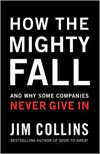 How the Mighty Fall: And Why Some Companies Never Give In
How the Mighty Fall: And Why Some Companies Never Give In
By Jim Collins
Harper Collins, 2009
This book was a gift from a recently retired, and very successful, CEO of a major financial services firm. He is a keen observer of organizations, and his endorsement of this book was an incentive to read it right away. I thought Collins’ Good to Great was a very helpful book (see my reviews from 2006/07), and the topic of this one is most timely — another attraction of the book. It did not disappoint.
The Great Recession is certainly not over, but thus far St. Olaf has weathered the storm: our enrollment is flourishing, our balance sheet is strong, our facilities are exemplary, and our identity remains secure. But this is no time to breathe a sigh of relief and go back to business as usual. You frequently hear the phrase “the new normal” used to describe fundamental shifts in the economy and in how we will lead our lives from now on as a result of the recession. I don’t believe that we yet know what the “new normal” will be for higher education, but I am absolutely convinced of the truth of Collins’ main point in this book: “Whether you prevail or fail, endure or die, depends more on what you do to yourself than on what the world does to you.”
So what can we learn from the experience of other organizations, whose CEOs might have written words like those I just used to describe St. Olaf’s current situation, right before their company collapsed? Collins argues that organizations go through five recognizable stages on their way to failure: Hubris Born of Success; Undisciplined Pursuit of More; Denial of Risk and Peril; Grasping for Salvation; and Capitulation to Irrelevance or Death (pp. 21-22). If you are aware of these stages and learn to recognize them, you can tell when you’re headed down this road and reverse course before it’s too late. As with his other books, Collins lays out this paradigm and then illustrates it with examples from companies he and his team have studied.
We’re a college, not a company, but there are ample propositions to ponder in this book. Here are some examples. Successful companies have more disciplined focus on “improving and evolving” their core business than failing ones do (p. 32). Successful companies foster a “productive tension” between continuity and change (p. 36). A flourishing organization is “more likely to die of indigestion from too much opportunity than starvation from too little” (p. 55). When making a big, risky decision, a good rule of thumb is to ask what the benefits will be if it turns out well, what the costs will be if it turns out badly, and “Can you live with the downside? Truly?” (p. 74). An “intense, methodical, consistent” approach is most likely to produce success (p .95). Don’t lose “the ability to make strategic choices” (p. 107.) And none of this changes the key principle of Good to Great, which is that the best organizations flourish because they have the right people in the right places doing their work exceptionally well.
The college is engaged in strategic planning, and the conclusions exemplified above are relevant to the kinds of choices we need to be making about St. Olaf’s future and the strategies we need to adopt to secure it. It is particularly interesting to me that at a time when we are searching to identify the “new normal” and to find strategies and tactics to respond to it, Collins draws the focus back to core competencies, to disciplined patience, and to the people in the organization.
Anyone interested in how to help an organization flourish will benefit from this short, clearly written book. I recommend it.
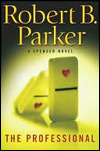 The Professional
The Professional
By Robert B. Parker
G. P Putnam’s Sons, 2009
I’ve been reading Robert B. Parker’s detective novels for as long as he has been writing them — since 1973. He died suddenly on January 18, 2010, and on hearing that news my first thought — selfishly — was, “Oh, no! No more Spenser novels!” The good news is that there is apparently at least one more Spenser novel forthcoming this October. Meanwhile, I finally got to the most recent one, The Professional. I dropped everything and read it in an afternoon.
This is one of Parker’s most ambitious recent Spenser novels — more troubled in its treatment of the flawed characters who inhabit it. This is a novel about faithfulness and infidelity. A handsome and attractive man has been having adulterous affairs with the young wives of rich, older men. When he starts to blackmail them, they approach Spenser to make the blackmail stop. One of the cuckolded husbands finds out about the blackmail, and hence the infidelity. He has Mob connections, which brings two of his enforcers into the picture. They have their own complicated relationship and fidelity issues, and of course Spenser and Susan Silverman have their history around this subject.
(It turns out that an earlier victim of the blackmailer was the president of a liberal arts college, but let’s not go there.)
What interested me about this novel is the degree of sympathy that its mostly flawed and failed characters elicit. Spenser can’t bring himself to condemn, or even to dislike, the blackmailer whom he tracks down and confronts. Same problem with the two Mob enforcers. Same problem with the murderer.
I’ll say no more. Read it for yourself. I think you’ll be pleased.
 Working in the Shadows: A Year of Doing the Jobs [Most] Americans Won’t Do
Working in the Shadows: A Year of Doing the Jobs [Most] Americans Won’t Do
By Gabriel Thompson
Nation Books, 2010
When I first saw this book on the shelf of new books at the Northfield Public Library, I thought, “Hasn’t Barbara Ehrenreich already written this book in her classic Nickel and Dimed: On (Not) Getting By in America? These two books certainly overlap, but Thompson’s covers new ground and presents a different tone.
Thompson addresses the question of overlap with Ehrenreich directly in the opening of his book. Unlike her, he is not conducting an experiment to see whether it’s possible to live on the earnings of a low-wage worker in America. Instead he wants to write about the experience of those in the low-wage immigrant workforce. He calls this “immersion journalism,” placing his book in the lineage of George Orwell’s The Road to the Wigan Pier and Down and Out in Paris and London as well as Nickel and Dimed. This book’s particular focus on the immigrant experience — and more specifically Mexican and Guatemalan immigrants — is timely and relevant given our current national debate about immigration and the recent, controversial immigration law passed in Arizona.
This book describes the author’s experiences at four different occupations in three regions of the country: harvesting lettuce in Yuma, Arizona; packing chicken on the night shift at a poultry processing plant in Russellville, Alabama; working for a horticultural wholesaler in New York’s Chelsea district (he gets fired after one week); and delivering food for an upscale restaurant in New York.
There’s intrinsic interest to Thompson’s descriptions of the work. Yuma is apparently the lettuce growing capital of America, and during peak growing season workers there harvest 12 million heads of lettuce a day. An individual lettuce cutter will cut 3,000 heads a day. You bend over, grab the head with your left hand, cut it free from its root with the knife in your right hand, shake the lettuce until the outer leaves fall off, and put it in one of the plastic bags suspended from your belt by a device called a gancho. His starting wage as a lettuce cutter was $8.37 an hour. Workers at the poultry plant are constantly shifted from one job to another. Apparently the worst job is deboning, which Thompson never gets to try. But tearing chicken breasts sounds pretty awful, too. You stand at a conveyor belt while whole chicken breasts travel by. You grab one with both hands and tear it into two halves. A worker would tear something like 7,200 breasts during one shift. The starting wage is $8.05 an hour, but if you show up on time every day the first week you get paid for that week at the rate of $8.80. Being a bicycle delivery person for a restaurant is pretty much just what it sounds like. His base pay is $4.60 an hour and the workers split their tips. After reading Thompson’s descriptions of what it was like to work at these jobs, you understand why people would want to avoid them. (You might also wonder whether it’s still true, with unemployment where it stands today, that most Americans won’t do these jobs.)
In each of these jobs Thompson is surrounded by immigrant workers, so this book offers not only insight into the work they do but also into what their lives are like off-hours. Many of the lettuce cutters live in Mexico and travel to Yuma to work, going home evenings. Many of the poultry workers in Alabama were Guatemalans. The arrival of the poultry plant in Russellville, which was not prospering, brought an influx of immigrant workers, but it also brought small businesses to the main street and children to the schools. Thirty-one percent of the children in the town’s school are Latino. These sections of the book provide helpful information for our current national debate about immigration, describing as they do the different paths to residency that people take, the contributions they make to their workplaces and towns, their role in our economy, the taxes they pay, the strength of their families and friendships. Thompson provides a human face to immigration.
In the short section titled “Conclusion” at the end of his book, Thompson makes a passionate case for labor reform generally and for the ability of labor unions specifically to improve the lives of workers, and he writes eloquently about the need for immigration reform. But in most of the rest of the book he lets his description of his experiences speak for itself. In this respect Working in the Shadows is less polemical that you might expect it to be — much less so than Ehrenreich’s work. I recommend it.
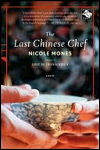 The Last Chinese Chef
The Last Chinese Chef
By Nicole Mones
Houghton Mifflin, 2007
If you ever find yourself in Searsport, Maine, on a lovely summer day — and I hope you do — stop in at Left Bank Books on East Main Street. In this small and intelligent bookstore I happened upon The Last Chinese Chef, a novel by the author of Lost in Translation. I recommend it.
Ostensibly, this is a story about food and love. The narrator, Maggie McElroy, is grieving. Young and recently and suddenly widowed from a loving husband, Maggie is shocked to learn that a paternity claim has been lodged against his estate by a woman in China, where he frequently traveled on business. She must go there to resolve it. Because Maggie is a food writer, her editor suggests that she take the opportunity of her trip to China to profile a half-American, half-Chinese cook in Beijing named Sam Liang. Sam’s grandfather wrote a famous book about Chinese cooking, and he is making a name for himself as a chef who eschews edgy, cosmopolitan trends for traditional Chinese cuisine. You can see where this is headed. They meet, learn to know each other, and good things happen. It’s a lot more complicated than that, of course. There are rich subplots relating to a cooking contest in which Sam is engaged, to the resolution of the paternity claim, to Maggie’s emergence from grief, and to Sam’s fraught relationship with his father, also a great cook, who was driven from China by the Cultural Revolution.
This novel offers a running commentary on Chinese culture generally and specifically about the place of food in that culture. Here’s a representative passage:
From the family on out, food was at the heart of China’s human relationships. It was the basic fulcrum of interaction. All meals were shared. Nothing was ever plated for the individual. She realized this was exactly the opposite from the direction in which Eurocentric cuisine seemed to be moving — toward the small, the stacked, the precious, above all the individual presentation. The very concept of individual presentation was alien here. And that made everything about eating different. (p. 164)
(As an aside, I like to refer to the “Eurocentric cuisine” the narrator describes in that passage as the “Big Plate, Little Food” movement.) I am by no means an expert on China, but I have visited there once, and I found that analysis of food and culture interesting and rewarding, and readers with an amateur interest in China will, too, I think.
Unlike the other books about food and cooking that I discuss elsewhere on my bookshelf, most recently Bill Buford’s Heat, this is a book written and narrated by a food writer rather than a chef. Consequently, the passages on food dwell more on the experience of eating than that of cooking. For example:
She plucked a morsel from the side of the bird, low on the breast where the moisture of the thigh came in, and tasted it. It was soft as velvet, chicken times three, shot through with ginger and the note of onion. (pp. 78-9)
There’s nothing wrong with this writing — I just prefer the play-by-play from the kitchen, but that’s not where this book goes. There are some recipes included in an afterward, including Beggar’s Chicken, which I am going to try at home.
A blurb on the back cover describes this book as “the perfect leisure read.” I think that under-estimates the novel.
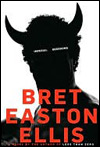 Imperial Bedrooms
Imperial Bedrooms
By Bret Easton Ellis
Alfred Knopf, 2009
I don’t know what prompted me to try another novel by Bret Easton Ellis. Don’t read this vile book.
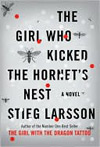 The Girl Who Kicked the Hornet’s Nest
The Girl Who Kicked the Hornet’s Nest
By Stieg Larsson
Alfred Knopf, 2010
The Girl Who Kicked the Hornet’s Nest concludes Stieg Larsson’s series of novels about investigative journalist Mikael Blomkvist and Lisbeth Salander, not because Larsson was finished with the subject but because he died before he could write the 10 novels he reportedly had planned.
I wondered, in my comments on the previous novel, The Girl Who Played with Fire, where Larsson was going with the series. Was it going to now focus on Lisbeth Salander or would it return to Mikael Blomkvist and Millenium magazine? The series appears to have been headed in the latter direction, with Blomkvist launching another investigation — this time into the injustices done to Salander by the state. The novel returns to Larsson’s broad themes about right-wing extremists, the role of a free press in a democracy, and violence against women. It’s kind of preachy.
Salander spends most of the novel in a hospital bed recovering from the wound she received in the last pages of the previous novel, so even though midway through The Girl Who Kicked the Hornet’s Nest she gains access to a computer and the Internet, her place in the novel is circumscribed. This is an interesting take on one of the tropes of crime fiction: the detective who for whatever reason is immobile and has to solve crimes by cerebration. (Rex Stout’s Nero Wolfe was such a detective.)
The first novel in this series introduced us to Salander, the second novel told us how Salander got that way, and this novel, by settling old scores with Salander’s enemies, clears the way for the next chapter in her life. The last sentence of the novel begins with the words, “She opened the door wide.” That metaphorical act tells us where this series was headed. I wish we could have the other seven novels.
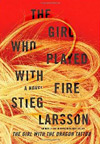 The Girl Who Played With Fire
The Girl Who Played With Fire
By Stieg Larsson
Vintage Crime/Black Lizard, 2010
In my comments on The Girl with the Dragon Tattoo, I said, “Let’s not kid ourselves: it’s the character of Lisbeth Salander that makes this book worth running out to read right away. In my view, she is clearly the most interesting female investigator in crime fiction today precisely because she is so ruthlessly amoral and portrayed as such so unapologetically until the end of this novel. I am eager to read the next one to see where Larsson goes with this character.”
The Girl Who Played with Fire doesn’t disappoint. Larsson’s first novel was about the reporter Mikael Blomkvist and his investigation into a corrupt businessman. Salander did some investigating for him, and she stole the show, but it was basically a novel about Blomkvist. This novel is about Salander. We learn where she came from and can begin to see how she got be to the way she is.
Two detective novelists in the American tradition have experimented with characters who, like Salander, first appear as ruthless, amoral warriors: Robert B. Parker’s Hawk and Robert Crais’ Joe Pike. The question for the author becomes whether, and if so how, to develop this character. Parker appeared content to let Hawk be Hawk. We don’t hear about his childhood, his friends (if any), never see the inside of his house, and so forth. Crais has taken a different route with Joe Pike both in L.A. Requiem and The Watchman, revealing his past and showing a capacity for sympathy and understanding that expands his character.
Larsson seems to be headed down that latter road with his novel, which is about Salander, not Blomkvist. We learn about her father, her mother, how she came to be under guardianship of the state. We see that she’s capable of human empathy in her treatment of her former guardian, a stroke victim. Her relationship with Miriam Wu seems to suggest that she’s capable of sustained human friendship. In many ways, we come to see her as a victim of her past, not a freak of nature.
There’s only one more Larsson novel. Where will he take this character?
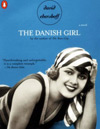 The Danish Girl
The Danish Girl
By David Ebershoff
Viking, 2000
This is a book I just picked off the reading room shelf in Rolvaag Library because the cover caught my eye. I had never heard of it, even though it was apparently an international best seller when it was published. This is why you should wander around the reading room from time to time.
The novel was inspired by the life of Einar Wegener, a Danish painter who became one of the first identifiable cases of surgical gender reassignment. The novel begins one day when Einar’s wife Greta, also a painter, asks him to put on women’s stockings and shoes and pose for her so that she can finish a portrait. Her female model had canceled that day, and she needed to do the legs. Einar complies, and thus begins the series of events that moves from Einar taking to dressing more and more often as a woman, to a forced departure from Denmark, to life in Paris, to a crisis, and to Einar’s decision, with his wife’s support, to go to Dresden for gender reassignment surgery. He emerges as Lili Elbe.
This is one of the most intimate novels I can remember reading. It’s not physical intimacy but rather a meticulous recounting of the sate of mind of someone going through this extraordinary set of experiences. Set in the 1920s, the novel also meticulously records details of daily life. At a street market in Paris the woman who sells fine skirts and blouses has chipped front teeth; Lili’s velvet cap features a yellow-diamond and onyx brooch shaped like a monarch butterfly. Reading the novel, you feel drawn further and further into the lives of the characters and the realia that surrounds them.
The novel surfaces an interesting paradox: Einar/Lili is presented throughout as weak and passive, yet he/she achieves extraordinary self-knowledge and acts upon that knowledge with extraordinary courage and determination. How could someone be at the same time so seemingly powerless and yet so brave?
This is a slow, meditative novel that will draw you into its interior space. I recommend it.
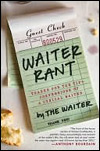 Waiter Rant: Thanks for the Tip — Confessions of a Cynical Waiter
Waiter Rant: Thanks for the Tip — Confessions of a Cynical Waiter
By Steve Dublanica
HarperCollins, 2008
I like books about food, cooking, and eating (see Julie and Julia: My Year of Cooking Dangerously by Julie Powell, Heat by Bill Buford, and In Defense of Food: An Eater’s Manifesto by Michael Pollan elsewhere on my bookshelf). For four years Dublanica anonymously chronicled his experiences as a waiter on a blog called “Waiter Rant” that ultimately won an award for best writing of a blog. This book grew out of that blog.
It’s about being a waiter. Like Anthony Bourdain’s Kitchen Confidential, which tells the story of what’s going on in the kitchen, Waiter’s Rant tells what’s going on among the wait staff. Both books present life in a restaurant as a frenetic, heart-pounding, eyeball-bulging experience. Food workers stay up too late, smoke too much, drink too much, do too many drugs, and lead messy lives. Restaurant owners are mean, greedy people with no managerial skills. Maybe it’s really like that.
Dublanica was a seminarian and then a mental health care worker before he began waiting tables, so he comes at his narrative with a kind of double-consciousness: on the one hand he’s a waiter, immersed in the adrenalin-charged business of getting food out to the table on time; on the other hand he’s standing apart from the other servers as someone with more education and more perspective — in short, as a writer. In one chapter near the end of the book he tells the story of how he eased a drunken customer out of the restaurant rather than serve her. A customer watching him says afterwards, “’You’re more than just a waiter. Aren’t you.’ ‘Yes, madam,’ I reply. ‘Yes, I am.’” (Dublanica is usually the hero of his own stories.)
There’s some fine writing in this book, but I was hoping that it would be a little less about how crummy the narrator’s co-workers were and a little more about the business of getting food on the table.
 Sum: Forty Tales from the Afterlife
Sum: Forty Tales from the Afterlife
By David Eagleman
Pantheon Books, 2009
My friend Inga Velde ’75 read this book and passed it to me. It is short, puzzling, and quirky. I recommend it.
David Eagleman is a “neuroscientist and a writer.” He calls the chapters in Sum “Tales,” and that’s a good label for them. They postulate an imaginary situation connected to the afterlife, spin out in a narrative that shows what it would be like under those conditions, and then, typically, end with an ironic twist — like an O. Henry short story — that contains something like a moral.
The first tale, for example, imagines what it would be like if in the afterlife you relived all of your life experiences so that all of the similar experiences are grouped together. You would spend 27 hours in pain, 18 months waiting in line, 77 hours confused, and so on. The tale ends by noting that you would even spend a certain amount of time wondering what it would be like if your experiences were split into tiny, more tractable morsels “where moments to not endure, where one experiences the joy of jumping from one event to the next like a child hopping from spot to spot on the burning sand.” The point of this tale, I think, is to suggest that we should take pleasure in the episodic, fragmented nature of our experience.
Another tale begins by positing that the world of the afterlife is made up only of people you know, another that in the afterlife you can choose whatever you would like to be in the next life, another that God’s favorite book is Frankenstein, and so on. One of the blurbs on the book jacket has one Geoff Dyer asserting that “Sum has the unaccountable, jaw-dropping quality of genius.” I wouldn’t go that far by any means, but it is unexpected, witty, and thought-provoking.
 Julie and Julia: My Year of Cooking Dangerously
Julie and Julia: My Year of Cooking Dangerously
By Julie Powell
Little, Brown, 2005
I love good food, I love to cook, and I thought Julie and Julia was a great movie. I was in an airport before a long flight, saw the book, and bought it.
This is a memoir. Its narrative is framed around the Julia Project, the author’s decision to cook every recipe in Julia Childs’Mastering the Art of French Cooking, Volume I in a 365-day period. She chronicled that project in a blog and then wrote this book. It’s really not a book about cooking. It’s a book about not knowing who you are, being stuck in a dead-end job, being afraid that you are permanently stuck and that you will never know who you are, and about finding a way out of that trap.
It’s fun, mostly. While it’s not a cooking book per se, or a compendium of recipes, there are lots of cooking stories, enough recipes to keep you going, and lots of funny stories of kitchen mishaps. The narrative about finding out who you are seems less sustained, though it has moments of passion and brilliance. We’re told that the author found herself through this project, but it’s not clear how or whether that actually happened.
Like many young writers, Powell goes a long way by being hip, flip, and profane. Sometimes that’s really funny, as in this description of “the French paradox”: “that much-publicized puzzle of how French people eat all that fatty food and drink tons of wine, yet still manage to be svelte and sophisticated, not to mention cheese-eating surrender monkeys“(pp. 272-3). Other times it’s just vulgar and dumb, as in ”Please understand — I love my husband like a pig loves shit” (p. 18).
So, read this book if you are interested in a frequently amusing book about cooking. If you’re looking for a memoir about finding yourself—not so much.
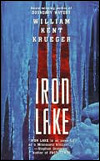 Iron Lake
Iron Lake
By William Kent Krueger
Pocket Books, 1998
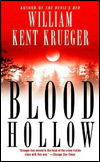 Blood Hollow
Blood Hollow
By William Kent Krueger
Atria Books, 2004
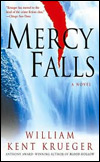 Mercy Falls
Mercy Falls
By William Kent Krueger
Atria Books, 2005
Greg Kneser, the excellent dean of students at St. Olaf, turned me on to William Kent Krueger, a Minnesota novelist who writes detective novels set in the Boundary Waters area. The detective, Corcoran O’Connor, is part Irish and part Anishinaabe Indian. He lives in Aurora, Minnesota (a thinly disguised Ely), with one foot in the town and the other in the nearby Ojibwe reservation. That’s not his only divided loyalty: he was the sheriff of Tamarack County, then he lost his job, then he won it back. So these novels are part police procedurals and part a variant of the tough-guy genre with a troubled, alienated individual with bad habits in dogged pursuit of a criminal. Then there’s Cork’s marriage to Jo, an attorney, which when it’s going well is a great thing and when it’s going badly is a real mess.
I recommend the Cork O’Connor novels for their evocation of the North Woods, their serious and respectful treatment of Native American traditions and culture, and their cold-eyed look at sin and evil.
<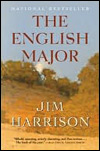 The English Major
The English Major
By Jim Harrison
Grove Press, 2008.
Why do people keep giving me books about English majors having midlife crises? And by “people,” here I mean my wife. Furthermore, when novelists want to write about adults misbehaving, why is it always the English major? What about the peccadilloes of chemistry majors, for example? Or economists? Surely they have some. Perhaps its because the people who write novels tend to have been English majors, and they write about what they know.
In any event, here’s a cranky novel about Cliff, who was an English major, taught high school English, left that profession to become a full-time farmer on his wife Vivian’s family farm, and then, at age 60, was left on his own when Vivian, who has become a “late-blooming real-estate shark” has an affair, sells the farm, and makes it clear that he is unwelcome. Cliff goes on a road trip.
He had a jigsaw puzzle as a child of the 48 states, and he resolves to visit all of them, throwing a piece of the puzzle away as he crosses each state border. Along the way he resolves to rename each state and its state bird. Renaming birds is the fun part of the novel. Bird names in general are preposterous — Rufous-sided Towhee for example, or Chestnut-vented Tit-Babbler — and in the course of the novel Cliff comes up with some excellent replacement suggestions for bird names.
But I digress. This is a book you might enjoy if you think we should pay more attention to place, you like road trips, you like narrators who are attuned to the landscape around them, you like descriptions of big hearty breakfasts, you like fishing, you don’t like cell phones, you think boats should be rowed rather than propelled by power motors, and you like lots of talk by the narrator about sex he is having, or used to have, or wants to have, mainly with younger women. Many of the blurbs describe the novel as “earthy.”
I found most of those aspects of the novel tiresome. But this is an interesting take on the novel of self-discovery. It begins with the blow to Cliff represented by losing his wife and the farm. He does what heroes have done for centuries in such a crisis — he takes to the road, has a series of adventures that put him in new situations and thus opportunities to grow, and ultimately comes home. Has he changed? Did he learn anything? That’s not clear. Earlier I called this a cranky novel. I debated while reading it whether the novel itself was cranky or merely its narrator. In the end, I think it was the novel.
 Gorbachev’s American Spy
Gorbachev’s American Spy
By Jeffery Barnett
Basil Road Books, 2010
This novella by my friend Jeffery Barnett, an immensely cultivated and interesting man, is part historical fiction, part political thriller. It tells the story of an unlikely relationship between Mikhail Gorbachev and an American military intelligence officer, Mike Shea. The author might have titled it “Mike and Mikhail.” It’s a fun and quick read. Imagine a story that spans nearly twenty years, touches upon the Soviet invasion of Czechoslovakia, Nixon’s visit to China, the Yom Kippur War, and offers insights into the Byzantine workings of the inner circles of the Communist Party during the Cold War. Highly recommended.
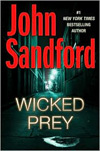 Wicked Prey
Wicked Prey
By John Sandford
G.P. Putnam’s Sons, 2009
It’s always a big day when I get my hands on a new John Sandford novel. It’s like sitting down to a piece of homemade raspberry pie topped with fresh cream: you want to devour the whole thing right away, except that then it will be all gone.
Wicked Prey is set during the Republican National Convention in Minneapolis, and it’s an interesting blend of political thriller and detective novel. There are really three plots going on here: the gang that is robbing political operatives of their walking around money; the depressing story of a mean-spirited petty criminal and his abusive relationship with a young woman; and the story of Letty, Lucas Davenport’s ward, who is growing up too fast and is just like Lucas. It’s a lot to juggle, and sometimes you feel like you’re reading a couple of different novels at once.
It’s interesting to watch what the writers of great series detectives — Robert B. Parker, Sue Grafton, even the venerable Rex Stout — do when they get into the middle of their series. They look for new directions without abandoning what’s working. Parker, for example, is keeping up the Spenser series while starting a new series featuring Jesse Stone and another new series featuring Sunny Randall, and now he is integrating characters from one series into the others. Stone and Sunny Randall have begun a relationship, and it seems inevitable that at some point Stone and Spenser are going to confront each other. Sandford also has two other series going, the Kidd novels and now the Virgil Flowers novels. The Prey novels and the Flowers novels have interlacing characters.
The most interesting part of Wicked Prey for me was the treatment of Letty. She is clearly going to be a force in future Prey novels, and the male-female, father-daughter dynamic that Sandford has set up is going to be fun to watch.
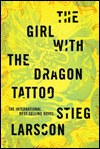 The Girl With The Dragon Tattoo
The Girl With The Dragon Tattoo
By Stieg Larsson
(translated from Swedish by Reg Keeland)
Vintage Crime/Black Lizard, 2009
I’m continuing my exploration of Scandinavian crime fiction. According to a note at the beginning of this novel, the author died in 2004 shortly after sending the manuscripts for this novel and two others to the publishers. One of the other novels is called The Girl Who Played With Fire. The other is untitled. Thus, his entire corpus of crime novels consists of these three works.
This is an intricately plotted novel because it is telling more than one story at once. There is the story of “Carl” Mikael Blomkvist, a financial journalist and co-founder (with his lover, a wealthy married woman) of a center-left magazine who has just been convicted of libel; the story of Lisbeth Salander, a ward of the state with an appalling life story, amazing investigative skills, and the morals of a cat; and the crime that brings them together, a forty-year-old missing person story involving the family of a prominent Swedish industrialist. It sounds unmanageable, but it isn’t. Larsson tells a compelling story about a crime and an investigation while developing two fascinating characters, Mikael and Lisbeth, and offering a critique of modern capitalism that resonates in light of the recent economic downturn.
But let’s not kid ourselves: it’s the character of Lisbeth Salander that makes this book worth running out to read right away. In my view, she is clearly the most interesting female investigator in crime fiction today precisely because she is so ruthlessly amoral and portrayed as such so unapologetically until the end of this novel. I am eager to read the next one to see where Larsson goes with this character.
This is a gritty novel. Gosh, the Scandinavians are dark! (And I can’t believe how much coffee gets drunk in this novel. How do they ever get to sleep?) If you’re offended by graphic depictions of brutal sexuality, don’t read this book. But if you accept that as a convention of this kind of fiction and you want to encounter a truly novel female character in a crime novel, read this one.
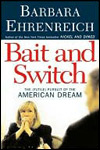 Bait and Switch: The (Futile) Pursuit of the American Dream
Bait and Switch: The (Futile) Pursuit of the American Dream
By Barbara Ehrenreich
Metropolitan Books, 2005
This book caught my eye at the public library. I’d read Ehrenreich’s Nickel and Dimed, in which she reports on the lives of low-wage earners by taking a series of such jobs. This book adopts a similar approach to a different group: white-collar unemployed. Ehrenreich creates a new identity for herself and then tries to get a job in corporate public relations. In the course of her search she seeks the help of resume writers and career coaches, attends networking events and job fairs, joins professional associations, and even gets a style makeover, but in the end she is unable to find a job as she defined it for the purposes of this book: a reasonable middle-class salary, benefits, an office from which to work.
This was a timely book when it was published in 2005: it is much more so today, when we are in the grip of the worst economic downturn since the Great Depression and unemployment the day I am writing this stands at 9.7 percent. General Motors emerged from bankruptcy last week announcing that, among other things, it would cut more than 6,000 white-collar jobs. Many Americans today are in precisely the situation Ehrenreich examines in her book, and reducing unemployment is undoubtedly one of the keys to emerging from this downturn. I wish this book were more helpful, but it’s mostly interested in excoriating the institutions Ehrenreich blames for the plight of the white-collar unemployed and the “transition” industry to which the unemployed turn for help.
Ehrenreich comes at her topic from a distinct point of view. She argues that the white-collar unemployed have done the things that are supposed to lead to success. They earned college degrees and worked successfully in meaningful jobs. They have skills, experience, and professional accomplishments. They are supposed to be living the American Dream. That’s the “bait.” But in a tough economic environment (Ehrenreich’s book grows out of the recession in the early 2000s), businesses and corporations cut costs by downsizing, “rightsizing,” and outsourcing. The workforce gets smaller, salaries and benefits get cut, and people who have skills, experience, and accomplishments find themselves not comfortable in mid-career but unemployed. They are supposed to be valued employees, but instead they are disposable. That’s the “switch.” This book describes what it’s like to be in that situation. To be fair, it does close with a solution. The best thing would be a return to fuller employment. The next best thing would be an expansion of benefits, such as universal health-care and expanded unemployment benefits to assist workers in transition. But Ehrenreich admits these solutions are “unlikely or even utopian in the current political climate,” which brings her to what is possible: self-defense. She argues that, “No group is better situated, or perhaps better motivated, to lead the defense of the middle class than the unemployed — assuming they could recognize their common interests and begin to act as a political force” (p.236). (The political climate in 2009 obviously differs from the one Ehrenreich wrote in: at least one of her “utopian” ideas, expanded health insurance for all Americans, is under serious consideration in the House and Senate today.)
The publisher’s blurb on the jacket of this book calls it “alternately hilarious and tragic.” I would call it “alternately self-righteous and mean.” Here’s an example. Ehrenreich has been working with a job coach, who does seem pretty ineffectual, and one day she decides to use a coaching session to try to persuade him that he needs to hire her as his PR person. She recounts that experience and then, driving home, observes:
I make my way back down the freeway toward the hotel, aware of all
the feelings appropriate to a pacifist on the occasion of his first kill.
Yes, I am filled with self-loathing and disgust. Slime oozes from my
hands onto the steering wheel; the white noise of the road is filled with
muffled denunciations and curses brought down on my soul. But I did,
didn’t I? I tried selling myself, and for an hour-long stretch I wasn’t
half bad. I have blooded my sword. (p. 120)
This is fancy writing, but it’s silly. Trying to persuade someone to hire you isn’t a mortal sin. This passage reflects Ehrenreich’s view of what she calls the “corporate world.” She’s so certain of its failings (and of her own superiority to it), that she can’t deliver much insight into it.
There’s good reporting in this book, and good writing. I recommend it to those who agree with, or can put up with, the agenda.
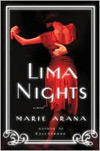 Lima Nights
Lima Nights
By Marie AranaDial Press, 2009
This is another book I picked off the shelf of new books at Rolvaag Library, not knowing anything about the author. I’m trying to be adventurous in my fiction reading. Set in Peru, it tells a story that, though familiar in many ways, holds your attention with exoticism that is curiously mixed with a hard-edged realism.
Carlos Bluhm is a middle-aged man, descended from wealthy German immigrants, married to Sophie Westermann, also descended from German immigrants, with two sons. Carlos has not been as successful as his father and grandfather, so he and his family live in faded splendor — they still belong to the exclusive Club Germania, for example, but only because his grandfather was one of its founders, not because they can afford it.
One night after a social evening with their wives at Club Germania, Carlos and his male friends go to a place called Lima Nights. There, women wearing red collars around their necks are available as dance partners. A young woman approaches Carlos and utters the novel’s first sentence: “Give me your hand.” She is beautiful, erotic, dark-skinned, and 15. You can see where this is headed, and that is indeed where it goes. Carlos embarks on a passionate affair with the young woman, Maria Fernandez, they are discovered, and his wife and sons leave him. Maria moves into the house and for the next 20 years they live together, unmarried.
Bluhm ran with the wrong crowd. His married male friends were promiscuous, but even in that context he was known as someone who turned to indigenous women for his affairs. The novel is brutally frank in its explanation for Bluhm’s preference: “It wasn’t the fragrant skin, the tiny toes, the thick black hair. An Indian woman was more disposable. It was a matter of convenience. And Bluhm’s friends understood this about him very well” (p. 19).
Maria is “disposable” not only because of her race but also because of her class. She lives in one of Lima’s worst slums, her father has died, and her mother takes in laundry for a nearby prison. There’s a different abusive man in her mother’s bed every night. When Bluhm arranges to pick Maria up on a street corner early in their affair, it’s the first time she has ridden in a car. He represents her path out of that life.
The question ultimately posed by this novel is whether Maria is, indeed, “disposable.” After she and Bluhm have been living together for 20 years she begins to worry that he has made no commitment to her, that he could throw her out on the street at any moment, and that she would be right back where she started when she first approached him at Lima Nights. I don’t want to give away the plot, so I’ll simply say that she begins a campaign for commitment, Bluhm responds, and things end badly.
The novel’s depiction of the culture of German Peruvians, its fascinating glimpses into the world of videntes, or fortune-tellers, its evocation of passion, its hard-eyed analysis of privilege and abject poverty — all these are compelling. The characters I found less so. I don’t understand what happened at the end.
Back to the Bookshelf
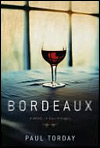 Bordeaux: A Novel in Four Vintages
Bordeaux: A Novel in Four Vintages
By Paul Torday
Houghton Mifflin Harcourt, 2009
I was in Rolvaag Library looking for a book to read, and — judging a book by its cover, which you’re not supposed to do — grabbed this one. I’m glad I did.
The novel has four sections (the “vintages” referred to in the subtitle), each prefaced with a date: 2006, 2004, 2003, and 2002. This is the order in which they occur in the novel, so you begin the story at the end, so to speak, and in the course of reading the novel come to understand how the situation with which you started came to be. Bordeaux unfolds, in this way, somewhat like a mystery novel where you begin with a murder and as the detective learns who committed it, so do you.
In this case, however, there isn’t a detective, nor is there an omniscient narrator. Bordeaux is narrated in the first-person by its protagonist, Francis Wilberforce. First-person dramatized narrators are always tricky. You have to take everything they say with a grain of salt because they are in the story — it happened to them — and they may well not understand what happened, or they may slant their interpretation of events to serve their own interests. That certainly happens in this novel. Wilberforce is not someone you will like, though you may at various points feel sorry for him. Raised in a loveless home by foster parents, utterly lacking not only in social skills but in social instincts, naïve about people and relationships, alcoholic — this is neither a recipe for a happy life nor the description of someone likely to bring happiness into the lives of others.
This novel reminded me of Evelyn Waugh’s Brideshead Revisited because it also tells the story of a solitary young man who is taken up by a wealthy, upper-class set and it doesn’t go well, particularly in matters of the heart. Here’s Wilberforce’s reaction to his first visit to Hartlepool Hall:
I imagined the world inhabited by these people to be like a garden surrounded by a high wall: inside the garden, the few inhabitants allowed to enter it enjoyed a life of leisure, in surroundings that were pleasant to the eye; outside, the world trudged about its weary business. I had been allowed a glimpse of the garden through the railings, had even stepped inside for a moment, and it had unsettled me. (p. 267)
This “unsettling” is very important. Indeed, it is at the heart of the novel, which you could think of as the story of how Wilberforce gets unsettled and what he then does. Here’s a hint as to how Wilberforce gets unsettled. It’s from an interior monologue as he sits watching a glorious sunset on the moors after his first grouse hunt with his new friends. He’s just overheard himself described by one of them as a “Nobody,” and at first it’s crushing, but then he thinks:
Because I am nobody, I can choose to be whom I like. I can choose my life to be what I want it to be. I can become anybody. I can do anything . . . . It is a matter of choice, a matter of understanding that one’s freedom to choose is limited only by courage and imagination . . . . All I have to do is stretch out my hand and take the thing I want. (p. 307).
The novel depicts that happening.
I wouldn’t read this book if you an oenophile looking for a wine-themed novel. There are a lot of wine names tossed around, some compelling descriptions of how fine wines taste, a depressing portrait of alcoholism, thoughts about wine collecting (“you own the wine; don’t let the wine own you”), but at the end of the day this isn’t a novel about wine. The love of wine is a symptom.
Bordeaux is a disciplined novel: tautly written in spare prose, carefully constructed, complex in its atmosphere and tone. I admired the craft as I was reading it, and I think you will too.
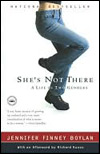 She’s Not There: A Life in Two Genders
She’s Not There: A Life in Two Genders
By Jennifer Finney Boylan
Broadway Books, 2003
She’s Not There is a memoir. I was drawn to it by several things: I love memoirs, it was written by an English professor, and it addresses a difficult, private, timely topic: what it means to be transgendered.
The 18th-century writer Samuel Johnson, my hero, once wrote, “I have often thought that there has rarely passed a life of which a judicious and faithful narrative would not be useful; for not only every man has, in the mighty mass of the world, great numbers in the same condition with himself, to whom his mistakes and miscarriages, escapes and expedients, would be of immediate and apparent use; but there is such a uniformity in the state of man, considered apart from adventitious and separable decorations and disguises, that there is scarce any possibility of good or ill but is common to human kind” (Rambler # 60). Johnson was right. We are held together by our common humanity, and every one of us has something to learn from the story of the life of another person. That’s why memoirs are such an important part of the human story.
But at another level the story of a person, born male, who always felt foreign in the male body, who struggled for years to make peace with the discord between inner identity and biological assignment, is so foreign to the experience of many readers that we might be tempted to dismiss it as unique, eccentric, inapplicable to our own lives.
You won’t have that experience reading this fine book. Jennifer Boylan’s telling of her story is compelling, funny and profound. An English professor at Colby College in Maine, she is close friends with the novelist Richard Russo, and there is a point in this book in which the two writers are lamenting one of the challenges of comic novelists: that their genre requires them to produce prose that seems effortless, despite the fact that extraordinary effort is required to make their prose seem effortless, so that readers tend to dismiss their craft, thinking, “I could have written that.” The prose of this memoir seems effortless. It might be best to call it “transparent”: it reads like a conversation in which Boylan recounts the path that led her from boyhood to college to graduate school to marriage and a family to a breakdown of sorts that convinced her to change genders. It seems honest, insightful, unpretentious and clear-eyed.
The artfulness of this book is perhaps the greatest challenge to reading it. It seems to me that the story it tells is so extraordinarily wrenching for her personally, and the effects of Jennifer Boylan’s decision to change genders so devastating for her friends and family, that you might expect to see some element of that struggle reflected in the prose. But you don’t. The narrative is, as I said above, compelling, and it opens windows from time to time into the sadness, confusion, joy, and other emotions that mark the writer’s journey. But at the end of the day it is artfully smooth. The most poignant moment of the book for me occurs about two-thirds of the way through when the author and his wife (this is before the gender shift) speak about what lies before them. His wife, who is presented with love and gentleness in this narrative, says quite plainly, “Every success you’ve had as a woman is also a loss for me. … All of that success for you just feels like failure to me. … All of the good things that have happened to you… to me, they all just mean one more thing I’ve lost” (p. 217). This is a powerful moment. I wish it had gotten more attention.
If you’re interested in this book, I invite you to read Crossing: A Memoir by the distinguished economist Deirdre N. McCloskey, my friend. She also began life as a man and changed genders. It’s another memoir of the same journey that Jennifer Boylan took, but it is told not by a practiced creative writer but rather by a working economist. The outlines of the story are, in many respects, similar. The experience of reading them is quite different. It was more fun to read Boylan’s book; McCloskey’s seemed more authentic.
 Heat
Heat
By Bill Buford
Vintage Books, 2007
The full title of this book, Heat: An Amateur’s Adventures as Kitchen Slave, Line Cook, Pasta-Maker, and Apprentice to a Dante-Quoting Butcher in Tuscany, gives you a sense of what it’s like as a read. The author, formerly a staff writer and fiction editor at The New Yorker, embarked on a food odyssey that began when the celebrity chef Mario Batali came to dinner at his house and ended with him working as a butcher in a small town in Tuscany. The full title of the book enumerates the stages of this journey, and there is a logic to it: to get ever closer to the intimate connection — in an ideal world — between us and the food we eat. Buford articulates the logic of his journey very well near the end of the book:
For millennia, people have known how to make their food. They have understood animals and what to do with them, have cooked with the season and had a farmer’s knowledge of the way the planet works. They have preserved traditions of preparing food, handed down through generations, and have come to know them as expressions of their families. People don’t have this kind of knowledge today, even though it seems as fundamental as the earth, and, it’s true, those who do have it tend to be professionals — like chefs. But I didn’t want this knowledge in order to be a professional; just to be more human. (p. 313)
The first part of this book, which tells the story of Buford’s experiences cooking in Mario Batali’s restaurant, may remind you of another fun book about cooking, Kitchen Confidential: Adventures in the Culinary Underbelly, by Anthony Bourdain. It depicts the same frantic, desperate, profane kitchen culture that Bourdain depicts. It’s exciting to read, it’s funny, and it makes you want to apply for a job as a line cook just to see if you could do it.
As this book progresses, however, it becomes more than just another chef’s memoirs about being slammed with too many orders and becomes instead a thoughtful meditation on our connection to what we eat. In many ways it ends up at the same place as In Defense of Food: An Eater’s Manifesto by Michael Pollan, but it’s much less polemical and, frankly, Buford isn’t as much of a sorehead as Pollan. Buford argues eloquently for the virtues of “small food,” food made in small quantities, by hand, by cooks who personally select the ingredients, use family recipes, and work from a memory of the tastes they grew up with.
This isn’t a recipe book, but there are some discussions of certain dishes that will send you to the store right away to assemble the ingredients and try for yourself, including how to cook short ribs, how to make ragu, what makes the perfect spaghetti alla vongole, and a whole discussion of gnocchi that is quite amusing.
Heat is just plain fun to read if you like good food, if you’re interested in Italy, or if you think of yourself as a cook. You can enjoy it in bits, like a good meal. I hope you do.
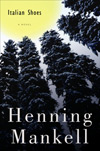 Italian Shoes
Italian Shoes
By Henning Mankell
Translated from the Swedish by Laurie Thompson
The New Press, 2006
Henning Mankell is best known as the author of the Kurt Wallander detective novels, which I have read with pleasure. This is a very different kind of novel. It will challenge you and make you uncomfortable, but it will reward you with a moving narrative about redemption.
The novel is narrated by Fredrik Welin, a surgeon who retired early after he made a horrible mistake in the operating room. Ashamed and guilt-ridden, he has retreated to the island where his grandparents had lived. He is the only inhabitant, except for two pets, a dog and a cat. He receives no telephone calls, neither writes nor receives letters, has neither internet access nor a television. During winter the island is surrounded by ice, which aptly characterizes his inner life as well as his outer life. Each winter morning Welin walks out to the sea, chops a hole in the ice and jumps in the water, just to assure himself that he’s still alive. His only human contact is the postman who stops at his island every other day, whether there’s mail or not.
It gets worse. As a young man, Welin had been in love with a woman named Harriet, whom he cruelly abandoned for reasons that he never fully explains — perhaps because he does not understand, or is not willing to admit, them himself. Here’s another source of guilt.
It’s a miserable life. Welin defends himself from the pain he has caused and the guilt he feels by freezing himself inside or, to use another metaphor in the novel, by closing all the doors to his inner life. Only his care for his animals and his daily ice baths offer any suggestion that he has the capacity or the need to change.
Then one day Harriet, dying of cancer so advanced that she can only move with a walker, appears on the frozen sea at the edge of his island. The postman has dropped her off and gone away. Thus begins Welin’s reawakening and, ultimately, his redemption. Harriet demands that he fulfill a promise he made when they were young to take her to visit a pool in a forest that Welin visited with his father as a boy. That journey leads to a shocking discovery and then to a series of people and events that ultimately dissolve Welin’s inner frost and open his inner doors, but not before he suffers gains and losses, behaves well and badly, and comes to a deeper understanding of himself and his own past.
Welin is not necessarily a person you would want to know, and he is a difficult narrator to warm up to. On the other hand, only sinners need redemption, and he sorely needs it. I said this book would challenge you because it requires the reader to observe the painful journey toward redemption by a flawed narrator surrounded by other flawed people who inhabit a flawed world. But redemption does come.
This is a fine novel about aging, family dynamics, guilt, and self-knowledge. Even in translation it is often lyrical. And it is very powerful. I recommend it.
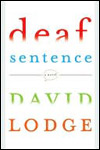 Deaf Sentence
Deaf Sentence
By David Lodge
Viking, 2008
David Lodge is a British novelist and literary critic best known for his very funny satires of academics, especially Changing Places and Small World, two novels I highly recommend. He writes academic novels, but his fictions are more universal than that designation suggests. He is a novelist of manners who happens to set many of his novels in academic settings. You might also call him a novelist of the midlife crisis, since some of his best work portrays protagonists trapped at middle age in jobs, marriages or relationships — or all of the above — that seem to be dead ends. His examination of that dynamic is both piercing and tender.
Deaf Sentence, Lodge’s most recent novel, tells the story of Desmond Bates, a retired professor of linguistics at a university in northern Britain. Desmond is married to a young, energetic, successful woman (a former student). She is still working, a fact that—compared to his retired lifestyle—tends to emphasize their age difference and make him feel somewhat ineffective and pointless. Then there’s Desmond’s father, who is cranky, eccentric, and independent, and is showing signs that he may no longer be able to live independently. But the key fact about Desmond Bates is that he is going deaf, and it’s his deafness that to some extent isolates him from others, emphasizes his age, and undermines his confidence. The novel studies his evolving relationship with his wife, the increasingly paternal role he must play for his father, and portrays the results of his increasing deafness on every aspect of his life.
The Times Literary Supplement claimed of this novel that, “Probably no other work of fiction (and possibly no medical account) has described so successfully the multiplicity of confusions, frustrations and social stratagems deriving from deafness.” I don’t know enough about the literature of deafness to evaluate that claim, but I can report that Lodge portrays Desmond’s deafness with exquisite feeling and insight. Sometimes the deafness is hilarious, sometimes it’s embarrassing and awkward, sometimes it’s sad. It is always interesting and moving.
This is a fine novel that displays keen insight, gentle humor, and generosity of spirit. I recommend it to you.
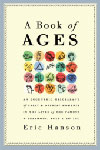 A Book of Ages: An Eccentric Miscellany of Great and Offbeat Moments in the Lives of the Famous and Infamous, Ages 1 to 100
A Book of Ages: An Eccentric Miscellany of Great and Offbeat Moments in the Lives of the Famous and Infamous, Ages 1 to 100
By Eric Hanson
Harmony Books, 2008
This is a fun book by a fun Ole. Eric Hanson ’77 has gleaned from a vast array of scholarly and popular sources a bookful of facts about things that happened to famous people at a certain age in their lives. A Book of Ages is, thus, organized chronologically by year: things that happened to famous people when they were one year old, five years old, 50 years old, and so forth, all the way from age one to age 100. (The temptation, of course, is to turn immediately to your own age, but I don’t advise that: it’s discouraging.)
This is an artfully created book. The author first had to find out all these facts, then select the ones that are most meaningful, then order them to best effect, and then express them just so. The result is a book that is at times hilarious, at others poignant, at others brilliantly ironic. It’s probably not a book that you will read in one sitting. More likely, it will rest on the table next to your favorite chair and give you hours of pleasure as you dip into it over time.
Here are some examples of what you will discover in A Book of Ages:
- At age 10, Elvis Presley sang “Old Shep” at a youth talent contest in Tupelo, Mississippi, winning second prize, which was $5 and free admission to all the rides.
- At age 16, Marlon Brando was sent to military school in Faribault, Minnesota, just south of Northfield. (He was expelled for insubordination.)
- At age 18, Woody Allen earned a D in film production at New York University.
- When he was 22, Alexandre Dumas fought a duel during which his pants fell down.
- At age 29, Jesse James tried to rob the bank in Northfield, Minnesota, but townspeople chased him and his gang out of town.
- Martin Luther was 33 when he nailed his list of complaints about the Catholic Church to the door of his church in Wittenberg. Also at age 33 Michaelangelo was hired to paint the ceiling of the Sistine Chapel, Lewis Carroll published Alice in Wonderland, Walter Cronkite joined CBS, Gertrude Stein met Alice B. Toklas, and Groucho Marx painted on a moustache for the first time.
I could go on and on, but perhaps this list gives you an idea of the flavor of the book. For a sense of the puckish writing that makes the book so fun to read, consider an entry like this one: “Novelist and playwright Sherwood Anderson dies of peritonitis and a perforated bowel after swallowing a toothpick from an hors d’oeuvre at a cocktail party. Ironically, the cocktail party is in Colón, Panama.” Or this one: “William F. Buckley retires from The National Review after 50 years at the helm, 2004. Old conservatives are seen wandering glassy-eyed and rudderless on the Upper East Side of Manhattan. Weeping is heard in Greenwich, Conn.”
It’s always wonderful to see Oles flourishing. Eric Hanson has written an entertaining and intriguing book. I recommend it.
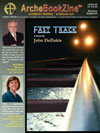 Fast Track
Fast Track
By John DeDakis
ArcheBooks Publishing 2005
I went to high school with the author of Fast Track. He’s now a senior copy editor at CNN, and this is his first novel. It’s fun to reconnect with him through his fiction.
Fast Track is a crime novel. It’s also, and mainly, a coming-of-age novel. The narrator, Lark Chadwick, was raised by her aunt because her parents were killed in a car-train crash when she was an infant. The novel opens with Lark coming home late one evening after work (she dropped out of college after three years and is working in a restaurant) to find her aunt dead of carbon monoxide poisoning, an apparent suicide. Bereft of all family, the 25-year-old Lark embarks on a journey of self-discovery by returning to the nearby small town where she was born to try to find out more about her parents. The more she finds out, the more suspicious the accident that killed her parents becomes, and that, in turn, casts doubt on her aunt’s death. Her self-discovery becomes, simultaneously, an investigation that yields surprising and disturbing results. It also leads Lark better to understand who she is, to embrace a vocation, and to create a new family.
There is an important story about faith embedded in this novel. Lark’s aunt was being counseled by an Episcopal priest, whose ministry to her and Lark leads to a revolt in his parish and teaches Lark an important lesson about forgiveness.
This is also a novel about writing. The vocation Lark discovers for herself is journalism, and it’s an investigative piece that she writes on her parents’ accident that solves the crime and brings the novel to its crisis. Mentored by the distinguished, but curmudgeonly, editor at her hometown newspaper, she learns important lessons about the techniques of journalism and about the ethics of reporting.
This is a tightly-plotted and well-written novel. You should read it.
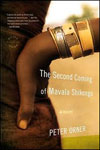 The Second Coming of Mavala Shikongo
The Second Coming of Mavala Shikongo
By Peter Orner
Little, Brown and Company, 2006
St. Olaf Regent Martha Nelson, who knows the author, gave me a copy of this wonderful historical novel about Namibia. Namibia only became independent in 1990, but of course its history stretches back much further than that, to colonization by South Africa and, before that, by Germany. These colonial periods, and the wars of liberation that led to Namibian independence, are always running in the background of this novel, but fundamentally it is about something else.
The principal narrator is an American, Larry Kaplanski from Cincinnati, who is teaching as a volunteer at a boy’s school near Goas in north-central Namibia. The narrative is unconventional, comprised of a series of vignettes, some of them as short as a paragraph and others as long as several pages. These vignettes — which contain snatches of conversation between the teachers at the school, who talk through the paper-thin walls that separate their rooms in the Singles Quarters — tell brief stories of events at the school, paint sketches of other characters in the novel, and so on. So be prepared for a narrative that is connected more often by intuition or association than by chronology and held together more by tone than by the more familiar conventions of plot.
Mavala Shikongo is a young woman who comes to teach at the school. A veteran of the wars of independence, an unwed mother, and the source of erotic fantasies by all the male teachers, she and Kaplansk — an African woman and a white man — begin an affair, carried out on the graves of Boer settlers during siesta.
What is this book about? The effects of war on innocents; frustrated personal and national ambition; love; sex; brutality; coming of age. It is also very funny.
Most of all, what draws you to this novel is its tone, which manages to be both clear-eyed in its recognition of faults and failings and capacious in its ability to forgive. Its power of empathy draws you in and binds you to the lives and thoughts of the characters. It’s a fine novel, and I recommend it enthusiastically.
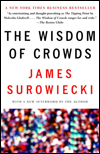 The Wisdom of Crowds
The Wisdom of Crowds
By James Surowiecki
Anchor Books, 2005
Over the past year I have been reading a series of books on the general subject of how we make decisions, toward a goal of creating a conceptual framework to help me, and others, make the best decisions for St. Olaf College. The Wisdom of Crowds was recommended to me by the distinguished environmentalist Susan Seacrest ’75, our 2008 commencement speaker.
Fundamentally, this book argues that “under the right circumstances, groups are remarkably intelligent and are often smarter than the smartest people in them” (p. xiii). Individuals, Surowiecki, argues, are not necessarily “perfectly designed decision makers” (p. xiv). We lack the ability to make “sophisticated cost-benefit calculations,” we let “emotion affect our judgment,” and we generally operate with less information than we need. But the imperfect judgments of imperfect decision makers, when “aggregated in the right way,” are “often excellent” (p. xiv). Surowiecki explains this nicely: if 100 people run a 100-meter race and you average their times, that number will be slower than the fastest runners. But if 100 people answer a question, the average answer will “often be at least as good as the answer of the smartest member” (p. 11).
What conditions are required to tap into the decision-making ability of a group? “Groups generally need rules to maintain order and coherence”; “Groups benefit from talking to and learning from each other”; “Diversity and independence are important because the best collective decisions are the product of disagreement and contest, not consensus or compromise;” “The best way for a group to be smart is for each person in it to think and act as independently as possible” (pp. xix-xx).
Surowiecki describes a multitude of instances where a group made measurably better decisions than any of the individuals in the group, from judging the weight of an ox at a country fair (p. xi) to estimating where a missing submarine might have ended up on the ocean floor (p. xx) to fingering the responsible party in the 1986 Challenger tragedy (pp. 7-10) to predicting the winner of the Iowa presidential primary (pp. 17-22). Some of these groups consist of random fairgoers, some of engineers and military personnel, some of stockholders, some of political junkies.
For me one of the most important insights of this book is the requirement that in order to tap into the power of collective decision-making, the group — whatever its size — must be cognitively diverse. In other words, it must be comprised of individuals with different points of view, different experiences, and different solutions to the problem at hand. Diversity is so important because “it actually adds perspectives that would otherwise be absent and because it takes away, or at least weakens, some of the destructive characteristics of group decision-making” (p. 29). Diversity is more important in a small group or in an organization such as a Board of Directors than in large one, like the stock market, that is almost by definition heterogeneous. Citing research done at the University of Michigan, Surowiecki argues that sheer intelligence alone is not enough to guarantee the best decision-making in a group “because intelligence alone cannot guarantee you different perspectives on a problem” (p. 30). As this book moves from its conceptual argument to the series of case studies that marks its latter half, it returns over and over again to the necessity of cognitive diversity to effective decision-making.
The Wisdom of Crowds is a fundamentally democratic book. It argues for bottom-up, rather than top-down, decision-making. It argues for the free and complete communication of information, and it argues against the cult of the expert. For example, in the context of corporations the book argues that “The more power you give a single individual [i.e., the CEO] in the face of complexity and uncertainty, the more likely it is that bad decisions will get made. As a result, there are good reasons for companies to try to think past hierarchy as a solution to cognition problems” (p. 221).
It’s easy to make fun of the decision-making process in place at most colleges and universities. I’ve done it myself. Certainly anyone who has ever sat through a faculty meeting or seen a committee take a year to come up with a recommendation has reason to lament the inefficiencies inherent in the system. On the other hand, The Wisdom of Crowds suggests that the deliberative process in place at an institution like St. Olaf, though cumbersome at times, conforms rather well to the best practices for tapping into the collective wisdom of the crowd. Where this book suggests that the college needs to exercise vigilance is in the need for cognitive diversity among its decision makers. One of St. Olaf’s great strengths is its strong institutional identity, born of its history and nurtured over time. As with individuals so it is with institutions: often our greatest weaknesses are the flip side of our greatest strengths, and in seeking to be faithful to our history and to preserve our identity we need to guard against closing off the kind of diversity of opinion and experience that might limit us over time.
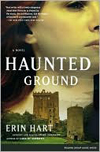 Haunted Ground
Haunted Ground
By Erin Hart
Scribner, 2003
Oles go on from our college to do many good things, including writing fine novels like this one by Erin Hart ’80. Greg Kneser, our esteemed dean of students at St. Olaf, shared this book with me, and I recommend it highly to you.
Haunted Ground begins with a grisly discovery. A farmer digging peat in a bog in Ireland unearths the severed head of a young woman. Apparently, bogs have preservative powers, so the head could be hundreds of years old. The National Museum in Ireland has jurisdiction over such bog finds, and they dispatch Cormac Maguire, an archeologist at University College, Dublin, and Nora Gavin, a lecturer in anatomy at Trinity College Medical School, to investigate. To complicate matters, the bog in which the head was discovered sits at the nexus of a whole set of tensions, conflicts, and complications among neighboring residents, including an angry farmer with a complex family dynamic, a widower whose wife and son recently disappeared and who is a suspect in their disappearance, Detective Garrett Devaney who is not supposed to be investigating the disappearance of the wife and son but does so anyway, and more than a little sexual tension between Cormac and Nora.
If it sounds to you as though there’s a lot going on in this novel, you’re right: there is. But Hart interweaves the narrative of the investigation into the severed head, the investigation into the disappearance of the wife and son, the issues of the angry farmer and his family, and the relationship between Nora and Cormac into one coherent story. The narratives become more closely connected as the novel progresses, until by the end pulling on one thread unravels them all. This is a novel about parents and their children, about husbands and wives, about lovers, about anger, and about forgiveness.
If you are interested in Ireland and things Irish you will love this book for its powerful evocation of Irish musical traditions, its depiction of Irish landscapes, its portraits of the Irish, and its careful attention to Irish history. If you love rich and evocative prose, you will admire this novel’s bold eloquence. And if you love a narrative about how a crime gets solved, you will take pleasure in Detective Garrett Devaney’s unraveling of a modern crime and Cormac and Nora’s unraveling of an ancient one.
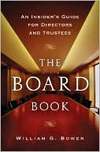 The Board Book: An Insider’s Guide for Directors and Trustees
The Board Book: An Insider’s Guide for Directors and Trustees
By William G. Bowen
W. W. Norton & Company, 2008
William G. Bowen, president emeritus of Princeton University and president emeritus of the Andrew W. Mellon Foundation, is one of the country’s leading commentators on organizational governance. His service as a director on the boards of such for-profit companies as Merck and American Express and as a trustee on the boards of such nonprofits as the Smithsonian Institution and Denison University, has given him a synoptic view of the governance issues in both realms. In this new book, Bowen discusses the role of a board; weighs in on the debate about how to structure board leadership; reviews the hot-button issues of CEO compensation, evaluation, and transition; offers insights on how to build an effective board; and describes best practices for managing board affairs. Governance might sound like a dull subject to some readers, but in a post-Enron world it has become critical for organizations to attend to their governance structures and practices. Bowen’s book gets right at the key issues and discusses them incisively. It’s a good read.
One of the most interesting aspects of this book for me is Bowen’s discussion of how different elements of governance play out differently in the for-profit and nonprofit sectors. For example, more and more for-profit companies are moving away from the model where the CEO also chairs the board of directors. Some companies have moved directly to the opposite model where a non-executive chairperson chairs the board, while others have transitioned to the “lead director” model. In the nonprofit world — and certainly in colleges and universities — the non-executive chairperson model has been in place for many years. In this respect, the nonprofit sector has been the leader in establishing a best practice in governance. On the other hand, as Bowen points out, the for-profit sector is far ahead of nonprofits in establishing clear performance metrics for the organization and its leadership and in making data-driven evaluations of performance.
Bowen writes with great insight about the challenges to mission-driven organizations (a category which includes most nonprofits) in using performance metrics. Nonprofits pursue a “double bottom line”: they must not only show that they are deploying their resources in the most effective way but also that they are serving the mission of the organization. It is this second bottom line, the “return on mission,” that is challenging to measure and assess. Bowen cautions nonprofits not to lose sight of this second bottom line and “begin to evaluate themselves solely on the basis of financial results.” (p. 29)
The issues addressed in this book are, obviously, important for a college president to consider. Working effectively with the Board of Regents to further the mission of the college is among the most important responsibilities of the president of St. Olaf. I found much in this book to help me with that work. This book would also be of benefit to any reader who serves on a for-profit or nonprofit board and would like to enhance either one’s own effectiveness as a board member or the effectiveness of the board. And it would be a great read for anyone considering joining a board. I recommend it.
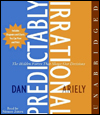 Predictably Irrational: The Hidden Forces that Shape our Decisions
Predictably Irrational: The Hidden Forces that Shape our Decisions
By Dan Ariely
Harper Collins Books, 2008
I have been reading a series of books by psychologists, doctors and economists this winter and spring about decision-making, toward a goal of making better decisions — or being less likely to make bad ones — in my role as a college president. The other titles include Malcolm Gladwell’s Blink, Daniel Gilbert’s Stumbling on Happiness, Freakonomics by Steven J. Levitt and Stephen J. Dubner, and How Doctors Think by Jerome Groopman. (I already have the next one in my sights: The Wisdom of Crowds by James Surowiecki.)
Predictably Irrational is a terrific book and a good read. I recommend it to you. Ariely is a behavioral economist, and he argues that “we are all far less rational in our decision-making than standard economic theory assumes.” Moreover, he believes that “our irrational behaviors are neither random nor senseless — they are systematic and predictable” (p. 239). He accuses standard economics of operating from a theory of how humans should behave, whereas behavioral economics draws its conclusions from studies of how people actually do behave.
Take anchoring, for example. (Anchoring, incidentally, is also discussed in a very interesting chapter of How Doctors Think in which Groopman describes it as a cognitive process that leads some doctors to make mistakes in diagnosis.) Ariely compares anchoring to imprinting, the process by which a baby gosling, upon breaking out of the egg, forms an attachment to the first thing it sees. In one study he asked his students to write down the last two digits of their social security number as a dollar amount (i.e., 23 would equal $23) and then invited them to bid on items in an auction. Students with social security numbers in the high digits were willing to bid the most for the auction items, while those with the lowest were willing to bid the least. The students imprinted, or anchored, on those numbers. Ariely then offers an compelling analysis of the price many Americans are now willing to pay for a cup of brewed coffee, describing the internal process by which we move our anchor from the price of Dunkin Donuts coffee to the price of Starbucks coffee. That, in turn, leads to an argument that we must rethink our notion of how supply and demand work. Ariely argues that our willingness to pay (demand) has to be understood in the context of a complex set of internal processes, like anchoring, such that it might be the market price itself that influences demand, rather than the other way around.
There are many other chapters in the book with similar insights. The most relevant for a liberal arts college, I think, is Chapter 4: “The Cost of Social Norms.” Ariely wants to distinguish between two separate realms, which all of us occupy simultaneously: the realm of market norms and the realm of social norms. As long as we keep them separate, we have clear markers about how to evaluate other people, or entities, and their actions. We don’t expect our bank to be generous and forgiving when we overdraw our checking account: we expect to pay a fee. Similarly, we don’t expect our parents to present us with a bill after dinner at home, nor would we bill them for going over to their house and moving a couch. This is why a few years ago AARP could get lawyers to volunteer free services for needy clients but could not persuade them to offer those services for a reduced fee of $30 an hour. Free legal services offered as a volunteer are governed by social norms; but once a fee enters the equation, market norms governed, and lawyers weren’t willing to work for that rate. Ariely points out that one direction corporations and other entities have taken is to attempt to create “social norms” around market relationships by creating a sense of family in the workplace or suggesting that a business relationship is like a family relationship. This might work well to attract customers, or to attract employees, but when the corporation reverts to exclusively market norms (outsourcing jobs, cutting pensions and benefits to control costs, etc.), the attempt to conflate these two realms falters, and the backlash is severe. St. Olaf regularly describes itself as a family and talks about its sense of community, and those terms extend beyond the campus to include parents, grandparents, and alumni. Indeed, I just recently wrote a letter to the parents of members of the Class of 2012 that began, “Welcome to the St. Olaf family.” But in truth we have not only social norm relationships but also market relationships with students and their families who pay tuition and fees, and it may be that we have not given careful enough thought to the extent to which we are confusing others, and ourselves, by the way we talk about our relationships in the context of how we behave toward members of our “family.”
Ariely’s book is optimistic. He points out our many foibles and irrationalities not to show how smart he is (though he does accomplish that as well), but rather to show how we can avoid making mistakes because of these traits we have (or as he would put it, because of the way our brains are wired). Thus, at the end of the chapter on anchoring he suggests ways we can avoid being trapped into, say, an unwise purchase by marketing forces. At the end of the chapter on social norms he offers good advice to employers about how to manage those two realms. In this respect his book ends better than Daniel Gilbert’s Stumbling on Happiness, which also points out how irrationalities pose an obstacle to happiness but which gives us much less direction in how to avoid them.
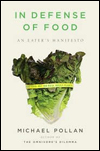 In Defense of Food: An Eater’s Manifesto
In Defense of Food: An Eater’s Manifesto
By Michael Pollan
The Penguin Press, 2008
This book was a gift from my wife, Priscilla Paton, who always reads interesting books. It’s by the author of The Omnivore’s Dilemma, which she’s reading now, and The Botany of Desire, a New York Times best seller. The author is a journalism professor at the University of California-Berkeley. Priscilla thought I might enjoy this book because I love good food (college presidents do a lot of business over meals), and I just had a physical during which the physician remarked that I might be enjoying good food a little too much.
Here’s the message of this book in seven simple words: “Eat Food. Not Too Much. Mostly Plants.” This is great advice. If we all followed it scrupulously, we’d be healthier. What exactly do these seven words mean? This is a 200-page book. If you want the executive summary, read the last two chapters, which spell out the conclusions reached by the previous 160 pages. Here are some of them: avoid food products containing more than five ingredients or ingredients that are unfamiliar, unpronounceable, or include high-fructose corn syrup. Shop the peripheries of the supermarket and stay out of the middle (processed foods tend to occupy the center aisles of the store, while produce, meats, and dairy tend to line the walls). Shop elsewhere than the supermarket, such as at farmers’ markets or CSAs (community supported agriculture). Eat mostly plants, especially leaves (as opposed to seeds).
Then there is a list of recommendations regarding how we eat, as opposed to what we eat. Among other things, the list recommends that you: do all your eating at a table; try not to eat alone; judge when you’ve had enough by how full you are, not by how much is left on the plate; and eat slowly.
These are all good suggestions, and I imagine most of us have heard them before. Since finishing this book, I’ve found myself looking with a more critical eye — and I thought I was already being pretty careful — at the list of ingredients on food packages. At lunch today, for example, I had some soup that I bought because it was a no fat, low sodium, Healthy Request® product, but I’d hate to tell you how many ingredients it had that were both unfamiliar and unpronounceable.
Nevertheless, I’m not sure what to make of this book. The first 160 pages are a diatribe against what Pollan calls “Nutritionism,” the proposition that “we should understand and engage with food and our bodies in terms of their nutritional and chemical constituents and requirements” (Pollan, quoting a sociologist of science named Gyorgy Scrinis (p. 27)). More simply, nutritionism thinks of foods as “essentially the sum of their nutrient parts” (p. 28). Nutritionism leads us to prefer processed foods to which we can add “good” nutrients and from which we can remove “bad” nutrients until we end up preferring processed foods to “real” food. Worse, Pollan argues, nutritionism serves the interests of manufacturers of processed foods, interposes “science” between us and whole foods, and takes away our delight in eating.
I had the interesting experience of consulting a nutritionist (see the reference to enjoying good food a little too much in paragraph one) at one of America’s most distinguished clinics during the same week that I read In Defense of Food. This nutritionist spoke favorably of a new pasta on the market that is enriched with various things that are good for you but don’t occur in regular pasta. This is exactly the kind of thing Pollan hates. My dilemma is who to believe: a nutritionist at a distinguished medical center or a journalism professor who sometimes, to be honest, comes off as a crank.
The right answer for me, as with most either-or questions, is probably “both.” Pollan’s last two chapters contain great suggestions about eating with care, but I don’t think I’ll re-read the early chapters.
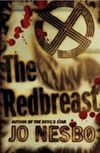 The Redbreast
The Redbreast
By Jo Nesbo
Published in Norway as Rødstrupe, 2000
Translated by Don Bartlett, 2006
Harper, an imprint of Harper Collins Publishers, 2006
Professor Margaret O’Leary of St. Olaf’s Norwegian Department is teaching a course this semester on Nordic crime fiction. This is one of the required texts, and I’m going to speak about it in the class later this semester. According to the book’s dust jacket, members of Norwegian book clubs in 2004 voted The Redbreast the “Best Norwegian Crime Novel Ever Written.” Since I haven’t read all of the other Norwegian detective novels (though I have read Nesbo’s other, later novel), I can’t comment on that claim, but I can confirm that this is an ambitious novel and a compelling narrative.
Crime fiction has always had its detractors who dismiss the genre as formulaic, cheap, superficial, fascistic, or just plain boring. Its most famous detractor, the American critic Edmund Wilson, summed up these objections in 1945 in an essay that borrowed for its title a character from an Agatha Christie novel, Who Cares Who Killed Roger Ackroyd? That about sums it up. Some defenders of crime fiction respond by arguing that this or that detective novel stands on its own merits as a great work of fiction. I don’t find that argument persuasive in most cases, but if I were to make that argument about a particular detective novel I would be tempted to make it about The Redbreast.
This novel features Harry Hole, a detective on the Oslo police force and a descendent of the Tough Guy tradition in crime fiction that we associate with Dashiell Hammett or Raymond Chandler: he lives alone, he drinks and smokes too much, he responds badly to structure and hierarchy, he will bend any rule, he’s foul-tempered, and he’s attracted by and attractive to beautiful women. At its core, the plot of the novel requires Harry to solve a crime — someone has smuggled into Norway a rare and powerful rifle that is most likely to be used for an assassination attempt, and he has to find out who has the rifle and to prevent the assassination. He does, and in doing so he also solves numerous other crimes that are causes of, or are caused by, the smuggled rifle.
But — and here’s where this novel gets ambitious — this crime plot is embedded in a sweeping historical fiction about Norway and World War II, especially about Norwegian men who went to the Eastern front and fought with the Germans and who, when they returned to Norway after the war, were tried and punished as traitors. Nesbo presents a complicated and human version of these men and the decisions they made during wartime, the effects of war upon them, and their subsequent lives. The narrative moves back and forth between events in the 1940s and Harry Hole’s investigation, which ends up involving many of these men and their families. The novel thus becomes a study of Norway’s experience of the war and the ways it constructed that history during the post-war years. Nesbo manages to engage this sweep of events and these complicated and emotional subjects without diluting the tension created by Harry Hole’s race against time to find the assassin and prevent an assassination.
The artistry of the novel is evident not only in the plotting but also in Nesbo’s use of the story of David and Bathsheba, which echoes both in the narrative of Norwegians on the Eastern front in the 1940s and in the contemporary Norwegian setting of the novel. The pattern of imagery in The Redbreast, particularly images related to birds, provides one of the sources of coherence and continuity to the broadly ranging narrative.
So, if you don’t care who killed Roger Ackroyd but you do care about depictions of contemporary Norway and explorations of its recent history, I predict that you will enjoy this novel. If you are a fan of the dark strain in Nordic crime fiction, this novel is a must.
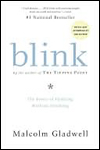 Blink: The Power of Thinking Without Thinking
Blink: The Power of Thinking Without Thinking
By Malcolm Gladwell
Little, Brown and Company, 2005
I had read Malcolm Gladwell’s many fine articles in The New Yorker before I read Blink, and I had heard readers talk about the book, so I thought I knew what to expect when I opened it. I was wrong.
This book does not argue, despite what people will tell you, that snap decisions are the right ones, or that intuition is more likely to be right than careful deliberation, or that you can know what to do in the blink of an eye. Its short title, Blink, without the subtitle, The Power of Thinking Without Thinking, encourages such a reading.
Quite to the contrary, however, Blink is actually a book about how not to over-think problems. It assumes that you have a deep knowledge of a subject. Beginning with that assumption, it shows how you can keep from being weighted down, misdirected or confused by details and, thus, make a wrong decision. If you don’t know anything about a subject, a snap decision about it will be exactly what you would expect it to be: uninformed, superficial and most likely wrong. This is a book about something else: how to be able to see the forest despite the trees.
The story with which Blink begins illustrates Gladwell’s argument. The Getty Museum in California was offered an opportunity to purchase from an art dealer a 6th-century B.C. marble statue. The Museum approached the offer with appropriate skepticism, studying it for 14 months, even to the extent of hiring a geologist to examine the stone from which the statue was made to verify its antiquity and to see whether it was consistent with the geology of the site where it was presumably found. Persuaded, finally, by X-rays, mass spectrometry, an electron microprobe and other tests, the museum purchased the statue. When the new purchase was shown to a distinguished art historian and an expert on Greek sculpture, she immediately knew it was a fraud. She and a number of other art historians knew in seconds what 14 months of due diligence had failed to recognize. As Gladwell says, “Blink is a book about those … two seconds” (p. 8).
The art historians who immediately knew something was wrong with the statue were the world’s foremost authorities on Greek statuary. They had seen countless Greek statues, some coming out of the ground, some in museums. They had touched and handled them. They had a deep knowledge of the subject. When they saw the statue, in a quick, holistic judgment it looked wrong to them. A geologist looking at the results of an X-ray only saw the results of the X-ray. Gladwell calls the quick assessment of the statue by art historians a “thin slice” of experience. He argues that thin slices can contain vast amounts of information and that they do indeed constitute the basis for good decisions.
Blink offers other examples of this same phenomenon, but it is more than a collection of anecdotes. For example, in a fascinating chapter about war games, it shows how a military general created a “structure for spontaneity” that enabled him and his team to outmaneuver an opposition that had a vastly superior capability in technology and was overwhelmed with data.
This is a good book for people with leadership responsibilities because of its helpful focus on efficient, holistic thinking, on the big picture, on what matters. I recommend it.
 Before the Frost
Before the Frost
By Henning Mankell
Published in Sweden as Innan frosten, 2002
Translated by Ebba Segerberg, 2004
Vintage Books, an imprint of Harper Collins, 2006
My friend and colleague at St. Olaf Janet Kringen Thompson, who also tends to be beguiled by crime fiction, loaned me this novel. I was delighted to read another work by Henning Mankell. The Scandinavians are producing terrific crime fiction these days between Mankell, Jo Nesbo (see my thoughts on Devil’s Star ), and Anne Holt (see my thoughts on Punishment). I am by no means expert in Scandinavian literature; perhaps there are other writers in this tradition that I have not discovered yet.
Before the Frost takes on the subject of religious mania. From its opening scene in the ruins of Jim Jones’s suicidal sect in Guyana to its closing scene in a churchyard near Skurup, Sweden, this novel depicts the murderous path of a man who has persuaded himself, and a band of followers, that God has appointed him to administer justice to sinners. This involves, among other things, re-writing the Bible, and a major clue in the police investigation here is a Bible in which one of the suspects uses interlinear annotations to reverse the meaning of scripture. In a nicely conceived passage that gets at the heart of this theme, a university theologian, examining this Bible, points out to the police that Romans 7:19: “The good that I wish to do, I do not; but the evil that I do not wish to do, I do” has become, in this devil’s scripture, “The evil that I wish to do, I do; but the good that I do not wish to do, I do not do.”
But this novel is not just about a murderous religious maniac and the police investigation that aborts a terrorist plot. Inspector Kurt Wallander’s daughter Linda has finished her training course at the Police Academy and is preparing to join the same force where her father works. The personal and professional dynamics of this relationship play a central role in Before the Frost, which is in many ways a coming of age novel about Linda Wallander. Another, deeply disturbed, father-daughter relationship in this novel, between the central figure in the crime and his own daughter—one of Linda’s childhood friends—gives depth and contrast to the father-daughter dynamic between the Wallanders. It’s very well done.
The Scandinavian crime writers are nothing, if not bleak, but if you are prepared for a dose of darkness and you relish an exploration of the inner life as much as solving crimes, then you will enjoy Before the Frost.
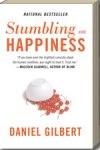 Stumbling on Happiness
Stumbling on Happiness
By Daniel Gilbert
Vintage Books, a Division of Random House, Inc., 2005
This winter I’ve been reading books that, from a variety of methodologies and perspectives, analyze how we humans make decisions. More specifically, these books have studied what kinds of cognitive and emotional errors lead us to make bad decisions. How Doctors Think was a study in how to know what you don’t know; Freakonomics argued that you will make better decisions if you know what to measure and how to measure it; and Blink, by Malcolm Gladwell, argues that you can succumb to “paralysis by analysis” if you forget, in certain situations, to look holistically at data rather than tearing into, and getting lost in, a forest of details.
Stumbling on Happiness, by the Harvard psychologist Daniel Gilbert, argues that because of the way our minds work we tend to misremember the past, misperceive the present and, misimagine the future. Because our understanding of ourselves is based on wrong information about what has happened to us and is happening to us, we are at a disadvantage in making important decisions about our lives. This is not a gloomy book, however. Gilbert’s goal is to show us how our minds work so that we can overcome these tendencies, understand our situations more clearly, and be more happy. He believes that if there is no sure path to happiness, it is better to understand what makes us stumble on that path than simply to wander, lost in error and confusion.
So what is it about the way our minds work that can lead us to such error? A central mental operation that confuses us Gilbert calls “filling in.” “The elaborate tapestry of our experience is not stored in memory—at least not in its entirety,” Gilbert argues (p. 87). Thus, when we want to remember something, our brains “reweave the tapestry by fabricating—not by actually retrieving—the bulk of the information that we experience as memory” (p. 87.) As countless researchers have demonstrated, “the act of memory involves ‘filling in’ details that were not actually stored; and … we generally cannot tell when we are doing this …” (p. 88). This same act of “filling in” characterizes our perception of the present, too, so that what we believe we see, read, and hear may often contain material that the brain imported, without our knowledge, to fill a gap in perception. When we try to imagine the future, because our imaginations “cannot easily transcend the boundaries of the present” (p. 138), our image of the future tends to be colored by the present moment. If you’ve had a terrible day, researchers have found, you have a difficult time imagining having a good time in the future, even when you’re imagining an activity you like to do.
Gilbert’s work, incidentally, reminds me very much of my favorite writer, Samuel Johnson who, in the eighteenth century, wrote a series of brilliant and deeply felt essays, the Rambler essays, on how the two great human emotions of fear — which repels us from things — and hope — which draws us towards things — can trap us in a vicious cycle of attraction and repulsion, of past and future, that prevents us from finding happiness in the present.
What does Gilbert suggest we do, given his analysis? We can’t change the way our minds work, and, indeed, we shouldn’t. But it is important that we understand how our minds work so that, to the extent we are able, we can recognize when memory is “filling in” and creating a fictitious past, or our feelings about dinner with friends tomorrow are being colored by the rotten day we had today. Gilbert argues that “our experience of the world — how we see it, remember it, and imagine it — is a mixture of stark reality and comforting illusion. We can’t spare either” (p. 176). Understanding that dynamic can help us preserve a balanced view of ourselves and our experience. Our minds may fill in details from our present when we try to imagine the future, but our ability to imagine the future at all enables us to “learn from our mistakes without making them and to evaluate actions without taking them” (p. 263).
The prose style of Stumbling on Happiness is remarkable. One reviewer described it as a cross between Malcolm Gladwell and David Sedaris. I would describe it as, over time, annoying. Gilbert never misses an opportunity to be witty, with the result that this book is genuinely funny at some times but at other times just plain tiresome. Samuel Johnson described the pun, for Shakespeare, as the “fatal Cleopatra for which he lost the world, and was content to lose it” (Johnson wasn’t a fan of puns). Gilbert’s fatal Cleopatra is the wry witticism. It’s like spending the whole day with a stand-up comedian who never stops cracking jokes. But this is nevertheless a deep book on an important subject, and I recommend it to you.
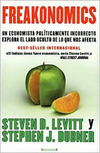 Freakonomics: A Rogue Economist Explores the Hidden Side of Everything
Freakonomics: A Rogue Economist Explores the Hidden Side of Everything
By Steven J. Levitt and Stephen J. Dubner
William Morrow, an imprint of Harper Collins, 2005
The authors of this book, an economist from the University of Chicago and a writer for the New York Times, coined the term “Freakonomics” to describe their purpose in this book: to employ “the best analytical tools that economics can offer . . . to follow whatever freakish curiosities may occur to us” (p. 14). In their view, “since the science of economics is primarily a set of tools, as opposed to a subject matter, then no subject, however offbeat, need be beyond its reach” (p. 14). If you are detecting a certain amount of hubris in their tone here, and in the claim of the book to explore the “hidden side of everything,” you’re not far wrong. But then, quite frankly, a certain amount of hubris often seems to come with the territory when you’re dealing with economists.
This book begins by articulating its key assumptions: “Incentives are the cornerstone of modern life”; “The conventional wisdom is often wrong”; “Dramatic effects often have distant, even subtle, causes”; “‘Experts’ … use their informational advantage to serve their own agendas”; and “Knowing what to measure and how to measure it makes a complicated world much less so” (pp. 13-14). The first and last of these assumptions are, of course, the key ones. The authors believe that you can understand human behavior by discerning the personal advantage that accrues to an individual from behaving one way versus the other. Parents at an Israeli day care center will not be discouraged from picking their children up late if the fine is three dollars, because whatever they are doing to make them late is worth more to them than the three dollars. Moreover, when the day care center institutes a three dollar charge for late pick-ups, the number of parents arriving late actually increases because not only is the sum nominal but now that they are paying for this service they don’t feel guilty about leaving their children longer. In online dating, “for men, being short is a big disadvantage (which is probably why so many lie about it), but weight doesn’t much matter. For women, being overweight is deadly (which is probably why they lie)” (p. 83). You get the picture.
The second assumption follows from the first. If our behavior is driven by incentives, then to understand that behavior you must figure out what aspect of it that can be measured will reveal the true nature of the incentives driving us. As the authors say early on in the book, “Morality … represents the way that people would like the world to work — whereas economics represents how it actually does work” (p. 13). For example, the reason why parents name their children in a certain way can be understood from studying a vast database of children’s names in California that is correlated against information about the parents’ socioeconomic status. High-status names tend to be adopted by low-status parents, causing high-status parents to choose different names that are then adopted by low-status parents, and so on. (Incidentally, if the authors are correct, there are going to be some children with pretty silly names coming our way soon.)
If you buy these key assumptions you will find this book deeply insightful, and if you don’t buy these assumptions you will have lots of chances to push back against the arguments. In either case, I predict that you will find it surprising and funny. The authors are good at posing outlandish questions to introduce their analysis of a particular issue: what do sumo wrestlers and teachers in the Chicago public schools have in common? What did a pregnant, single mother in Dallas in 1970 have to do with the drop in crime all across America in the 1990s? Why do crack dealers live with their moms? (The answers, though interesting, are never quite as astounding as the questions might lead you to expect.)
For me the great value of the book is its insistence on a rigorous critique of received wisdom and its impatience with self-serving arguments, moral posturing, and lazy thinking. The authors rightly emphasize the role technology is playing in providing each of us the information to do this analysis — the price of term life insurance fell dramatically in America when the Internet made it possible to easily compare rates, for example — but it’s up to us to have the energy to ask the questions and the discernment to find the right questions to ask. Whether you believe that all of our behavior is incentive-driven or not, this book’s insistence on persistent questioning is a good thing.
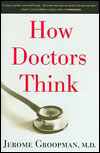 How Doctors Think
How Doctors Think
By Jerome Groopman, M.D.
Houghton Mifflin, 2007
This is a fascinating book, and I urge you to read it, even if you aren’t particularly interested in doctors or medicine. A better title for it might have been “How To Reduce the Likelihood that You Will Make A Big Mistake” or “Some Help in Knowing What You Don’t Know.” That’s really what this book is about: how our cognitive processes and our feelings can lead us to draw incorrect conclusions from data. This book analyzes that problem through the lens of clinicians making diagnoses in hospitals and doctors’ offices, but it could just as well have been about how CEOs or college presidents think. You’d have different contexts but the same types of errors to study.
Groopman makes extensive use of research done by cognitive psychologists, who study this sort of thing. It turns out there are names for many of the common mistakes in our thinking. For example, there is the availability error: “the tendency to judge the likelihood of an event by the ease with which relevant examples come to mind” (p. 64). (This type of error has also been used, incidentally, by economists to explain irrational behavior in the marketplace.) Groopman uses the example of a clinician who misdiagnosed aspirin toxicity in a woman because it had some of the same symptoms of subclinical pneumonia, and the doctor had seen numerous cases of that in other patients recently. Or there’s “anchoring”: “a shortcut in thinking where a person doesn’t consider multiple possibilities but quickly and firmly latches on to a single one” (p. 65). Another, which follows anchoring, is “confirmation bias,” which is “selectively accepting or ignoring information” (p. 65). If you latch too early on to a diagnosis (that’s anchoring), then you are likely to pay attention to the symptoms that confirm that diagnosis and to ignore those that, inconveniently, do not (that’s confirmation bias). There are many examples like this in the book. Not all of them are cognitive errors, by the way. Some are what you might call “affective errors,” such as when a doctors sympathizes so much with a patient’s suffering that he decides not to order an invasive test that, if ordered, might have aided the diagnosis.
I am often asked, “What keeps you up at night?” This is an important question that might be rephrased as “As the president of St. Olaf, what worries you the most?” The truth is that most nights I sleep soundly, but if you were to drive by the president’s house in the wee hours of the morning and see the lights on in my study, it would be because I’m worrying about how I can know what I don’t know. What evidence might I be unconsciously ignoring as I think about the college and its future? Am I unconsciously committing the kinds of cognitive and affective errors Groopman describes in his book? How can I avoid them? The short answer is probably that you can’t avoid them entirely, but you can certainly guard against them by, among other things, reading books like this one.
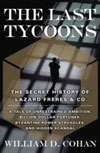 The Last Tycoons: The Secret History of Lazard Fréres & Co.
The Last Tycoons: The Secret History of Lazard Fréres & Co.
By William D. Cohen
Doubleday, 2007
I won’t lie to you: at 742 pages, this book requires a real commitment. And despite its subtitle — “A Tale of Unrestrained Ambition, Billion-Dollar Fortunes, Byzantine Power Struggles, and Hidden Scandal” — it’s not exactly a page-turner. Why would a mild-mannered college president start, and then persevere to the end of, this book? I read it for several reasons. First, it was recommended to me by an Ole who is in the investment banking business. Second, I wasn’t entirely sure what investment banks do, and I thought it would be good to know. Third, the history of Lazard is intertwined with some memorable moments in recent American history, including the Watergate scandal, the rescue of New York City from bankruptcy in the 1980s, and the flood of mergers and acquisitions that reshaped the landscape of corporate America in recent years.
Finally, though, the most compelling aspect of this book for me was Cohen’s analysis of the philosophy of governance at Lazard and his study of how that shaped, for better or worse, the leadership at the firm. For most of its history, Lazard operated, in the words of one of its partners, not as a partnership but rather as a “sole proprietorship with fancy profit sharing.” One person had the unilateral ability to determine who would be a partner and to set compensation for the partners. Lacking any form of transparent corporate governance, Lazard became, in Cohen’s account, a collection of fiercely independent individuals who were highly motivated by their individual goals and wealth ambitions but only loosely held together by an all-powerful leader. It relied on the “Great Man” model, by which clients would come to the firm because of the pre-eminent ability and reputation of its partners (Felix Rohatyn was the classic example of this model in operation) rather than, for example, by the firm’s ability to bring together resources from across its operations to assist a client. The story told in this book is essentially the story of how Lazard flourished — or not — for most of its history as a result of this governance model.
The analysis of Lazard’s leadership model in this book is surprisingly relevant to colleges and universities. There, too, you have very smart, fiercely independent individuals, many of whom have been trained in a highly individualistic research environment, and many of whom have something equivalent to the ownership stake of partners in a business through the awarding of tenure. Colleges and universities don’t have all-powerful leaders of the kind Lazard had, but I think it would be fair to say that they nevertheless experience the same tensions between the aspirations and prerogatives of individuals versus the needs of the organization as a whole. It’s the same set of leadership challenges.
So, on a snowy Minnesota day like the one outside my window as I write this, a person with a warm fire to sit by, time on her hands, and a certain amount of perseverance, might like to pick up this book. It raises important issues.
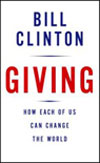 Giving. How Each of Us Can Change the World
Giving. How Each of Us Can Change the World
By Bill Clinton
Alfred A. Knopf, 2007)
The most interesting book I read last year was “Who Really Cares” by Arthur C. Brooks, a scholarly study of philanthropy in America that comes to some surprising conclusions. So, when I saw Bill Clinton’s book at the Northfield Library, I was eager to read another book on the subject. “Giving” isn’t as substantive a book as “Who Really Cares,” but then it isn’t trying to do the same thing.
Clinton’s book is an exhortation, not a study. It argues that “almost everyone — regardless of income, available time, age, and skills — can do something useful for others and, in the process, strengthen the fabric of our shared humanity.” The purpose of this book, then, is to provide examples, encouragement, and inspiration for readers who are looking for ways to give. It’s divided into chapters on giving money, giving time, giving things, and giving skills. These chapters are full of inspirational examples of ways others, rich and poor, young and old, have found to give. Clinton also provides resources for people looking for particular avenues for their philanthropy, one of which I plan to take advantage of myself.
But this is only half the book. The following chapters take a more macro look at giving, and they were the most interesting to me, in particular those on “Gifts of Reconciliation and New Beginnings,” “Giving to Good Ideas,” and “Organizing Markets for the Public Good.” I recommend these chapters in particular for the reader who is looking beyond his or her own personal philanthropy to ways that our world could be organized differently to promote the general welfare.
I realize that not everyone admires the former president, and those who don’t will find some passages in this book irritating, especially those where Clinton comes off as self-serving or detours into a defense of people and policies from his administration.
Overall, though, the aims of this book are worthy and certainly timely: to inspire philanthropy and to provide resources for those who want to give. I warrant that every reader will profit from this book in thinking about his or her own philanthropy.
I did.
Back to the Bookshelf
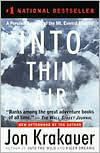 Into Thin Air: A Personal Account of the Everest Disaster
Into Thin Air: A Personal Account of the Everest Disaster
By Jon Krakauer
First published by Villard Books, 1997
Anchor Books paperback edition, 1998
This is a thrilling adventure book that tells the story, from the point of view of one of the climbers, of an ascent of Mount Everest in 1996 that ended disastrously in the loss of many of the members of the party. Apart from the excitement and horror of the story, I found myself most interested in thinking about exactly what the book was aiming to do.
Krakauer calls it a “Personal Account,” and the key word there, of course, is “Personal.” To the extent that any of us really knows why we do what we do, the narrator is able to explain why he goes on this trip, why he makes the choices he does at any given point, and how he feels about what is happening. On the other hand, one of the effects of high altitude is impairment of the cognitive functions, so there are times in the narrative when the narrator was in no position to understand what was happening around him, and even after the events are over he sometimes has to depend for information on his memory distorted by altitude sickness. Furthermore, the narrator has to make inferences and assumptions about what motivated other characters in this story to behave as they did. Why did his expedition leader not abandon the ascent at his firm deadline for turning around? The narrator wasn’t there when that decision was made, and the trip leader died on the mountain, so we will never know. So, “Personal” here can also be read as “partial” or “incomplete” as, indeed, all personal narratives necessarily are.
You could also think of this book as an Apology, not in the modern sense of an expression of regret but in the older sense of a defense of one’s actions (think of Cardinal Newman’s great Apologia Pro Vita Sua in which he explained and defended his conversion from the Church of England to Catholicism). For, the fact of the matter is that the narrator was one of the few in his party to survive the ascent of Everest, and as he himself says in this book, choices that he made along the way may well have contributed to the fate met by others in his party. He admits to suffering from “survivor guilt,” and it appears that one of the purposes of the book is to expiate that guilt.
This is where it gets tricky. Krakauer offers his “Personal Account” as an honest, self-critical narrative of what happened on the mountain, but it struck me in the reading as having elements of the Apology as well. There’s nothing wrong with defending oneself, of course, but it’s better to acknowledge that purpose up front.
But that’s what’s interesting about this book. It is a compelling account, with complicated purposes, of an exciting and sad story told by one of the participants. I recommend it.
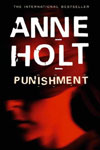 Punishment
Punishment
By Anne Holt
Trans. Kari Dickson
London: Sphere (published in Norwegian 2001; English translation published 2006)
This excellent crime novel was a gift from my friend Einar Vannebo, who directs the University of Oslo International Summer School, with which St. Olaf has a long and strong relationship. Einar gave me this book on the eve of my departure from a week in Oslo to return to America. It was the perfect gift for someone going on a long flight. I began it in Oslo and finished it somewhere over the Atlantic. I recommend it heartily.
In Punishment all of Norway is shaken by a series of abductions, and murders, of children. The children disappear, and then later their bodies are sent to their mothers with the message “Now you’ve got what you deserved.” Police Superintendent Adam Stubo is on the hunt for the killer, and he recruits Johanne Vik, an academic psychologist with a law degree, to help him. Both Stubo and Vik have tortured pasts. Stubo’s wife and daughter were killed in a freakish home accident, leaving him with a grandson. Vik is divorced, sharing custody of her daughter who, while clearly bright and sensitive, exhibits abnormal symptoms and behaviors that psychologists cannot diagnose. She was trained in the States as an FBI profiler, and something bad happened that is not revealed in this novel that brought her back to Norway and into a different career. You can see where this is headed: two unhappy single people with children they love coming together to hunt a serial child murderer. The hunt for the killer and the developing relationship between Stubo and Vik become one story.
This intricately plotted novel has an extraordinary ending, which I won’t give away. Its mood is dark, the plot is horrific, and the main characters stumble awkwardly toward both the solution to the crime and a new understanding of themselves. It’s a great read.
(If you’ve been to Oslo, you’ll enjoy the local color.)
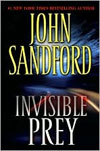 Invisible Prey
Invisible Prey
By John Sandford
G. P. Putnam’s and Sons, 2007
John Sandford, a Minnesota writer, is the author of one of the great series of detective novels currently underway: the Prey series. Invisible Prey is the seventeenth novel featuring Lucas Davenport, formerly of the Minneapolis police and now with the state Bureau of Criminal Apprehension. This novel has many of the features that make Sandford’s Prey novels so fun: lots of references to places in Minneapolis and St. Paul; new developments in the relationship between Lucas and his wife Weather, a plastic and reconstructive surgeon who once had to perform an emergency tracheotomy on him with a knife; further depth to the portraits of Lucas’ law enforcement colleagues; Sandford’s characteristic embedding of the pursuit of criminals in a cynical political environment; the “cop talk” between Lucas and his friends. This is the second Prey novel in which one of the Northfield colleges plays an important role. In a previous novel, Broken Prey, the victim of a particularly gruesome crime was a faculty member at St. Olaf, and there was a suspenseful search around Northfield that locals could easily follow with their knowledge of nearby roads. This time it’s Carleton that features in the plot. (I can’t say more without giving away too much about the ending.)
This wouldn’t be the book for those who abhor vulgar speech or plots that involve some nasty sex. But if you take those elements as part of the landscape in hard-boiled crime fiction, and if you like crime fiction, this is a great read.
 Einstein: His Life and Universe
Einstein: His Life and Universe
By Walter Isaacson
Simon and Schuster, 2007
My friend Professor Gary Stansell in the St. Olaf Religion department recommended this new biography of Einstein. I recommend it to you. At 551 pages, excluding the notes, it requires a commitment from the reader, but the commitment is worth it. To be quite honest I was less drawn to this biography by the sciencethough its interesting and importantthan I was by the world that shaped Einstein and that, in turn, he helped to shape. One key theme of the book is Einsteins rejection of nationalism, chauvinism, and authoritarianism that manifested itself early in his life and characterized his approach to learning, to science, and to politics. Another is Einsteins reputation for being emotionally distant to his family and friends. As Isaacson observes, Einstein was … good and flawed, and the greatest of his failings came in the realm of the personal (p. 518). Certainly, he was not a model husband or father, though he was apparently could be a warm and generous friend. Einsteins complex and changing attitude towards Judaism and his own Jewishness is a fascinating aspect of this narrative.
It turns out Einstein was an advocate for liberal learning. In a very amusing passage, Isaacson recounts a passing remark of Einstein that is relevant to us at St. Olaf. Apparently Thomas Edison disparaged American colleges as too theoretical. So, he devised the Edison test for job applicants that required applicants to demonstrate their practical knowledge by answering factual questions. The Governor of Massachusetts at the time, Channing Cox, was asked some of these questions. Here are the questions and his replies: Where does shellac come from? From a can. What is a monsoon? A funny-sounding word. Where do we get prunes. Breakfast. Reporters tried to get Einstein to take the Edison test, but he refused, saying, The value of a college education is not the learning of many facts but the training of the mind to think (p. 299). He was certainly correct.
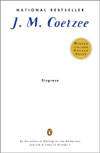 Disgrace
Disgrace
By J. M. Coetzee
First published 1999; Penguin Books, 2000
My wife, Priscilla Paton, brought this novel along on our vacation. Shes writing a book on humans and animals, a major theme of Disgrace. The book was there, so I read it, too.
This is a novel about many things: the tensions between men and women, children and parents, youth and age, whites and blacks in South Africa, humans and animals. Its about the academy, about predatory seduction, about violence—especially sexual violence—and about history. Coetzees challenge in this novel, it seems to me, is unifying these many themes. Perhaps because Im a white middle-aged male academic, I think that the unifying element in the novel is the story of the protagonist, a white middle-aged academic named Professor David Lurie. Lurie is having a mid-life crisis. He is uninterested in and uninteresting to his students and colleagues, and he has no passion for his discipline. His book manuscript has stalled. His marriage has failed. He finds sexual release through an escort service specializing in exotic (i.e. black) women. He responds to his mid-life crisis in the worst possible way: by seducing a student. Thrown out of his job, he is gradually stripped of all of the appurtenances of his middle-class life, his intellectual pretensions, his comforts and security. He goes to live with his daughter on a farm, where terrible things happen. Like King Lear, he is reduced to his elemental self. This is a grim novel, but it is written in beautifully spare and powerful prose. Reviewers have spoken of its tenderness. I dont see tenderness, but I admire Coetzees remorseless clarity.
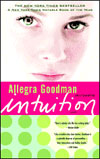 Intuition
Intuition
By Allegra Goodman
Dial Press, 2006
There is a funny blurb on the back cover of this novel by Maureen Corrigan, who reviews fiction for National Public Radio: Ive got a new comeback to those who dismiss contemporary fiction. Im just going to hit them over the head with Allegra Goodmans new novel, Intuition, and hope it knocks some sense and humility into them. I think Corrigan overstates the case, but I enthusiastically recommend this novel.
Intuition, set in a cancer research institute in Boston, takes the culture of scientific research as its topic. The main characters are the two Principal Investigators who run the lab and the various post-docs who do most of the work. One of the post-docs comes up with some remarkable experimental results which, if replicable, could potentially bring fame to him and his lab, vast grant dollars to the PIs, and—more to the pointhope for cancer victims. Are these results too good to be true? At what stage in the process of verifying them should they be publicized? What process of verification should be used, and who should do the verifying of those results? Can something be true because you so badly want it to be? How do youindeed can you?—separate pure motives from selfish ones when you throw love into the scientific mix? How can so many smart people behave like this?
This novels omniscient narrator spends time inside the heads of each of the characters, alternating from one to another without, like the narrator of Tom Jones to take a famous example, providing a meta-narrative that judges those characters. Readers are thus thrown back on their own resources to evaluate the characters as the narrative progresses. This is a good thing.
The narrative is compelling, the characters are complex, and the tone is judicious. Its a good read.
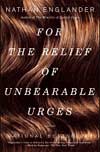 For the Relief of Unbearable Urges
For the Relief of Unbearable Urges
By Nathan Englander
Vintage Books, 1999
For the Relief of Unbearable Urges, a gift from St. Olaf Regent Nancy Anderson, is a collection of nine short stories that each take as their subject the Jewish experience, though each story approaches that subject in a different way. “The Tumblers” tells the story of a group of hassidim who accidentally board a circus train instead of the train to the death camps and end up escaping the Holocaust by pretending to be acrobats. It’s as funny as a story about the Holocaust can be. In another, “The Gilgul of Park Avenue,” a non-observing Christian suddenly believes that he is Jewish, much to the consternation of his wife. It is a funny and touching story about religious belief and about marriage. “The Wig” is a sensual story about a woman’s sense of her own beauty. Others, like “In this Way We Are Wise” and “The Last One Way” are as bleak as anything you will read.
Because short fiction is — well, short — its writers need to extract the maximum value from each word. At its best short fiction is powerful because it is so economical. Every word has to matter, and every word does in Englander’s stories. This is a very fine, book, and I recommend it to you.
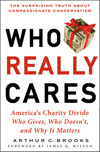 Who Really Cares
Who Really Cares
By Arthur C. Brooks
Basic Books, 2006
I was led to Brooks’s study by an article in The Wall Street Journal that discussed his conclusions. Because one of a college president’s important responsibilities is gathering resources to enable the college to accomplish its mission, I spend a lot of time thinking about philanthropy in general and asking people to extend their personal philanthropy to St. Olaf College. This, I thought, is a book I should read.
Brooks, an economist who teaches at Syracuse University, makes a striking argument based on his analysis of numerous data sets: that religious people are much more charitable, both with money and in volunteerism, than non-religious people; that people who believe that income inequality is a problem and who believe that the government is responsible for equalizing income (for example, through a progressive tax system) give far less than people who believe differently; and that habits of charitable giving most frequently emerge from intact families where charity is taught and modeled. Because politically conservative Americans are more likely than politically liberal ones to be religious and to be skeptical of the role of the government in economic affairs, political conservatives are far more personally charitable than political liberals. Religious liberals are personally charitable at the same rate as religious conservatives; the problem is that there are far fewer of them. The working poor, Brooks notes, give very generously in proportion to their family income.
Apparently, according to Brooks, those who believe that the government should address the disparity of wealth in America actually substitute this belief for personal charity, which is why their giving of time and treasure is so low. (An appendix to the book names the data sets Brooks used in his analysis and discusses his use of them.)
Brooks also offers in passing a helpful metaphor to describe the role of charitable institutions, like St. Olaf, in the broader economy of philanthropy. “Most of us rely on reputable charitable institutions to steward our donations properly to create the social value we seek. [Non-profit organizations] are the conduit between those who need services and those who need to give” (p. 54).
Another fascinating aspect of this book, Chapter 7, sets forth the research that shows personally generous individuals are, on average, happier and live longer than the less generous sector of the population.
This is one of the most provocative books I have read in a long time, and I recommend it to you.
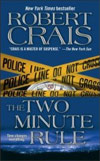 Two Minute Rule
Two Minute Rule
By Robert Crais
Pocket Star Books, 2007; published in hardcover, 2006
I know that as the president of one of America’s great colleges I should be spending my time thinking deep thoughts about the future of St. Olaf and of American higher education in general, but from time to time circumstances just call for a good crime novel. I was in an airport bookstore last week and my eye fell on a new novel by one of my favorite detective writers, Robert Crais. Crais writes the Elvis Cole novels about a hip detective in Los Angeles and his scary friend Joe Pike. The first-person narrative is very funny, the action is fast-paced, and the plotting is tight. If you like Robert B. Parker’s Spenser novels, set in Boston, you’ll probably like the Elvis Cole Novels.
The Two Minute Rule is not an Elvis Cole novel. Rather, it tells the story of Max Holman, just released from prison after serving a sentence for bank robbery. On the day of his release he discovers that his son, whom he has never really known and who is now an L.A. cop, has been gunned down. None of the official explanations of what happened make sense, so Holman sets out to expose the killer himself. In an interesting twist he joins forces with the F.B.I. agent who arrested him on the bank charges. It’s a great read with an exciting conclusion.
The Two Minute Rule governs bank robberies, by the way: if you’re a bank robber you need to get in, get the cash, and get out within two minutes or you’re done for.
Crais has also begun writing Joe Pike novels, and this edition of The Two Minute Rule includes a teaser from the new Pike novel The Watchman. I’m looking forward to that.
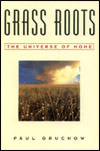 Grass Roots: The Universe of Home
Grass Roots: The Universe of Home
By Paul Gruchow
Minneapolis: Milkweed Press, 1995
Grass Roots is a collection of essays, many of them autobiographical. Thus, it is a book about many things, but at the end of the day it strikes me as a celebration of the specific, the particular, the concrete, the local. The author writes eloquently about the landscape in which he grew up, naming the plants, the animals, the birds. He gives a nice account of the process of canning garden produce. I didn’t know snails had faces until I read this book. It’s fun to think about pocket gophers. There’s a discipline that flourished in the 18th and 19th centuries but is little practiced now called Natural History, and many passages in this book belong firmly in that tradition. If you like this kind of writing I recommend Gilbert White’s The Natural History of Selbourne (1788) which is readily available in paperback.
Gruchow argues persuasively for the benefits of humans finding their place within their environment rather than re-shaping the land based on their vision of how it should look or what it should produce. He has scant patience for corporate farming, government farm programs and the agronomists, economists, and geographers who help shape them, literary theorists and anyone else who hasn’t anchored their thinking in the realities of place. There’s a great chapter on an encounter with a grizzly bear and a moving final essay on bones.
I won’t lie to you: I found the book a little cranky at times. But these are fine exemplars of the genre of the personal essay, and I’d encourage you to read this collection.
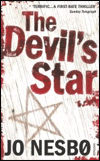 The Devil’s Star
The Devil’s Star
By Jo Nesbo
Trans. Don Bartlett
London: Harvill Secker (published in Norwegian 2003;
English translation published 2005)
The Oslo newspaper Aftenposten is quoted on the back cover of this book as claiming of Jo Nesbo’s novels, “There are no better crime novels being written.” That’s quite a claim, but it may be correct. The Devil’s Star was a gift of my new friend Einar Vannebo, who directs the University of Oslo International Summer School with which St. Olaf has had a long and strong relationship, and it is one of the best detective novels I have read in years. It features Harry Hole, detective for the Oslo police. Making imaginative use of all of the conventions of the “tough guy” detective novel, The Devil’s Star tracks Harry’s pursuit of a serial killer during a long, hot, Oslo summer. In the course of catching this creepy murderer, Harry also uncovers corruption in the department, loses and then wins the affection of the lovely Rakel, and gains the upper hand on his drinking problem. If you like hard-boiled crime fiction, this book is for you, but it is not for the faint of heart.
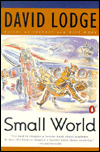 Small World
Small World
By David Lodge
Penguin Books (first published by Secker and Warburg, 1984)
This book was a Christmas present from my wife, Priscilla. The author, David Lodge, has written a series of absolutely hilarious novels about academics and academic life. Small World is his most famous one, and I must be about the last English professor left who hadn’t read it. When I was in college and graduate school Kingsley Amis’ novel Lucky Jim was pretty much universally regarded as the funniest academic novel. Small World bears that accolade for this generation. Like Lodge’s other academic novels, it hilariously exposes pomposity, self-serving, self-importance, and pettiness. Also like his other novels, it does so with a generosity of spirit that keeps the satire from being mean when it would be so easy to veer in that direction. Read it, and you’ll never think about academic conferences in the same way again.
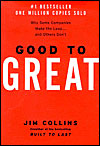 Good to Great: Why Some Companies Make the Leap … and Others Don’t
Good to Great: Why Some Companies Make the Leap … and Others Don’t
By Jim Collins
Harper Collins, 2001
Good to Great sounds like a business book, but in reality it studies organizational effectiveness, and many of its insights appear to me to be transferable to colleges. American higher education does many things well, but systematic self-scrutiny of colleges as organizations isn’t what we’re best at. I read this book in hopes of seeing what St. Olaf could choose to do differently to become an even better intensely residential liberal arts college of the Lutheran Church. At its core, the book’s most important message may be that complacency poses the greatest threat to successful organizations, and its most valuable information is a set of strategies to prevent complacency for locking you into the status of “pretty good.”
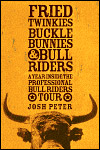 Fried Twinkies, Buckle Bunnies, and Bull Riders: A Year Inside the Professional Bull Riders Tour
Fried Twinkies, Buckle Bunnies, and Bull Riders: A Year Inside the Professional Bull Riders Tour
By Josh Peter
Rodale, 2005
One day this fall I walked into Buntrock Commons and was surprised to see deep-fried Hostess Twinkies being given away. What can this mean? Have our friends in St Olaf’s excellent food service, Bon Appétit, gone mad? But opportunities like this don’t come your way every day, so I sampled a twinkie. There I met Josh Peter. It turns out the twinkies were part of the promotion for his book that recounts a year on the professional bull riders tour. I bought it and read it. You should, too. There’s a whole world out there we don’t know about. Josh’s account is fascinating, right down to the tension-filled finals to determine who will be the champion rider that year.
Josh is married to a distinguished St. Olaf alum, Vanessa Trice — another reason to read the book!
 Firewall
Firewall
By Henning Mankell
Translated from Swedish by Ebba Segerberg
Vintage Books, 2003.
This is the second Mankell novel I’ve read featuring his series detective Kurt Wallander, a police detective in a town in Sweden. Like The White Lioness (see below on my bookshelf) this novel begins with a local crime, but as the story unfolds an international conspiracy unfolds with it. The novel is as much about the detective as it is about the crime. Wallender is still plagued by angst, and his love life hasn’t improved much either. He is the object of an internal police investigation for striking a witness, and he places an ad with a dating service. Not as compelling as The White Lioness.
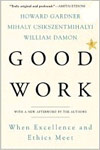 Good Work: When Excellence and Ethics Meet
Good Work: When Excellence and Ethics Meet
By Howard Gardner, Mihaly Csikszentmihalyi, William Damon
Basic Books, 2001
Everyone should read this book. Three prominent psychologists collaborated on this study of “good work” which they define as work that is both at the highest level of the standard for the profession and thoughtful about the responsibilities and implications of the work that is being done. The opening and closing chapters contain profound insights for workers in any profession. The middle section of the book focuses on two particular professions — genetics and journalism — which are each in particularly dynamic situations with regard to challenges to “good work.” There are important insights here for college presidents.
You must be logged in to post a comment.